You are using an out of date browser. It may not display this or other websites correctly.
You should upgrade or use an alternative browser.
You should upgrade or use an alternative browser.
Three weeks in North Africa driving as far south as latitude 23
- Thread starter thebigblue
- Start date
thebigblue
Adventurer
Great story that just keeps getting better.
Was this a arranged trip or were you a bunch of friends hiring a guide. Maybe you mentioned it somewhere in the text but I missed it.
Paul from OneLife Adventure arranged it, I just signed up - been with him before to Morocco and WS, he is a great guy and a competent guide actually we had a Swede with us on this trip (the blue Defender)
thebigblue
Adventurer
Day 10
At the exact minute we took off from camp this morning the rain started again. It had rained all night and only paused a few hours while we packed up and had breakfast, the desert-base now began to reveal some scattered puddles of water.
After driving for some 30 minutes the skies went dark as ash, way darker than you would like to experience, and the light from the sun had a hard time shining through to illuminate our path. And then without any further warning all hell broke loose and the heavens opened it´s sluices, it was truly a near tropical rain-storm, - we were still some kilometers north of the tropical-line. At one point the rain and winds got so hefty that we could not see where we were going; we simply had to park on a hilltop and wait for awhile.
Ten minutes later the storm had settled down a bit and we could drive on, although the rain still purred down, a truly rare sight in the desert. After some challenging true off-road driving on slippery stones and rocks we located a piste that from time to time resembled a river way more than a track. The progress on the piste started to get really difficult due to the amount of water on the track as well as crossing it, and then also because of the sticky mud. Finally we had to bail out and take a break, water and mud was beginning to stress our vehicles to much. From a small hillside we watched a nearby wadi transform from being a dry, dusty and empty recess into a wild river within minutes; flooding bushed and trees. A somewhat scary experience. A bit further upstream a waterfall was reborn, the color of the water cascading down over the cliff resembled hot chocolate more than water.
In order to make any reasonable progress we had to search for higher ground, - we decided to take an early lunch-break to give the rain-storm a chance to settle down a bit, - hopefully. After lunch the rain dropped in intensity and then finally stopped, the sky gradually regained that more blueish color we had become so familiar with during the last two weeks. But the terrain had changed into a maze we could not recognize, all the wadis had changed from a tinny dusty valley into a sticky collection of water and mud; trapping vehicles time after time. At one point I were preoccupied with repeatedly driving from stuck truck to another stuck one to pull them out of their misery, it lasted several hours. My five meter long non-kinetic tow-strap and Paul´s kinetic rope took a lot of beating. Ken in his Defender and I were the only ones whom got though this day without getting stuck.
Sometime during all this drama Paul´s Land Cruiser 80-series decided that it did not want to cooperate any longer, and a well-worn CV-joint gave in to all the stress, reducing the vehicle from a capable off-road vehicle to a heavy truck with just a rear wheel-drive. Not something you would wish for under these circumstances, but then a CV always collapses when you need it the most.
Finally when Steve´s 100-series, Paul´s 80-series and later Thomas´ Defender 110, the only one with mud-terrains, got stuck more or less in the same small wadi we all looked at each other with frustration and despair in our eyes. During the many hours of fighting the mud in the Western Sahara we had barely traveled five kilometers over ground, and out of those only one in the direction we were heading.
The clock had just passed 1.30 pm. when we decided to set up camp on a fairly high leveled stone-filled plateau that still were somewhat dry, and also looked safe from any further rain-storms and floods coming down from the mountains. We so badly wanted the wet desert to have some time to soak up some of the fluid and dry out the mud in order to make driving more realistic again. The early afternoon in camp also gave Paul a fair chance to repair his CV-joint and thus regain all-wheel-drive; a job that would take the rest of the day and finished just a bit after sunset.
With lots of spare-time available people began to do a bit of maintenance work on their trucks; I had no real issues to deal with so I decided to have a beer. After a while I got a bit bored, so Thomas and I decided to empty a Jerry-can worth of fuel into each of our main tanks to extend our range a bit. I also grabbed the opportunity to clean my air-filters from dust.
Although we had covered a very short distance today we had after all crossed yet another imaginary line in the desert, the tropical-line, we had entered the tropical region, another scalph in our belt. But we still had fuel and appetite to venture further south.
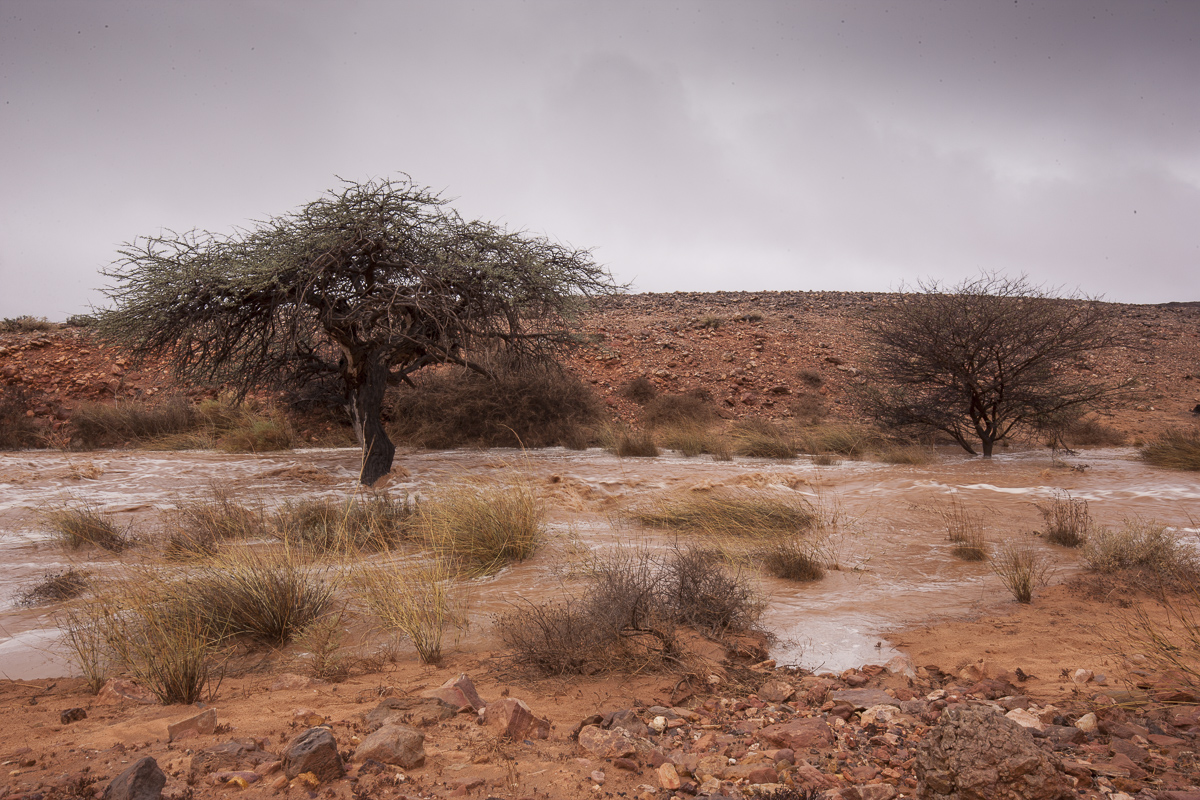
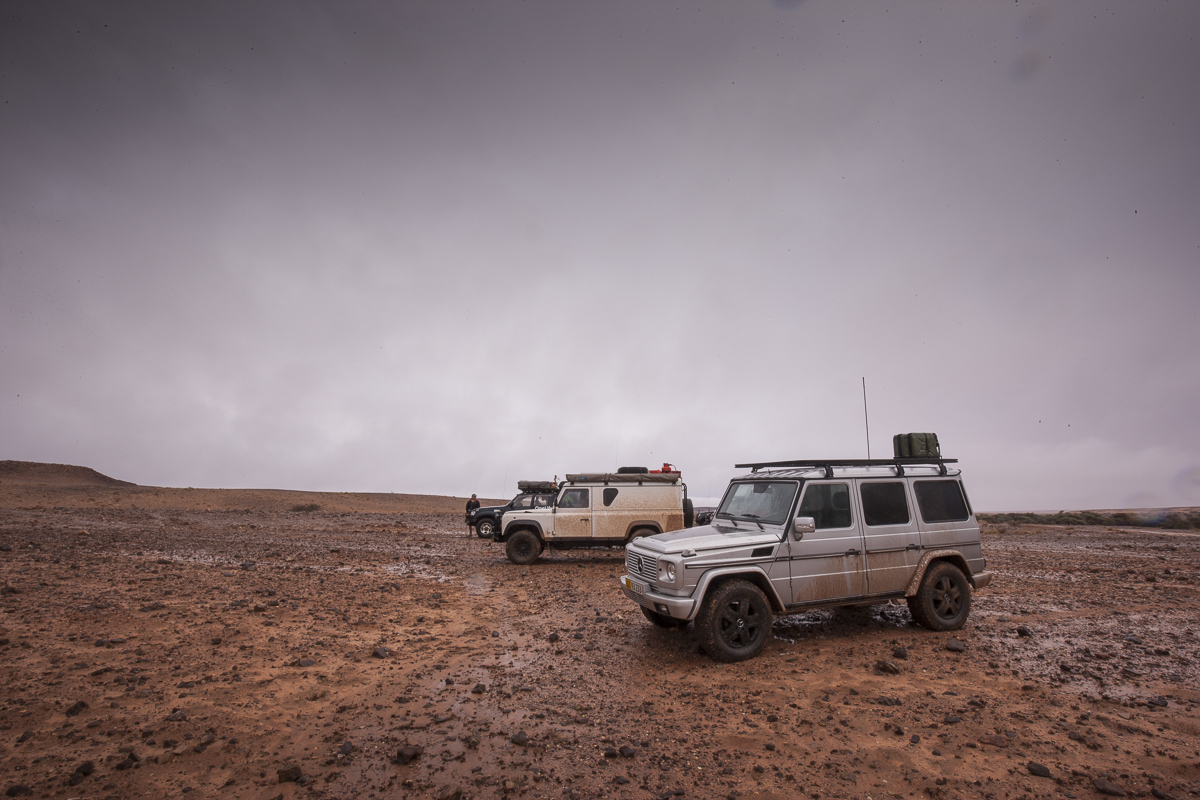
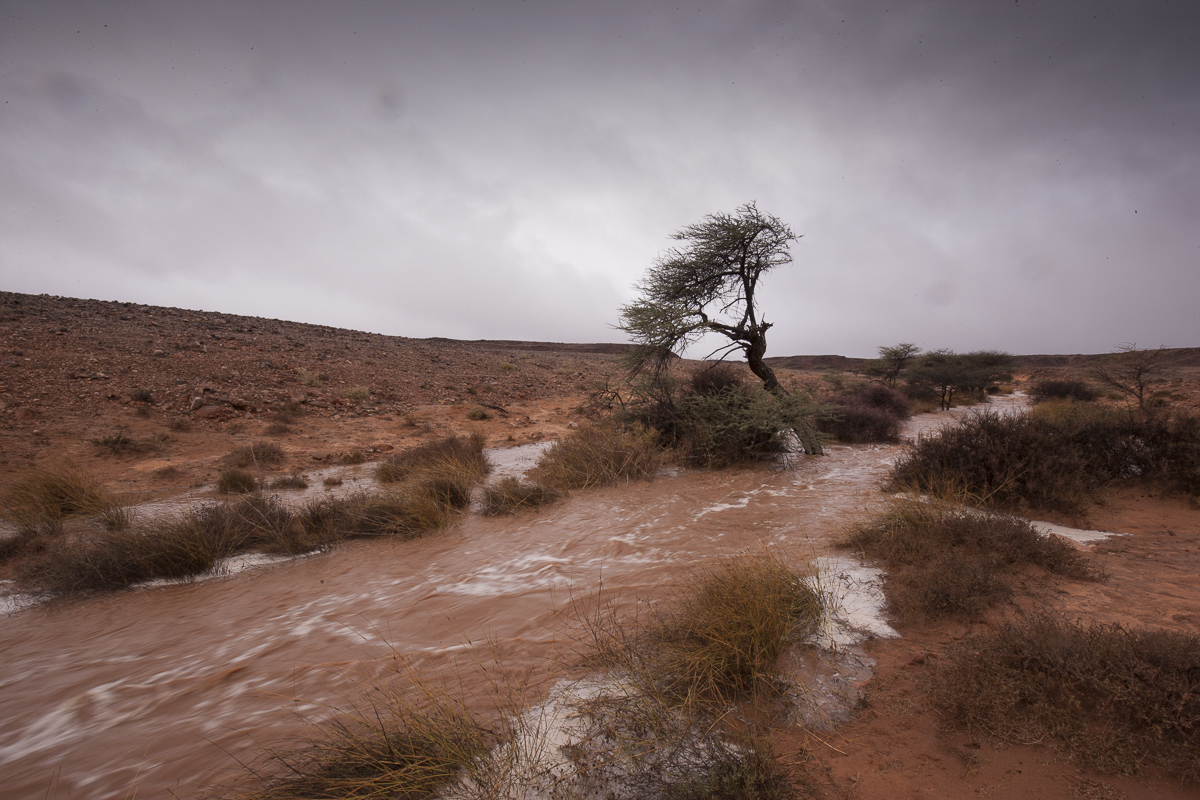
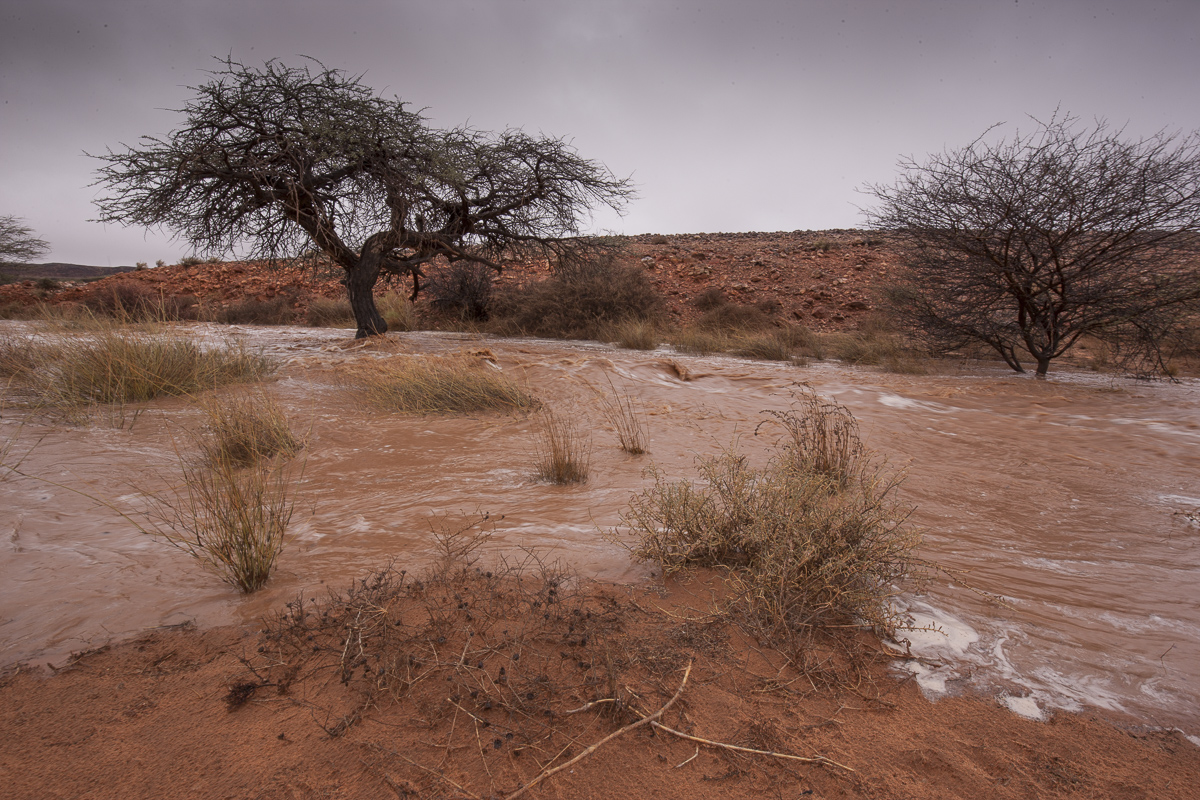

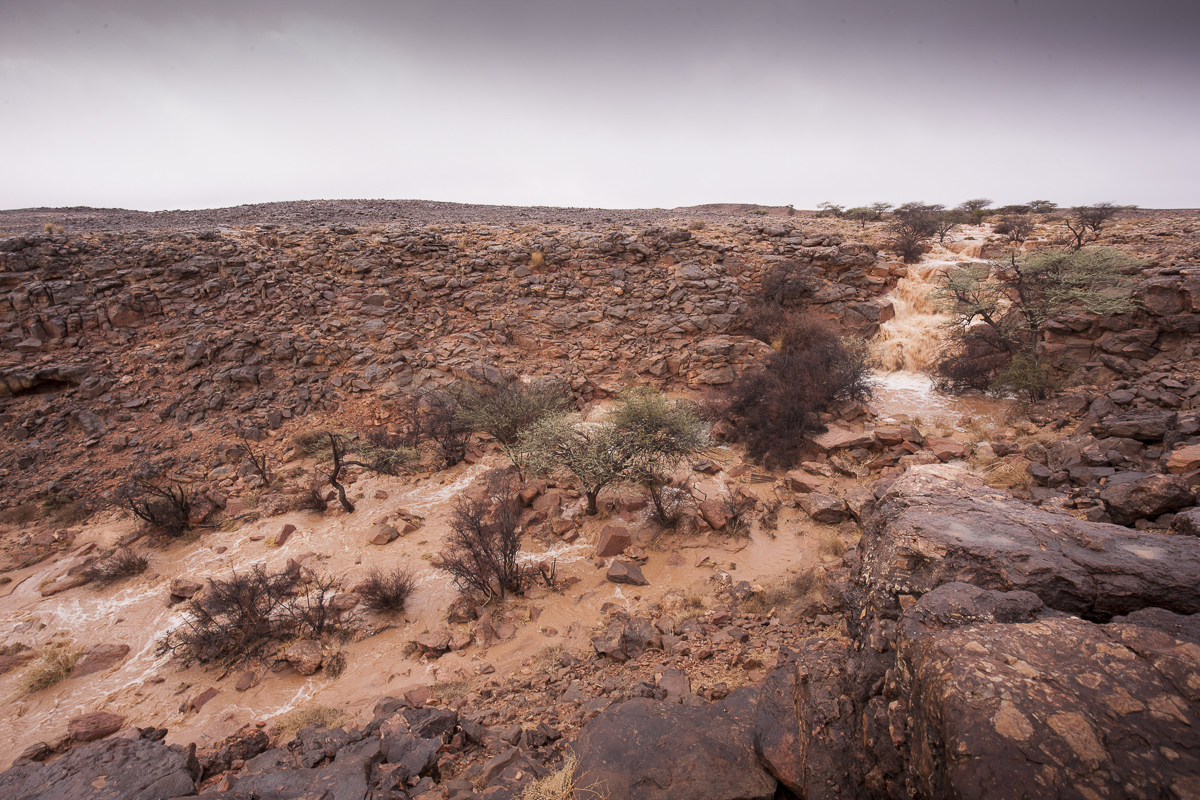




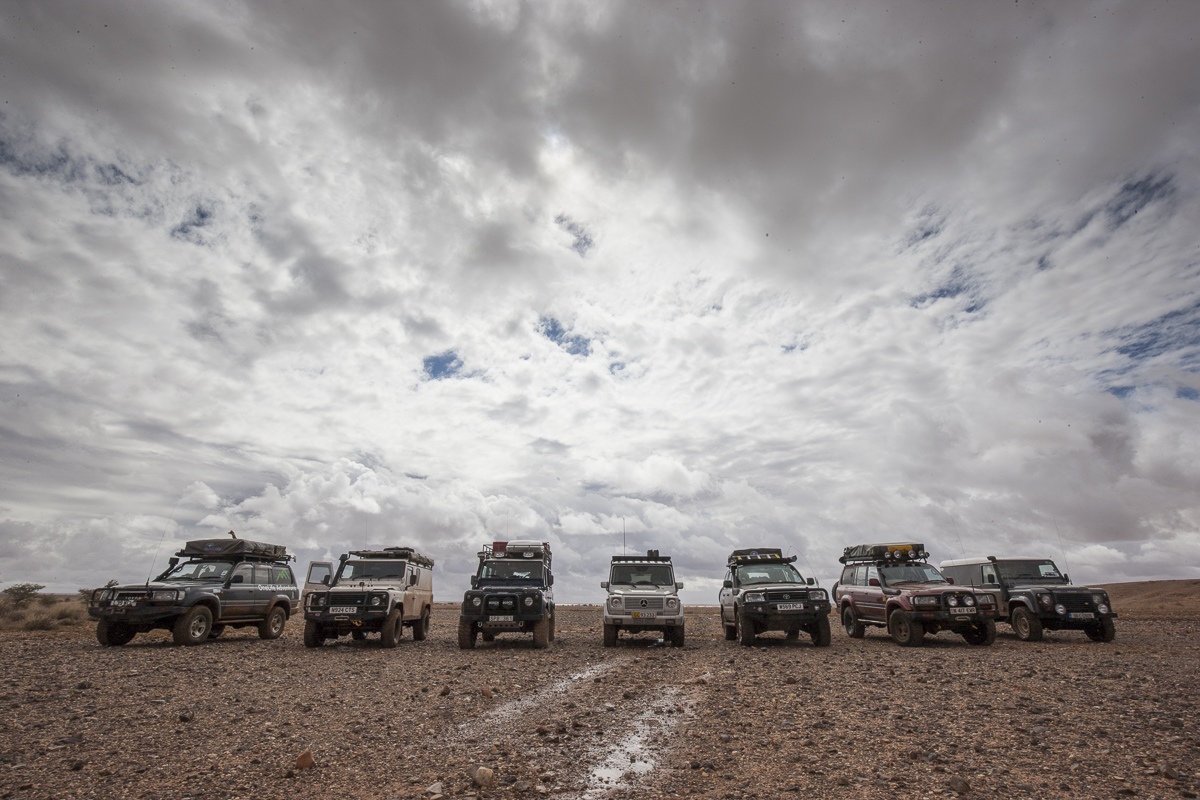
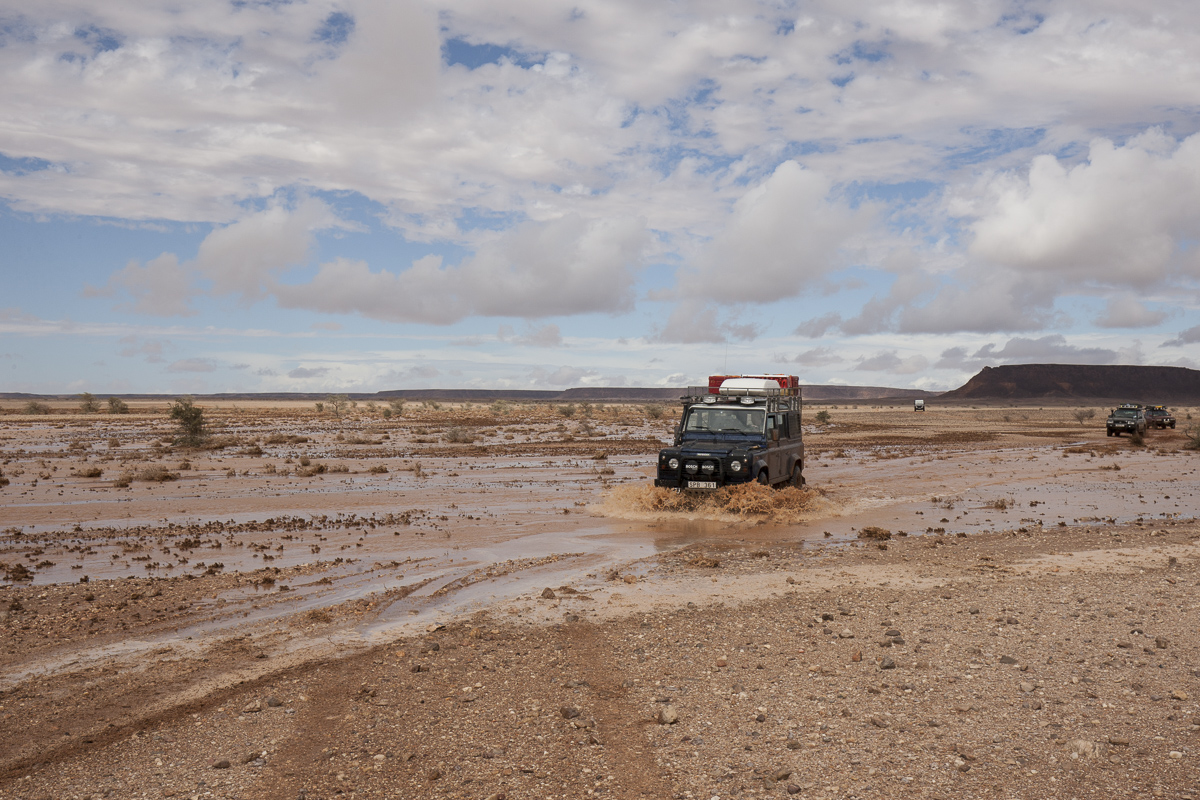
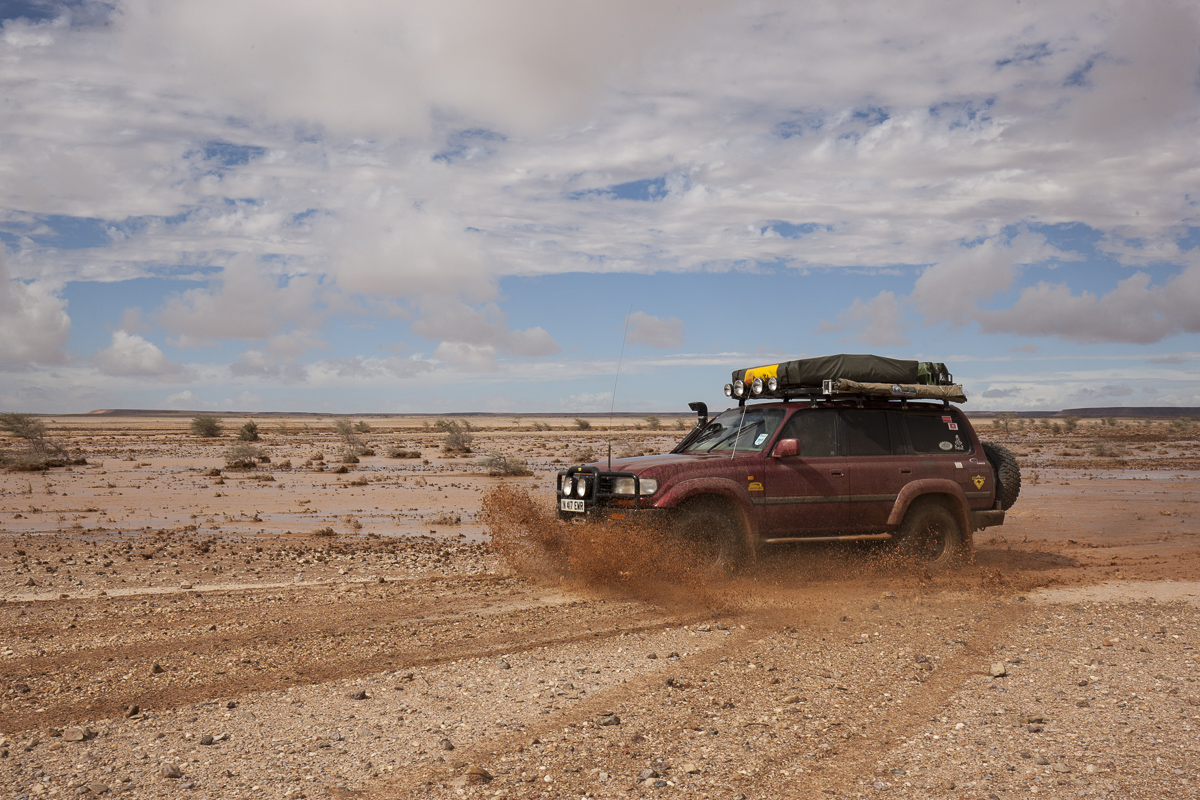
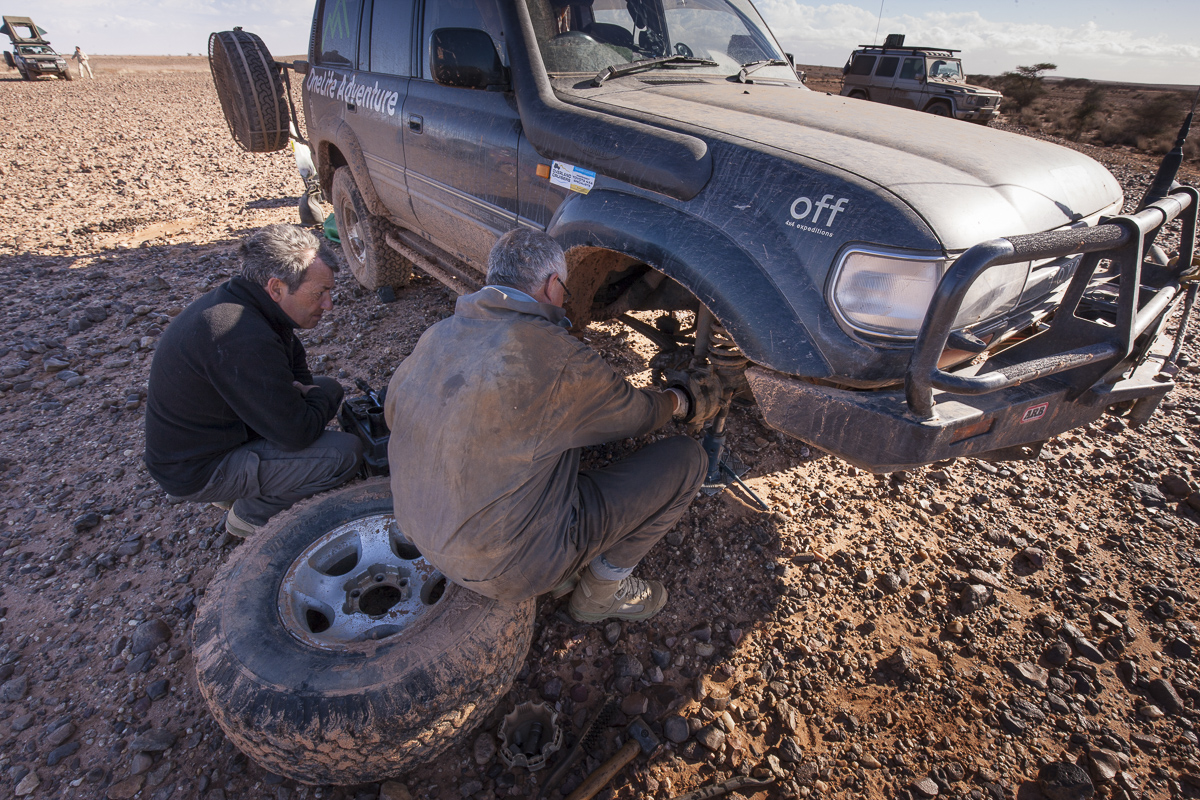
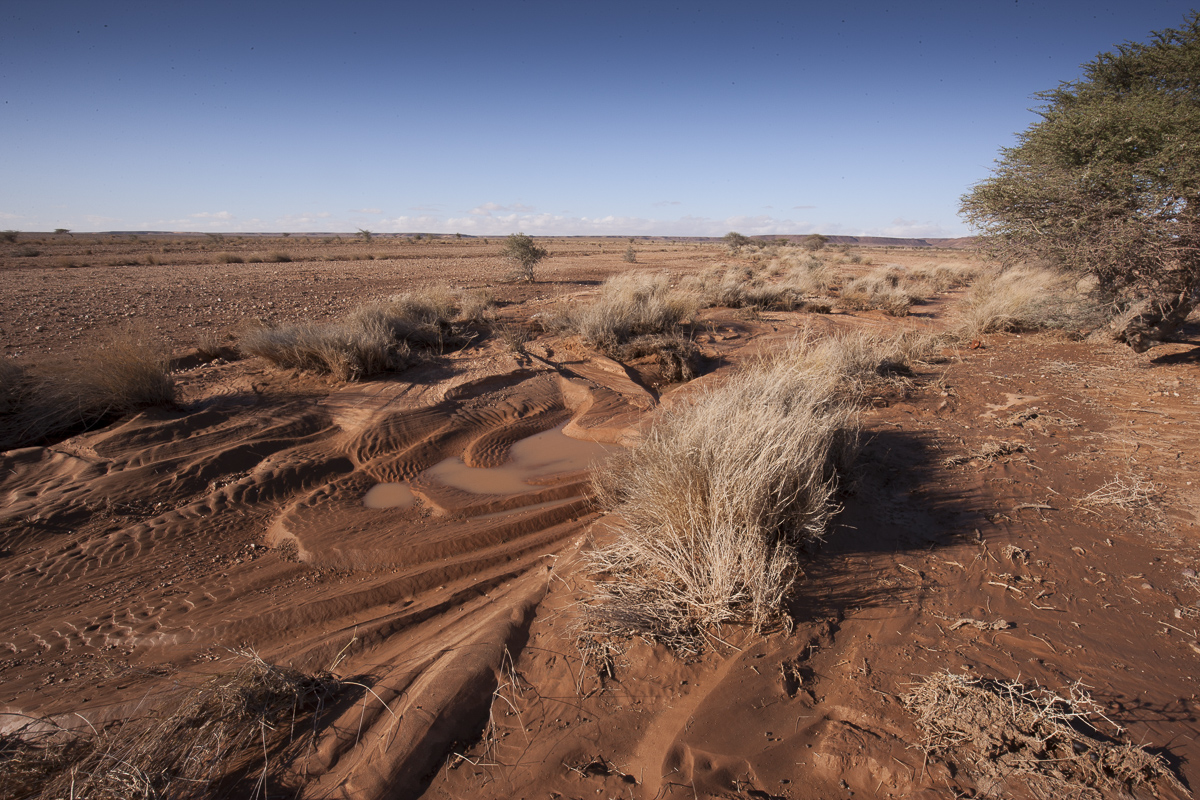
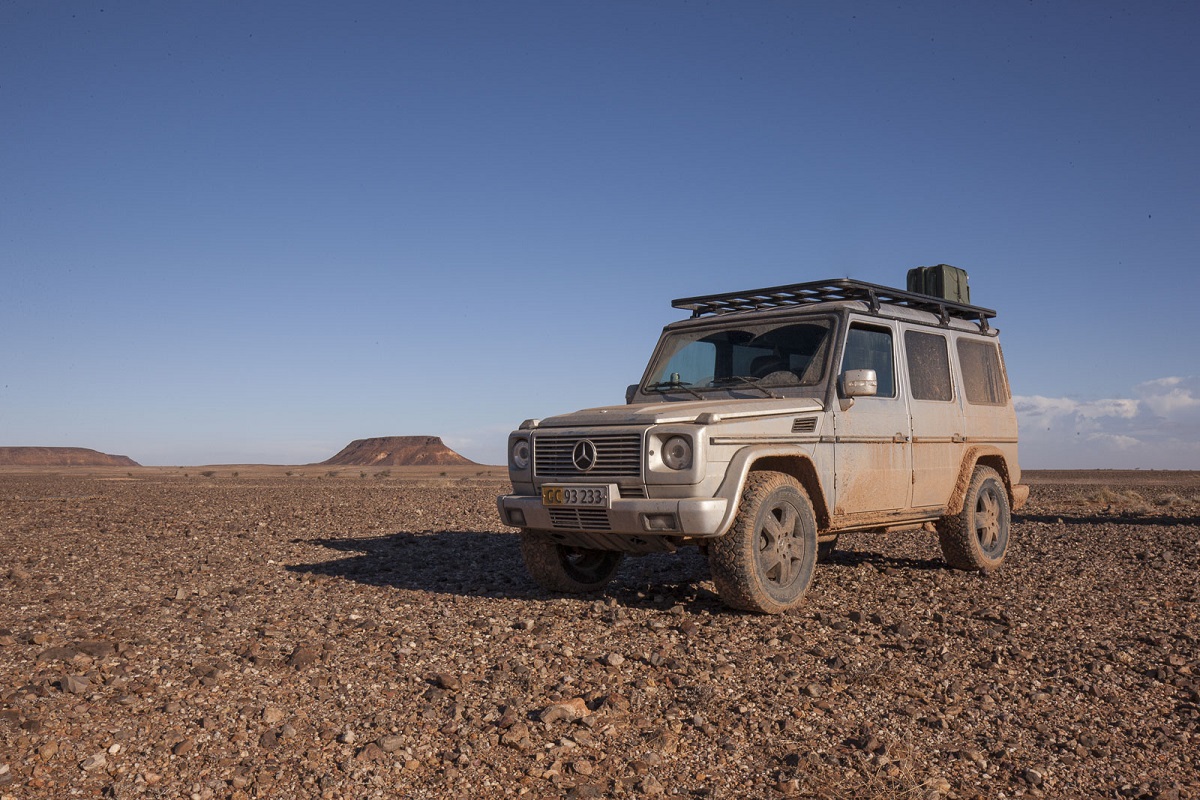
http://gwagendays.com/explore/western-sahara-15-2014.asp?id=44
At the exact minute we took off from camp this morning the rain started again. It had rained all night and only paused a few hours while we packed up and had breakfast, the desert-base now began to reveal some scattered puddles of water.
After driving for some 30 minutes the skies went dark as ash, way darker than you would like to experience, and the light from the sun had a hard time shining through to illuminate our path. And then without any further warning all hell broke loose and the heavens opened it´s sluices, it was truly a near tropical rain-storm, - we were still some kilometers north of the tropical-line. At one point the rain and winds got so hefty that we could not see where we were going; we simply had to park on a hilltop and wait for awhile.
Ten minutes later the storm had settled down a bit and we could drive on, although the rain still purred down, a truly rare sight in the desert. After some challenging true off-road driving on slippery stones and rocks we located a piste that from time to time resembled a river way more than a track. The progress on the piste started to get really difficult due to the amount of water on the track as well as crossing it, and then also because of the sticky mud. Finally we had to bail out and take a break, water and mud was beginning to stress our vehicles to much. From a small hillside we watched a nearby wadi transform from being a dry, dusty and empty recess into a wild river within minutes; flooding bushed and trees. A somewhat scary experience. A bit further upstream a waterfall was reborn, the color of the water cascading down over the cliff resembled hot chocolate more than water.
In order to make any reasonable progress we had to search for higher ground, - we decided to take an early lunch-break to give the rain-storm a chance to settle down a bit, - hopefully. After lunch the rain dropped in intensity and then finally stopped, the sky gradually regained that more blueish color we had become so familiar with during the last two weeks. But the terrain had changed into a maze we could not recognize, all the wadis had changed from a tinny dusty valley into a sticky collection of water and mud; trapping vehicles time after time. At one point I were preoccupied with repeatedly driving from stuck truck to another stuck one to pull them out of their misery, it lasted several hours. My five meter long non-kinetic tow-strap and Paul´s kinetic rope took a lot of beating. Ken in his Defender and I were the only ones whom got though this day without getting stuck.
Sometime during all this drama Paul´s Land Cruiser 80-series decided that it did not want to cooperate any longer, and a well-worn CV-joint gave in to all the stress, reducing the vehicle from a capable off-road vehicle to a heavy truck with just a rear wheel-drive. Not something you would wish for under these circumstances, but then a CV always collapses when you need it the most.
Finally when Steve´s 100-series, Paul´s 80-series and later Thomas´ Defender 110, the only one with mud-terrains, got stuck more or less in the same small wadi we all looked at each other with frustration and despair in our eyes. During the many hours of fighting the mud in the Western Sahara we had barely traveled five kilometers over ground, and out of those only one in the direction we were heading.
The clock had just passed 1.30 pm. when we decided to set up camp on a fairly high leveled stone-filled plateau that still were somewhat dry, and also looked safe from any further rain-storms and floods coming down from the mountains. We so badly wanted the wet desert to have some time to soak up some of the fluid and dry out the mud in order to make driving more realistic again. The early afternoon in camp also gave Paul a fair chance to repair his CV-joint and thus regain all-wheel-drive; a job that would take the rest of the day and finished just a bit after sunset.
With lots of spare-time available people began to do a bit of maintenance work on their trucks; I had no real issues to deal with so I decided to have a beer. After a while I got a bit bored, so Thomas and I decided to empty a Jerry-can worth of fuel into each of our main tanks to extend our range a bit. I also grabbed the opportunity to clean my air-filters from dust.
Although we had covered a very short distance today we had after all crossed yet another imaginary line in the desert, the tropical-line, we had entered the tropical region, another scalph in our belt. But we still had fuel and appetite to venture further south.
















http://gwagendays.com/explore/western-sahara-15-2014.asp?id=44
thebigblue
Adventurer
Day 11
"A mind that is stretched to a new dimension can never go back to its old dimension" (Oliver Wendell Holmes, Jr.).
This is my second visit to the Western Sahara and Morocco, my first was three years ago back in 2012. This first visit was truly a great adventure for me and I loved being in the Sahara and the Anti Atlas mountains so much. At that time I was greatly affected by the mess and all the noise in the villages and cities, and in a negative way. Being an introvert person these noisy busy Arabic cities takes a tool on me, it just becomes a bit too much for me, - I´m way more comfortably in the desolated desert. The amount of pollution in the cities and in the countryside close to them also had a bad impact on my appreciation of the country.
On this visit most of this changed a bit, maybe because I was prepared on this occasion. But I have come to love Morocco a lot, mostly I´m still found of the Anti Atlas and the desert plains in the Western Sahara. But my mind is more broadened on this visit. I´m able to appreciate the difference compared to Europe and the diversity here way better. I´m still not totally in my comfort-zone in the busy city-centers, but I´m able to cope with it in a more relaxed manner.
All in all this adventure with all the different experiences we have had have forever changed me. My mindset will never be the same. We have seen all the faces that Morocco and the Western Sahara can have I think. And I like it.
When I look at my photographs in library view in Adobe Lightroom it´s easily to make out that I normally on a day like this shoots at least a hundred photographs, and on the great days up to five-hundred. Today my score is as low as forty-one. Maybe today have been less adventurous than the previous.
And it might just be a fact. We had no mechanical failures, no-one got stuck in the mud, no military interference and the weather have been kind-off normal with blue skies, sunshine and a comfortably ambient temperature; it kind-off feels just like a holiday. We made it out of the part of the Western Sahara that had the rain-storm somewhat easily, the sand had dried out over night and progress was good. Here further south everything seemed normal, surely this region had not seen any rain recently.
So without any real drama we made it as far south as to latitude 23. At 22°59'57.2"N, 14°54'10.5"W we found a very lonesome tiny tree and made a stopover. I have never been so far south before in a vehicle that I have been driving myself all the way from my home-town. Having archived that we then headed west to reach the North Atlantic Ocean and a filling station. Steve's fuel-supply suddenly were lower than estimated due to a higher consumption than anticipated, and so we had to head towards tarmac in order to make it out to the coastline and the filling stations there.
Going west was a new experience having been heading south for so long. For my part it had been way more than 5.500 km since I left home so many weeks ago. And so we now cruised west towards the seaside on tarmac roads and then north to Dakhla where we could fill our nearly empty fuel-tanks again.
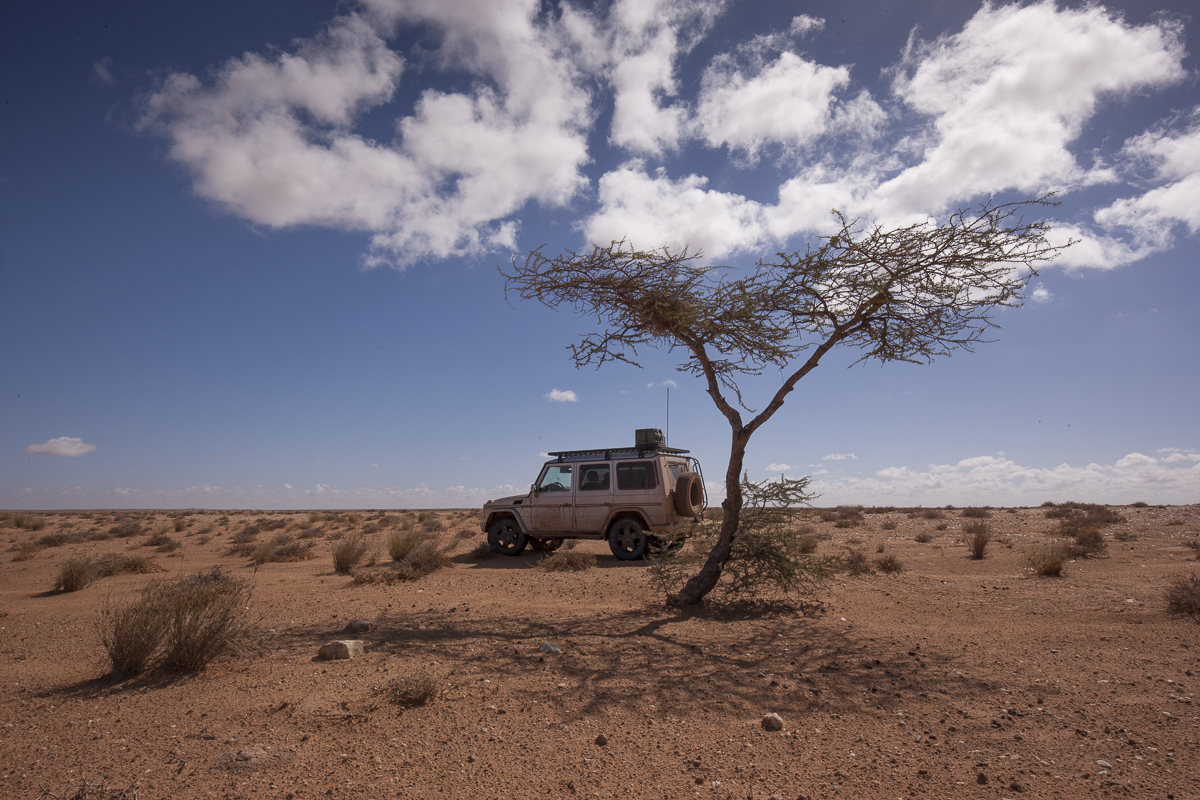

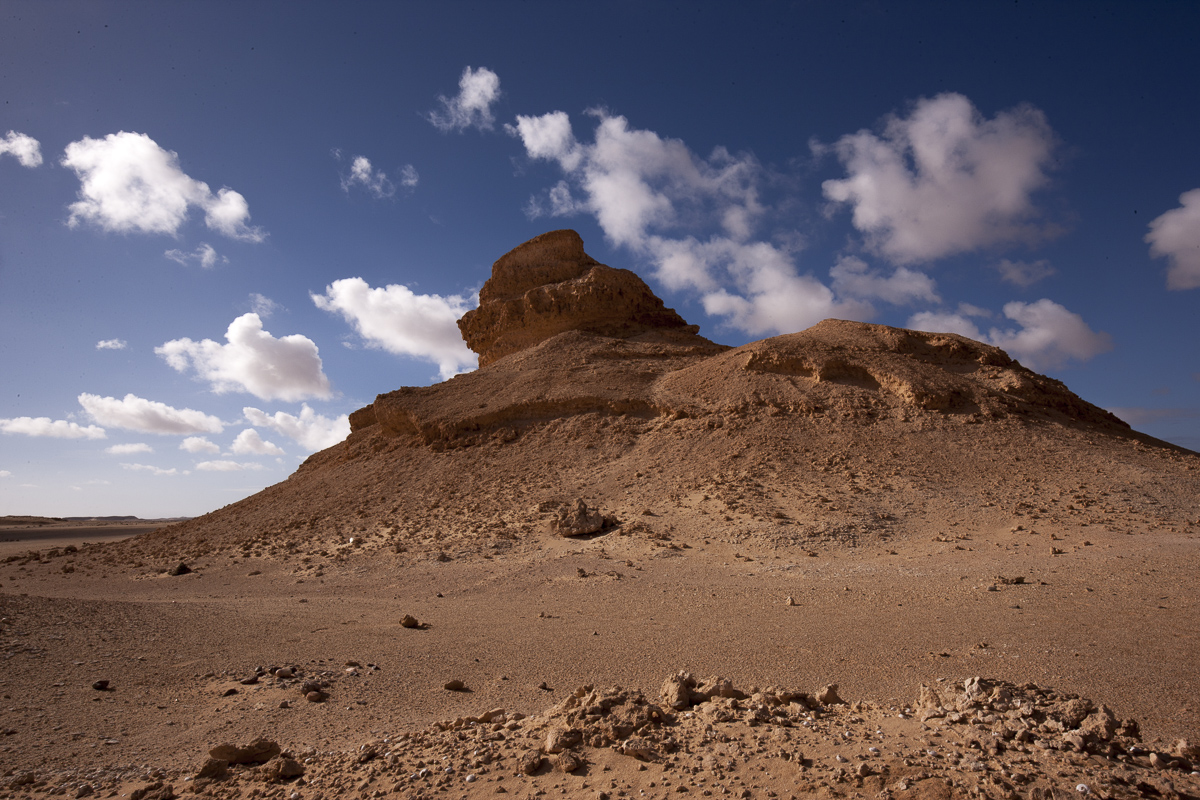
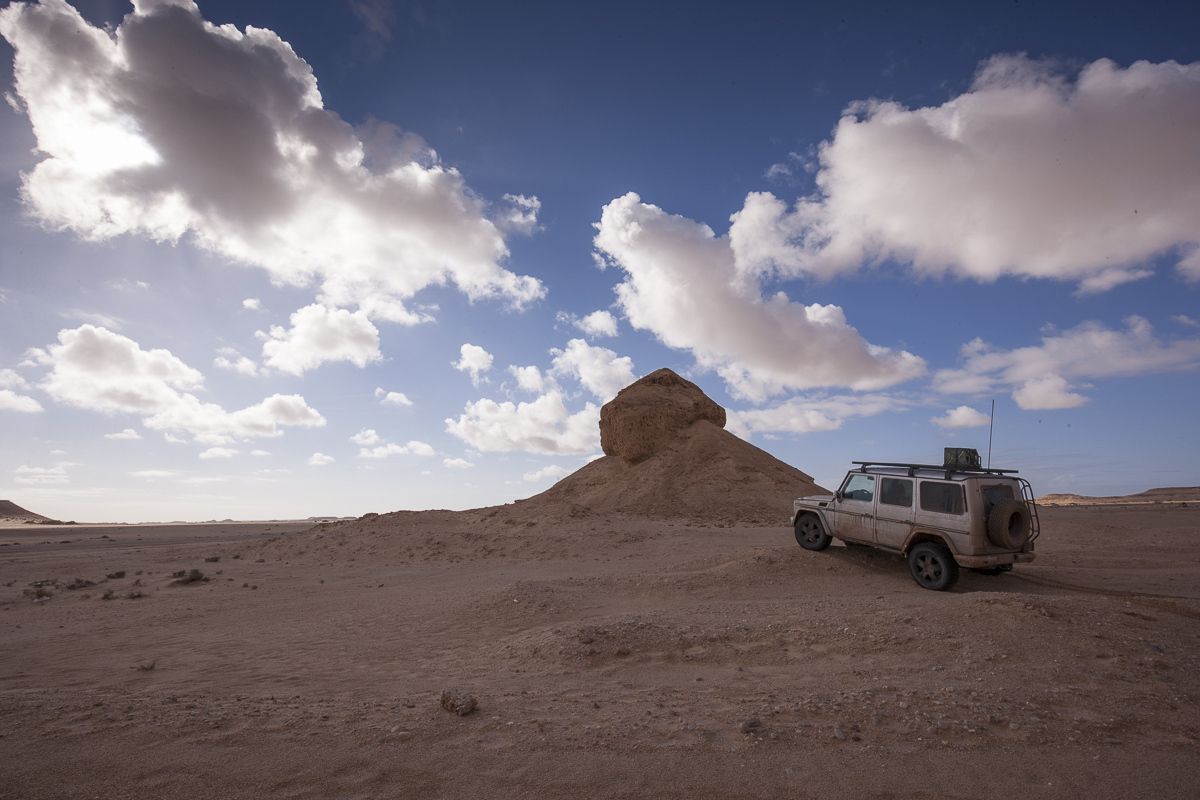
http://gwagendays.com/explore/western-sahara-16-2014.asp?id=45
"A mind that is stretched to a new dimension can never go back to its old dimension" (Oliver Wendell Holmes, Jr.).
This is my second visit to the Western Sahara and Morocco, my first was three years ago back in 2012. This first visit was truly a great adventure for me and I loved being in the Sahara and the Anti Atlas mountains so much. At that time I was greatly affected by the mess and all the noise in the villages and cities, and in a negative way. Being an introvert person these noisy busy Arabic cities takes a tool on me, it just becomes a bit too much for me, - I´m way more comfortably in the desolated desert. The amount of pollution in the cities and in the countryside close to them also had a bad impact on my appreciation of the country.
On this visit most of this changed a bit, maybe because I was prepared on this occasion. But I have come to love Morocco a lot, mostly I´m still found of the Anti Atlas and the desert plains in the Western Sahara. But my mind is more broadened on this visit. I´m able to appreciate the difference compared to Europe and the diversity here way better. I´m still not totally in my comfort-zone in the busy city-centers, but I´m able to cope with it in a more relaxed manner.
All in all this adventure with all the different experiences we have had have forever changed me. My mindset will never be the same. We have seen all the faces that Morocco and the Western Sahara can have I think. And I like it.
When I look at my photographs in library view in Adobe Lightroom it´s easily to make out that I normally on a day like this shoots at least a hundred photographs, and on the great days up to five-hundred. Today my score is as low as forty-one. Maybe today have been less adventurous than the previous.
And it might just be a fact. We had no mechanical failures, no-one got stuck in the mud, no military interference and the weather have been kind-off normal with blue skies, sunshine and a comfortably ambient temperature; it kind-off feels just like a holiday. We made it out of the part of the Western Sahara that had the rain-storm somewhat easily, the sand had dried out over night and progress was good. Here further south everything seemed normal, surely this region had not seen any rain recently.
So without any real drama we made it as far south as to latitude 23. At 22°59'57.2"N, 14°54'10.5"W we found a very lonesome tiny tree and made a stopover. I have never been so far south before in a vehicle that I have been driving myself all the way from my home-town. Having archived that we then headed west to reach the North Atlantic Ocean and a filling station. Steve's fuel-supply suddenly were lower than estimated due to a higher consumption than anticipated, and so we had to head towards tarmac in order to make it out to the coastline and the filling stations there.
Going west was a new experience having been heading south for so long. For my part it had been way more than 5.500 km since I left home so many weeks ago. And so we now cruised west towards the seaside on tarmac roads and then north to Dakhla where we could fill our nearly empty fuel-tanks again.




http://gwagendays.com/explore/western-sahara-16-2014.asp?id=45
thebigblue
Adventurer
Day 12
Also today I woke before sunrise, Steve were already up and roaming the hillside above camp. He approached my with a story of seeing plenty of insects up there. So I naturally took off with my camera in hand. Amongst the small creatures that could be found in the sand here was an abundance of tiny snails, not the most obvious place for this I reckon. It must be due to the fact that fog will form here in the morning and evening providing a small amount of freshwater when the condensation occur.
Mostly all day we drove north on the tarmac road running along the North Atlantic coastline. As we got back further north we saw evidence of the previous heavy rainfall, in several spots the road was still totally flooded with water; making it impossible to drive in a ordinary vehicle, so we saw only a few heavy lorries. At a roadside cafe where we had coffee a local wanted to inquire about road conditions towards Dakhla, he was heading south in a sedan and had been held back for three days further up the road due to the flooding.
Around lunch-time we had another visit to civilization and a gas station in Boujdour to stock up supplies and fill our main tanks, and then we headed east into the interior again. Our progress was again compromised by the wet ground in the desert, looking at the desert-base it all looked kind-of normal with a few dark spots, but underneath the dry surface the earth was still soaking wet. We struggled for more than a full stressful hour, and then decided to make another early camp, - we all were pretty tired with no easy moments during the drive in the desert. Off-road driving here in these conditions you had to be completely concentrated in order to avoid the wet parts, - well trying to, - as it was impossible to do so. Each time you hit a soft spot the truck would instantly slow down significantly, and you would be tossed forward in truck, all in all a very tiring situation. We camped at a lakeside, I´m sure this tiny lake will be gone within a few days.


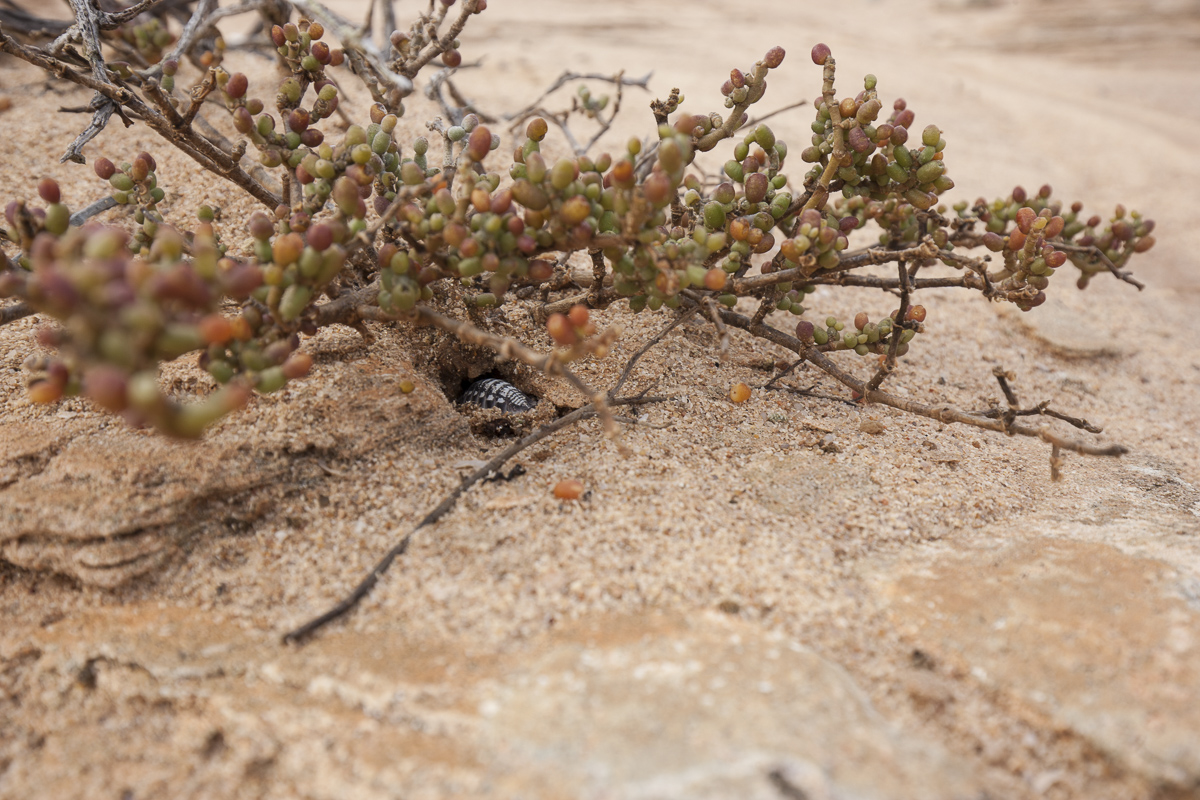


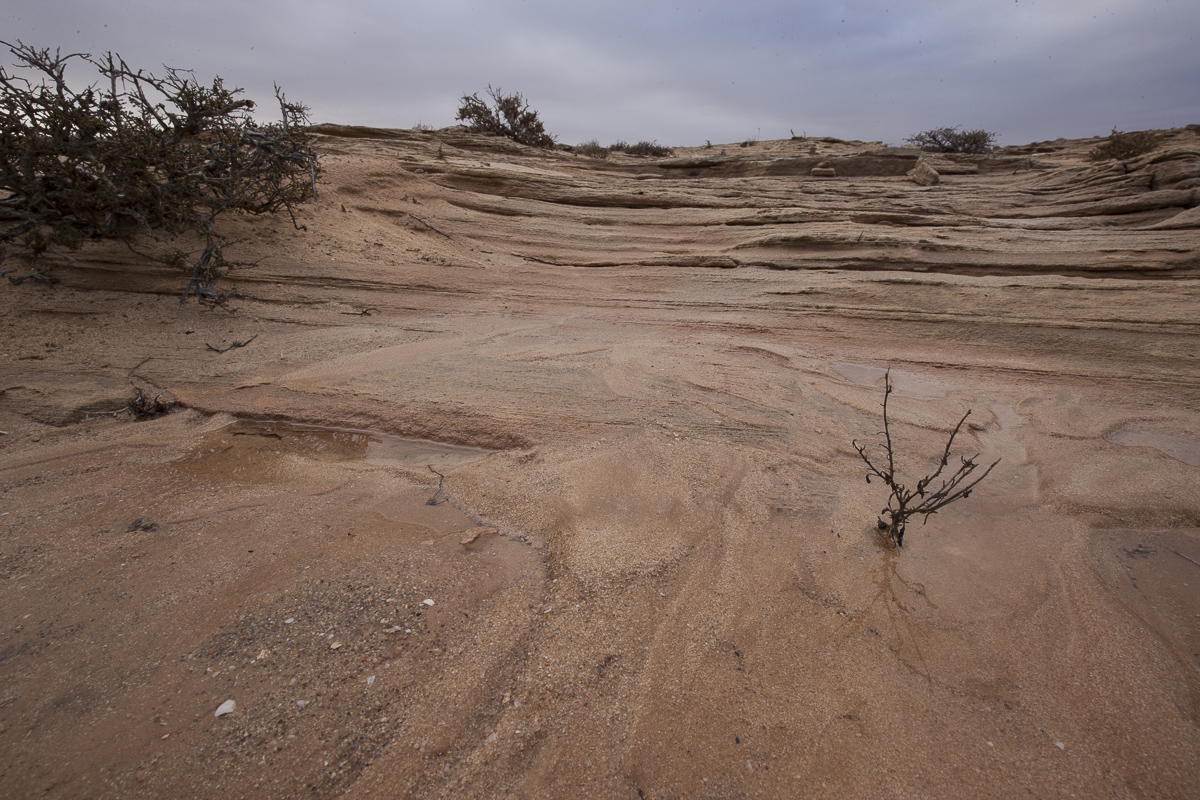
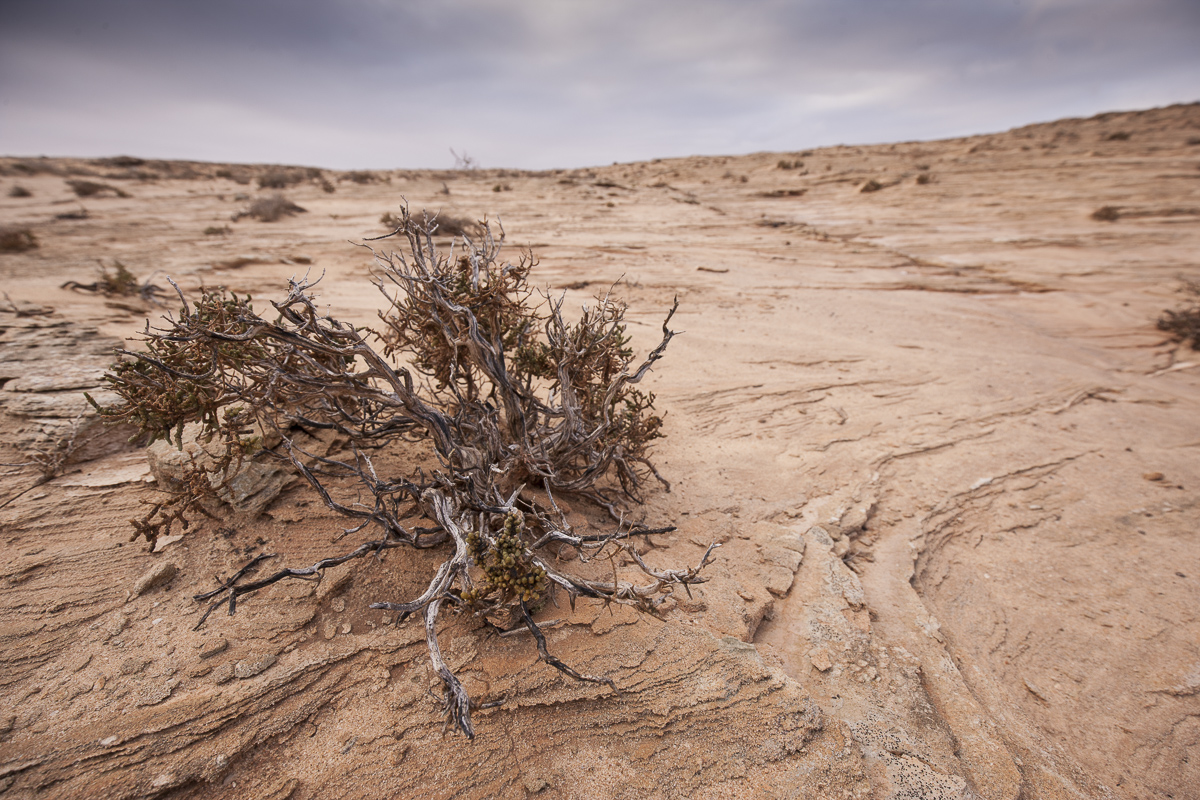

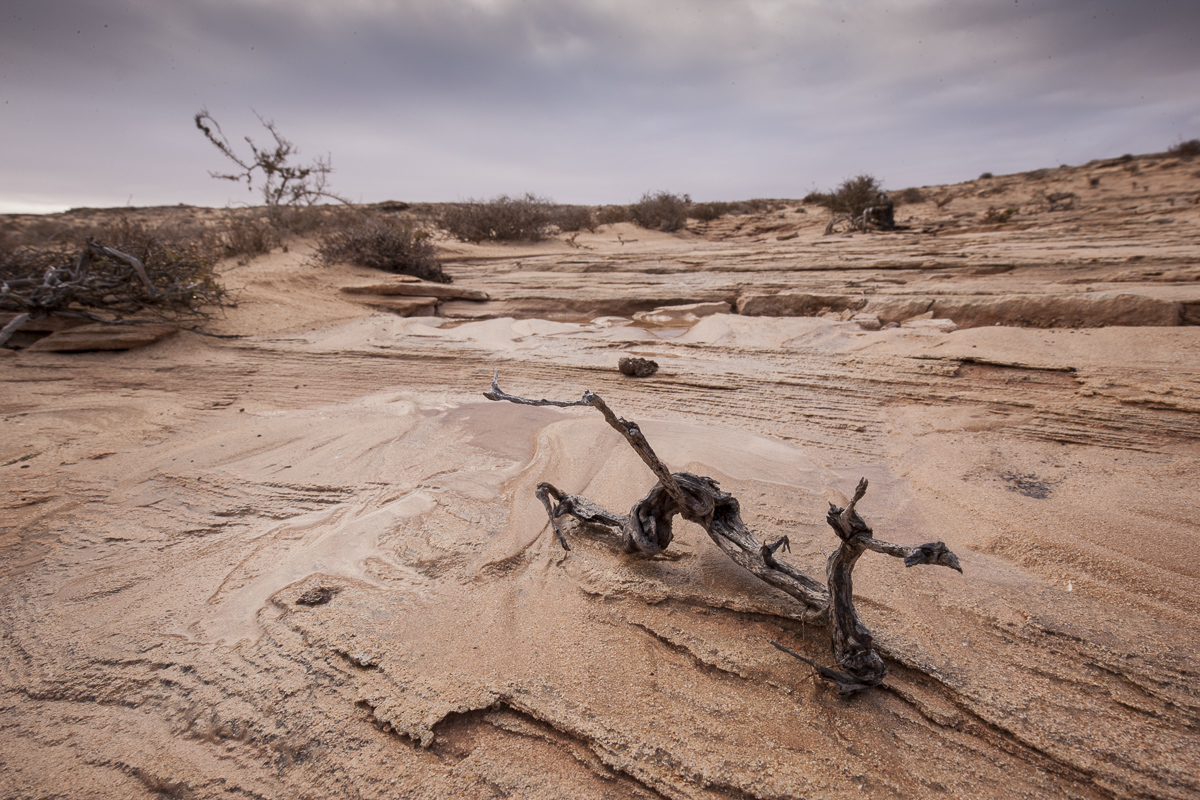
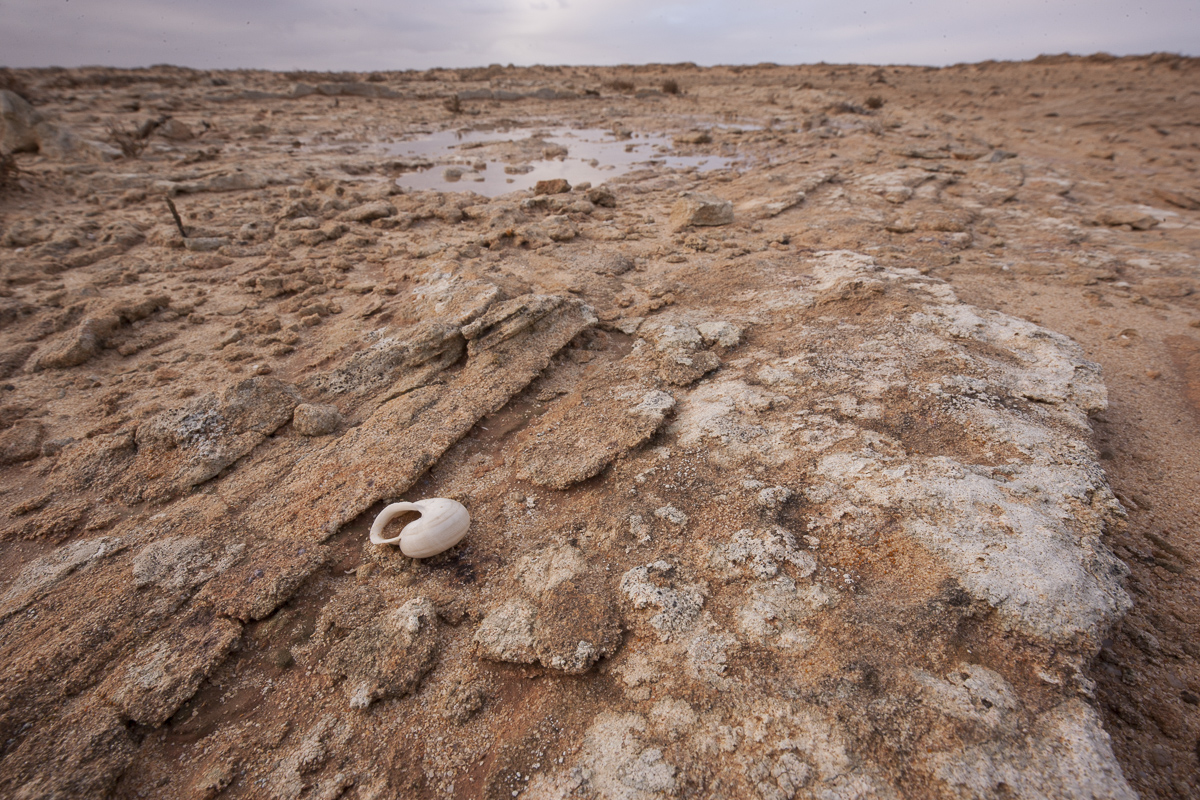
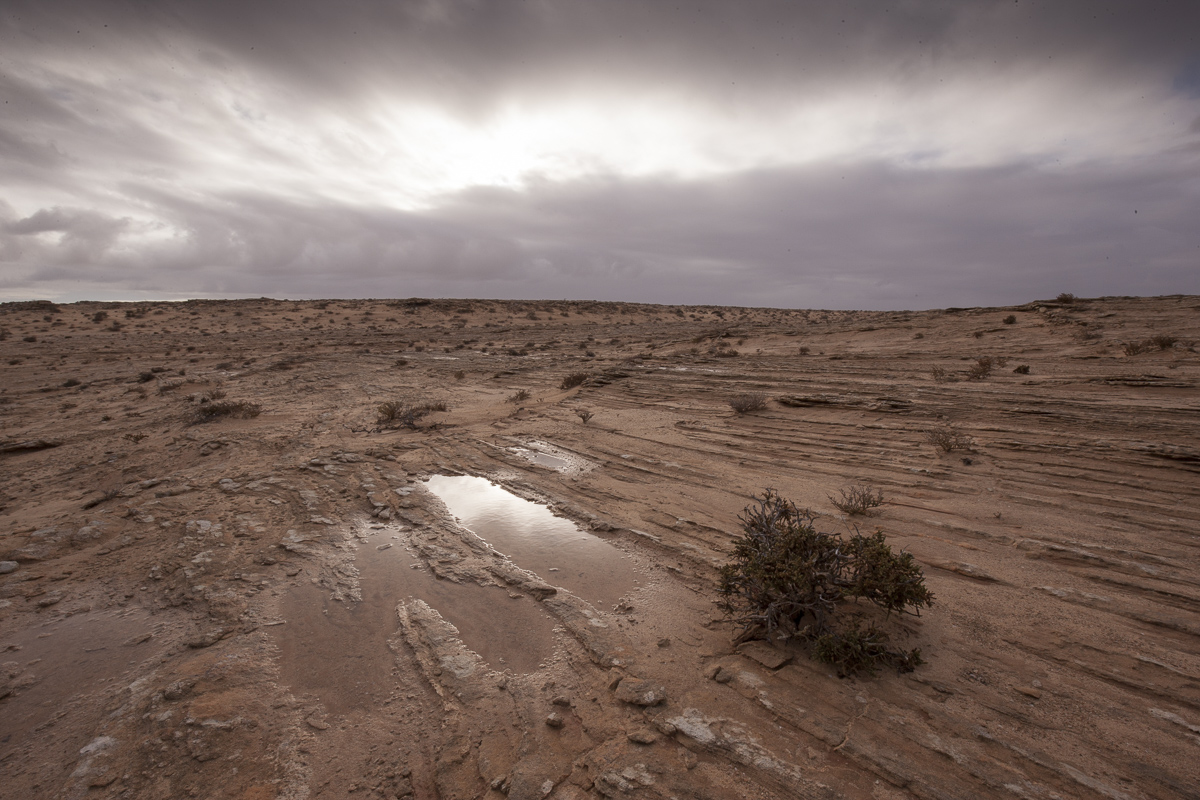

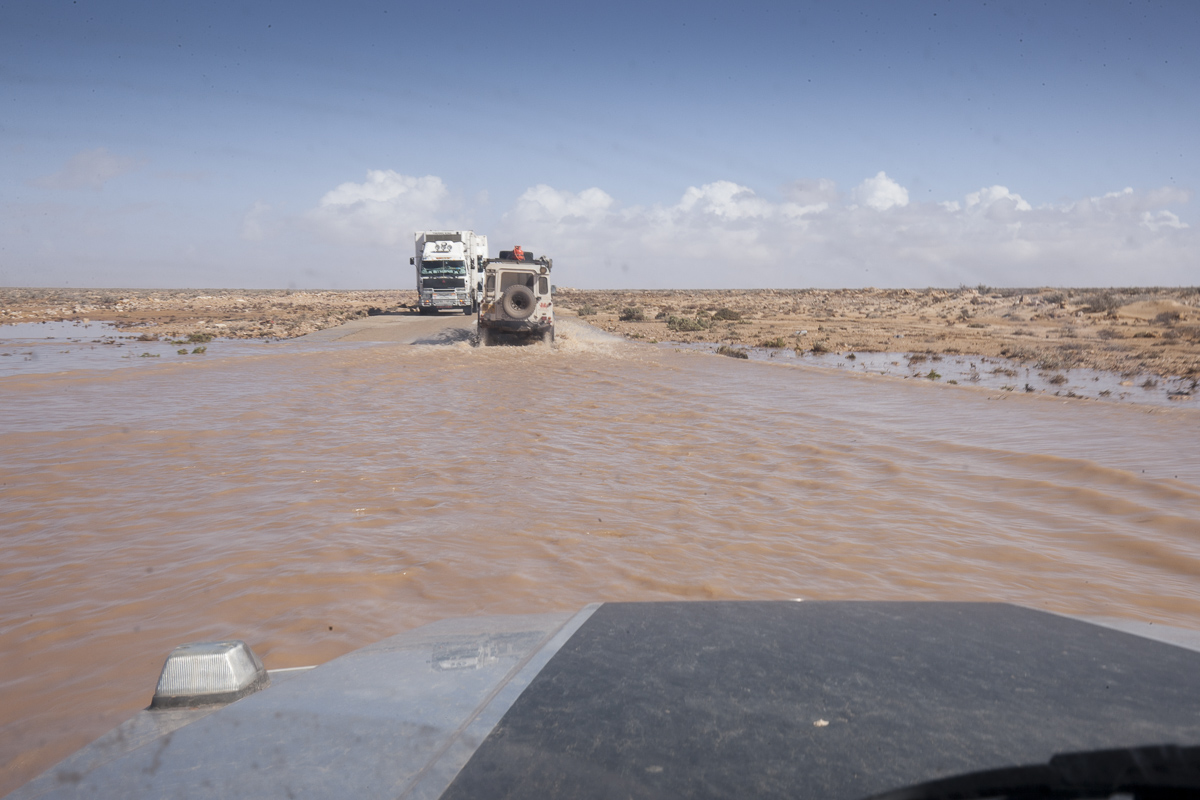

http://gwagendays.com/explore/western-sahara-17-2014.asp?id=46
Also today I woke before sunrise, Steve were already up and roaming the hillside above camp. He approached my with a story of seeing plenty of insects up there. So I naturally took off with my camera in hand. Amongst the small creatures that could be found in the sand here was an abundance of tiny snails, not the most obvious place for this I reckon. It must be due to the fact that fog will form here in the morning and evening providing a small amount of freshwater when the condensation occur.
Mostly all day we drove north on the tarmac road running along the North Atlantic coastline. As we got back further north we saw evidence of the previous heavy rainfall, in several spots the road was still totally flooded with water; making it impossible to drive in a ordinary vehicle, so we saw only a few heavy lorries. At a roadside cafe where we had coffee a local wanted to inquire about road conditions towards Dakhla, he was heading south in a sedan and had been held back for three days further up the road due to the flooding.
Around lunch-time we had another visit to civilization and a gas station in Boujdour to stock up supplies and fill our main tanks, and then we headed east into the interior again. Our progress was again compromised by the wet ground in the desert, looking at the desert-base it all looked kind-of normal with a few dark spots, but underneath the dry surface the earth was still soaking wet. We struggled for more than a full stressful hour, and then decided to make another early camp, - we all were pretty tired with no easy moments during the drive in the desert. Off-road driving here in these conditions you had to be completely concentrated in order to avoid the wet parts, - well trying to, - as it was impossible to do so. Each time you hit a soft spot the truck would instantly slow down significantly, and you would be tossed forward in truck, all in all a very tiring situation. We camped at a lakeside, I´m sure this tiny lake will be gone within a few days.














http://gwagendays.com/explore/western-sahara-17-2014.asp?id=46
thebigblue
Adventurer
Day 13
During this years Western Sahara adventure we all had plenty of new experiences, one being the tiring and difficult driving in the wet desert, another would be to watch the normally very dry Sebkat Arida flooded with water from the resent heavy rainfall. This will probably be a once in a lifetime experience for all of us. We also tried to visit the Sebkat Arryd, but it was undoable the surface was not drivable, so we had to head back to the Arida. We had lunch here overlooking the interior from high ground, a disturbing rainfall passed us during this lunch-break. The desert floor and the standing water in the Sebkat had already grown a green color-cast; the organic life which had been in hibernate waiting for this moment, apparently wanted to make the most from this rare opportunity.
Again today it was a pain driving in the wet interior of the desert, - on our way towards the Sebkat a few trucks got so stuck that use of a kinetic-rope tow was needed. When heading onwards after lunch it all got a bit silly, the piste was a death-trap; you could at one moment be cruising relaxed on it on some solid foundation, the next minute you would bee sucked deep into the wet stuff. At one point it got a bit scarey because nearly all our vehicles got stuck at the same time, leaving us with very few options to get unstuck again.
We all took a minute to evaluate the situation and estimate what our best options would be. After some effort with a kinetic-rope we had succeeded in rescuing all the vehicles but mine. I had the misfortune to be on the trail when the dry crust simply collapsed and diapered beneath my Geländewagen within seconds, it was so thorough stuck that it had to be winched out from it´s misery.
We were headed north towards the line of sand-dunes witch we intended to follow further north in the direction of Laayounne. Our best option were to stay on high ground avoiding the deathly tracks. The going were pretty tough and we had to pause a few times to wait for Ken to catch up in his overheating Defender, being fairly low-powered the small engine simply struggled too hard on the soft ground. During our battle to cover some distance and elope the soaked desert, the sky did not look to promising, we were concerned by the passing of dark clouds with potential rainfall; fortunately the rain did not get to serious and we only saw a few scattered raindrops.
After a while we finally made it to some more drier regions and the driving got a bit more relaxed. We even had the opportunity to collect some wood for a bonfire. During the last few days it had been difficult to get wood in the normally very dry parts of the Western Sahara.
That evening we made camp under blue skies on the solid desert-bed in between the dunes; we had finally reached the dune-belt that stretches up along the North Pacific from Boujdour to Laayounne.
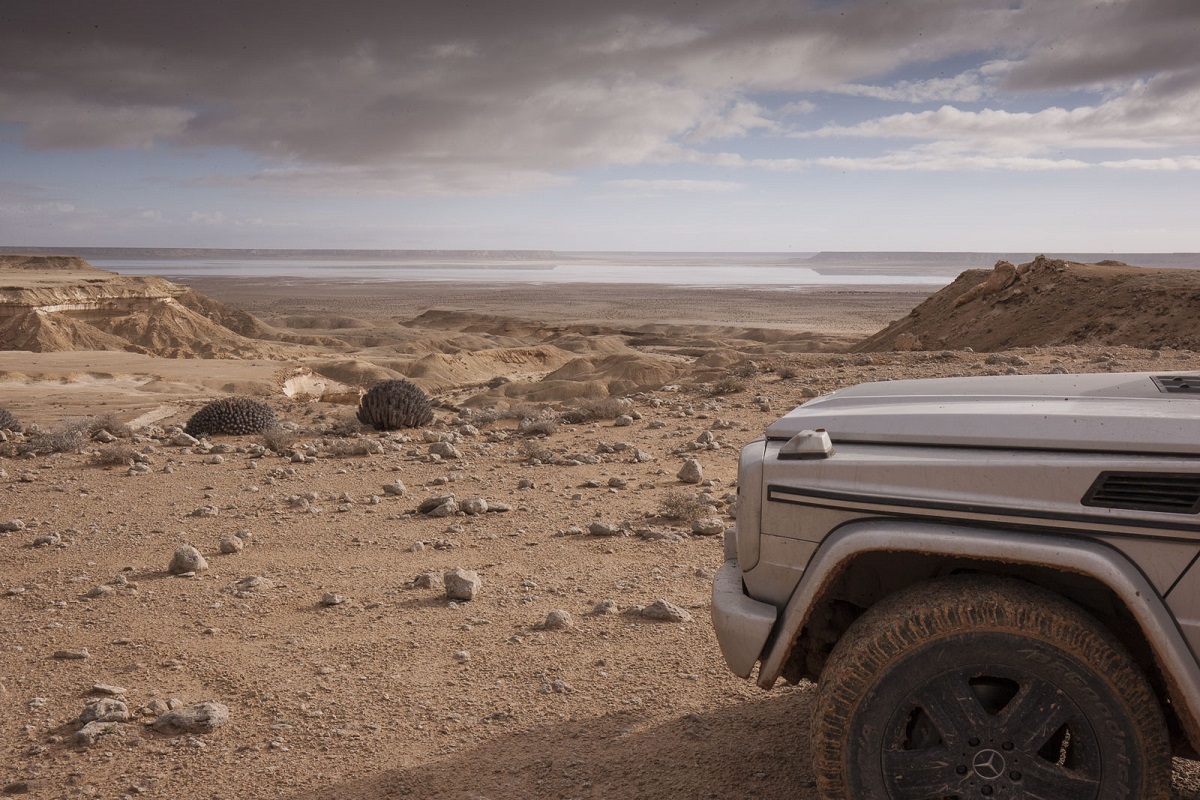
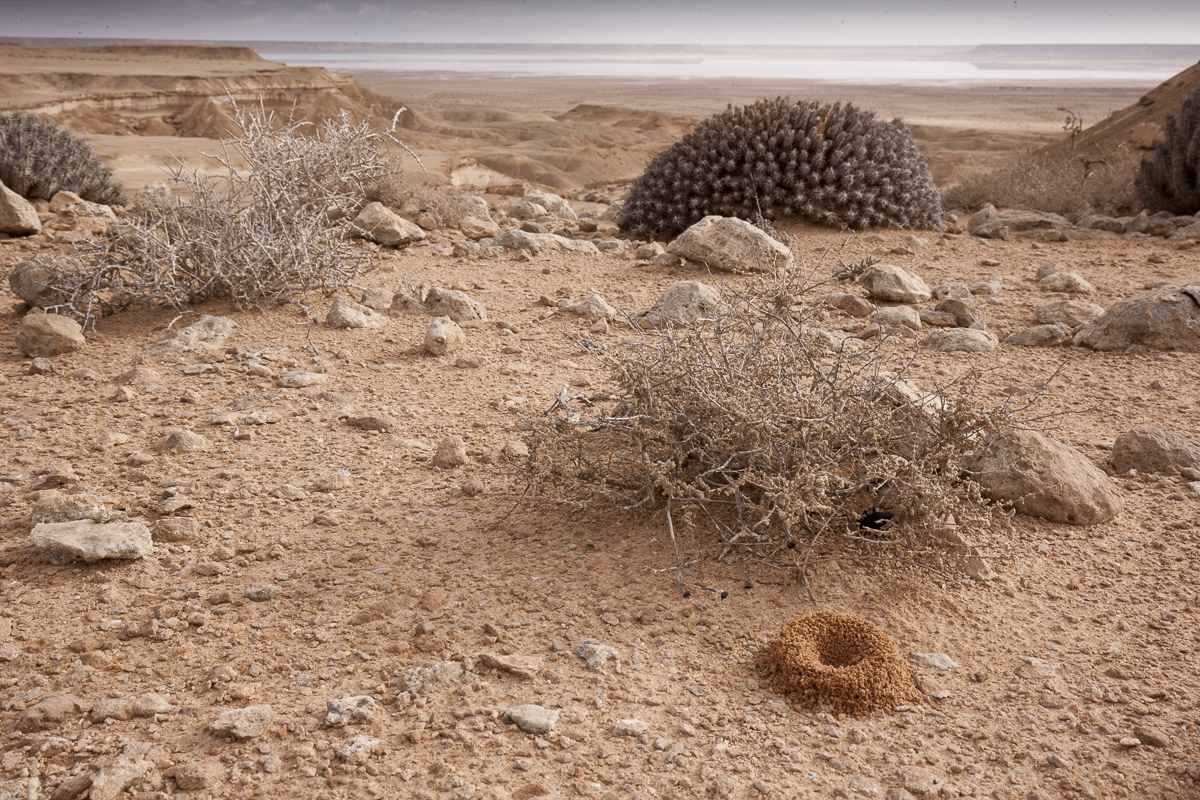
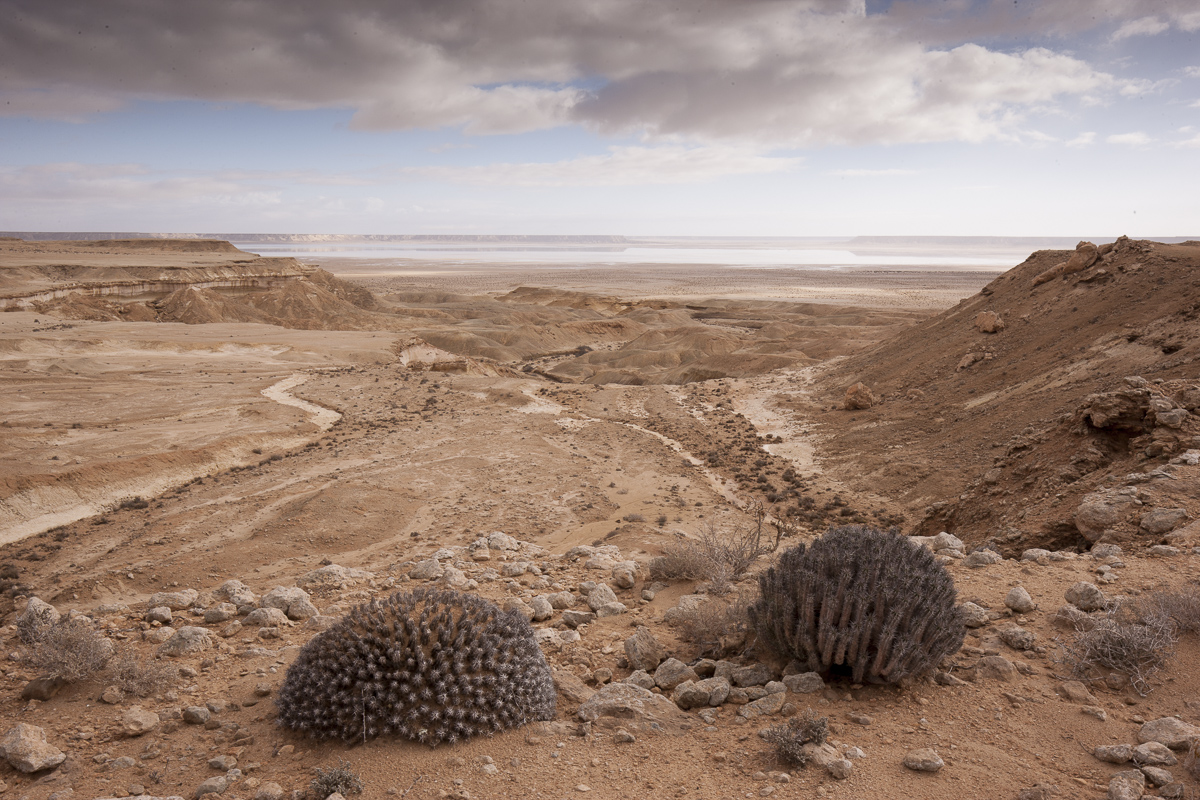
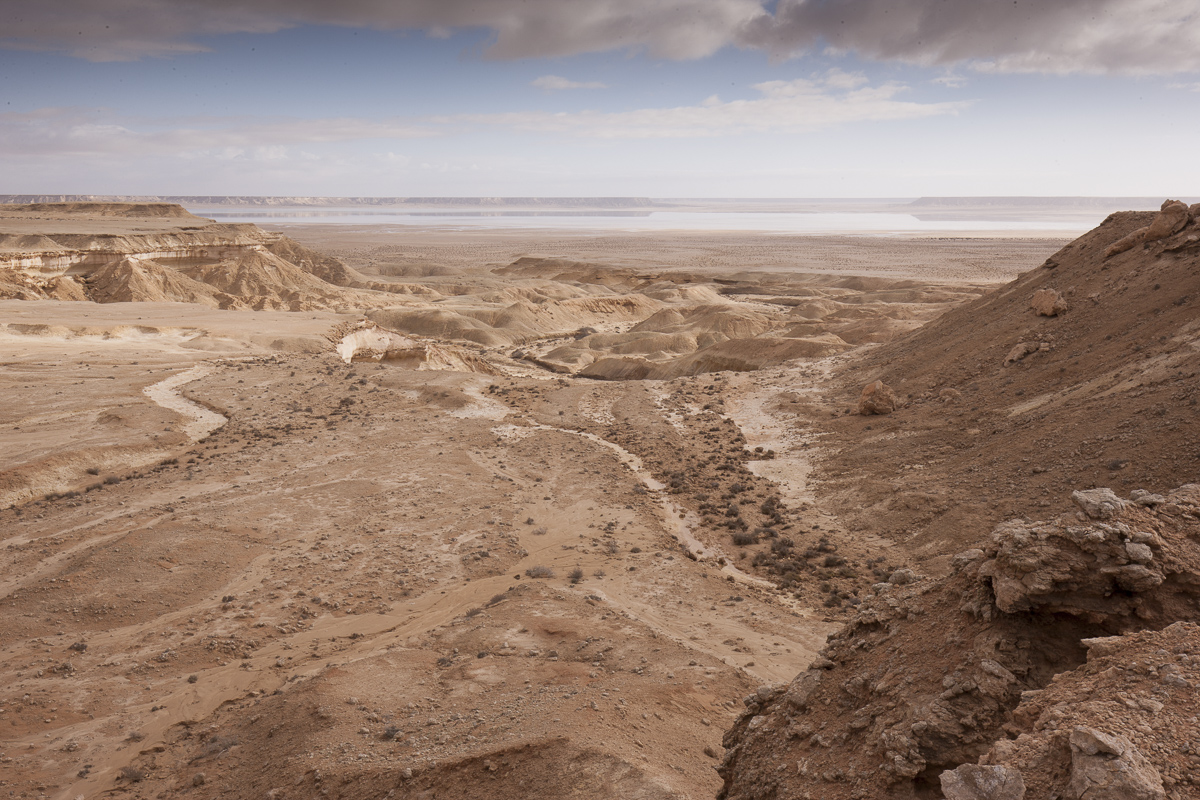
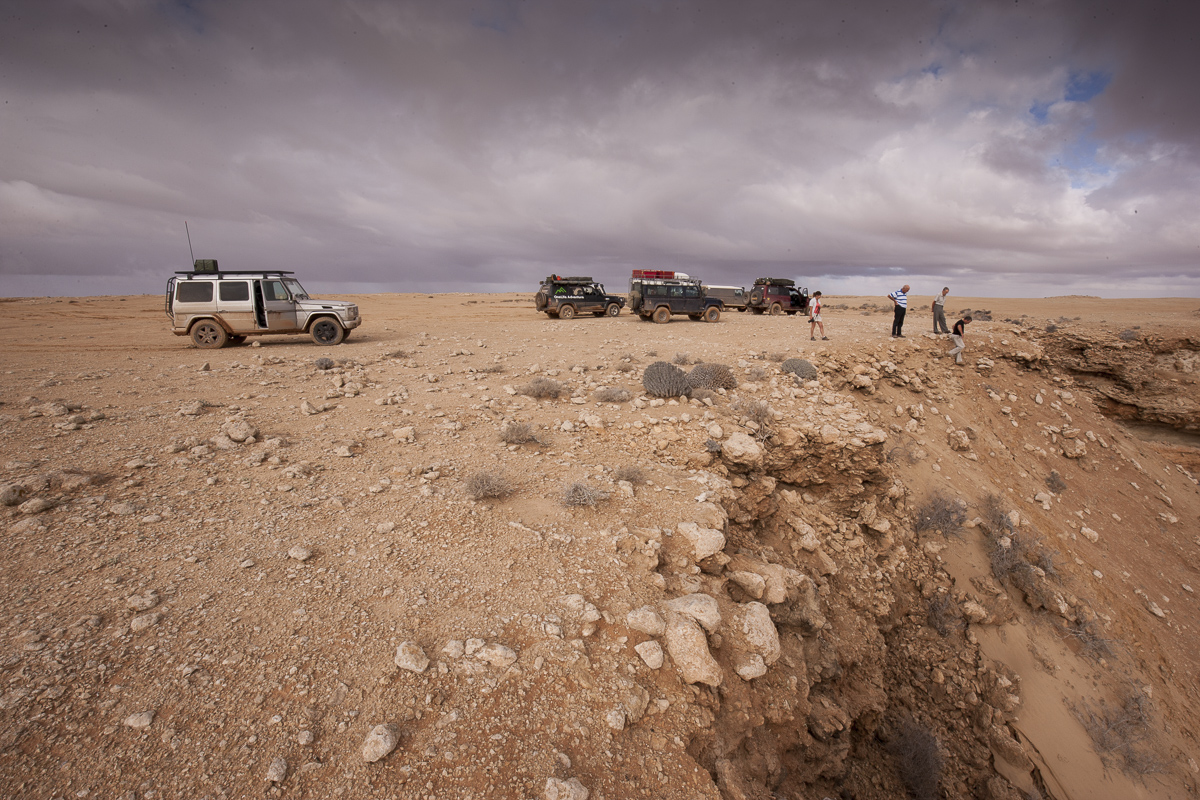
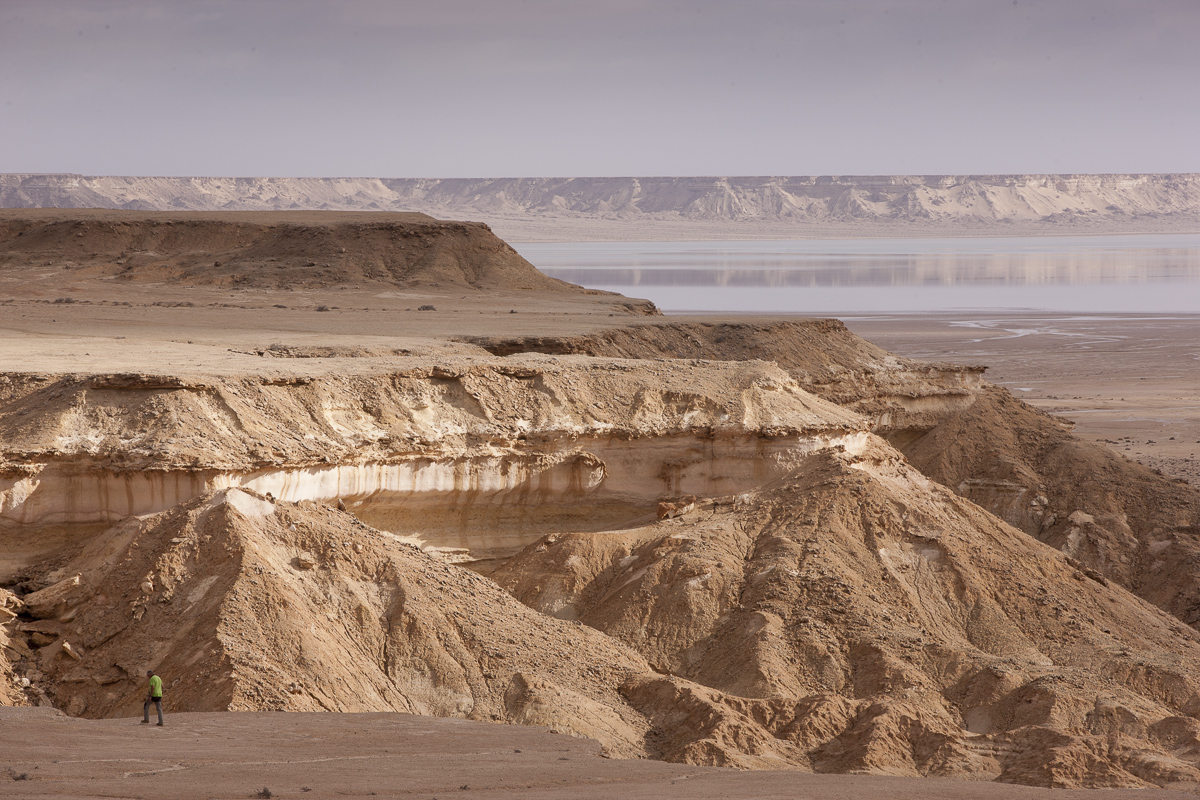
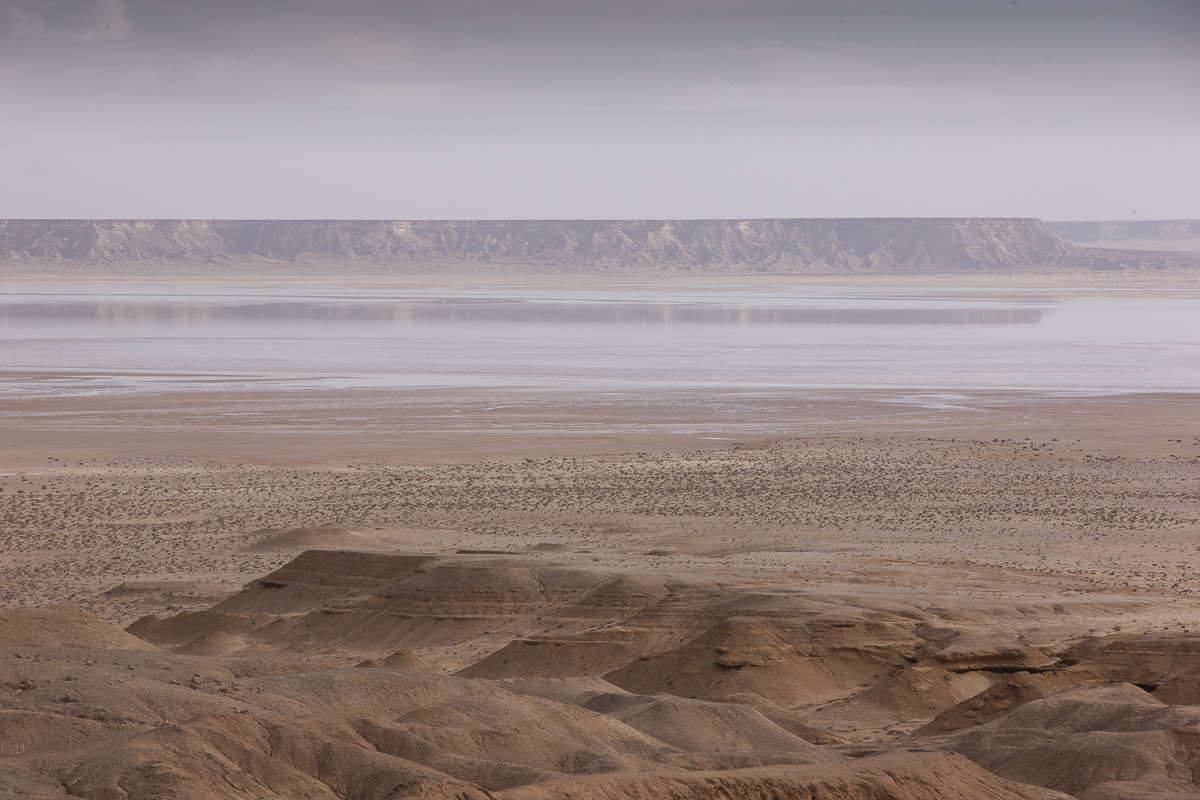
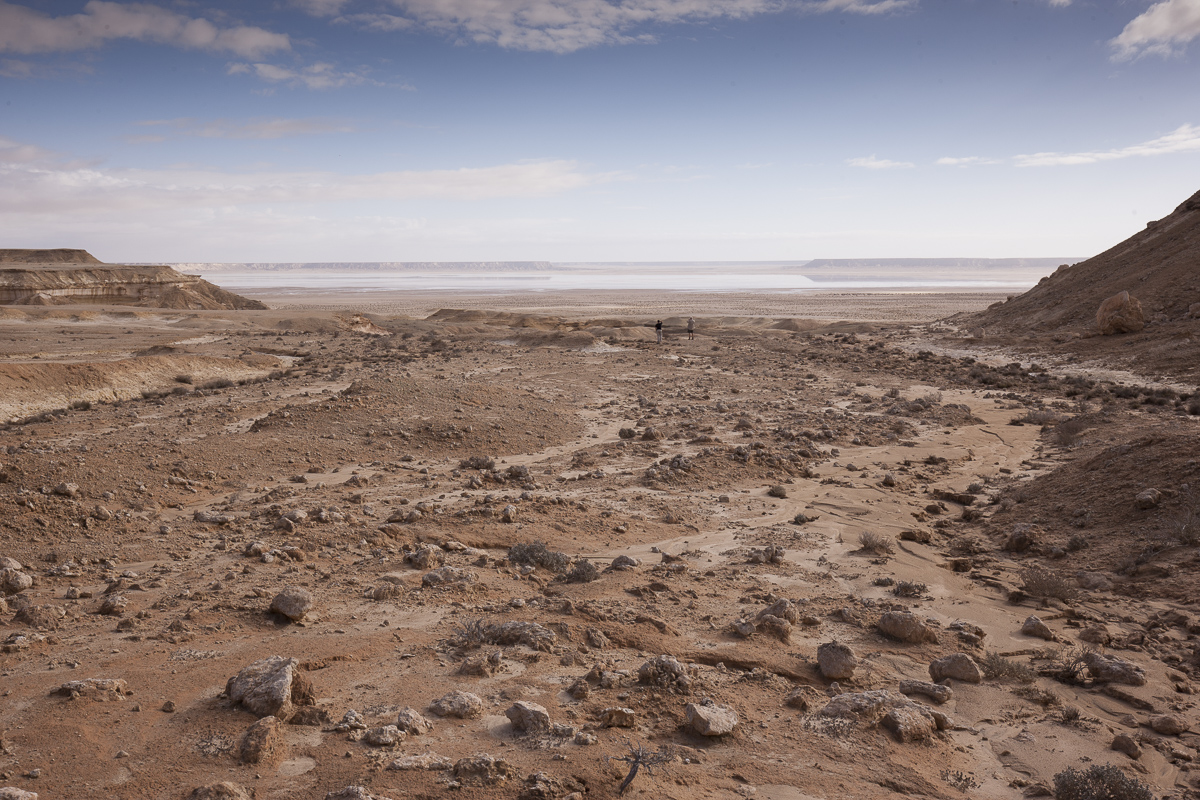
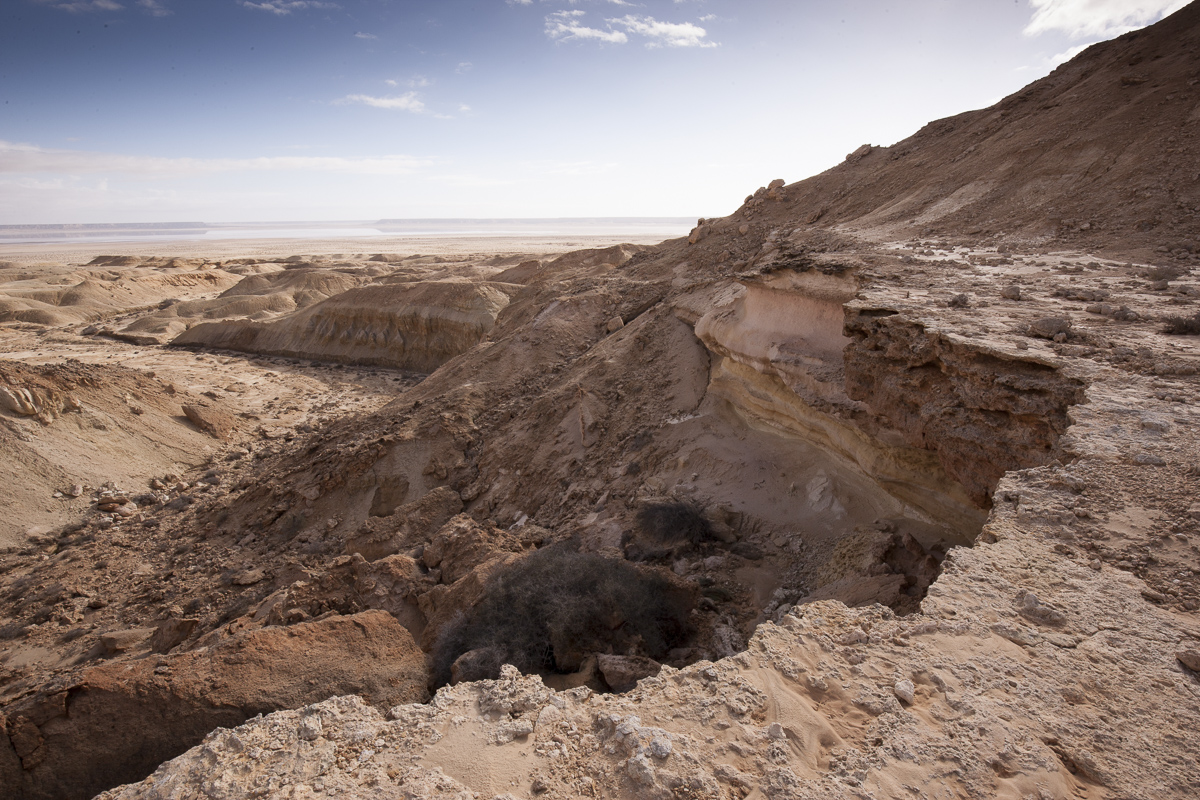
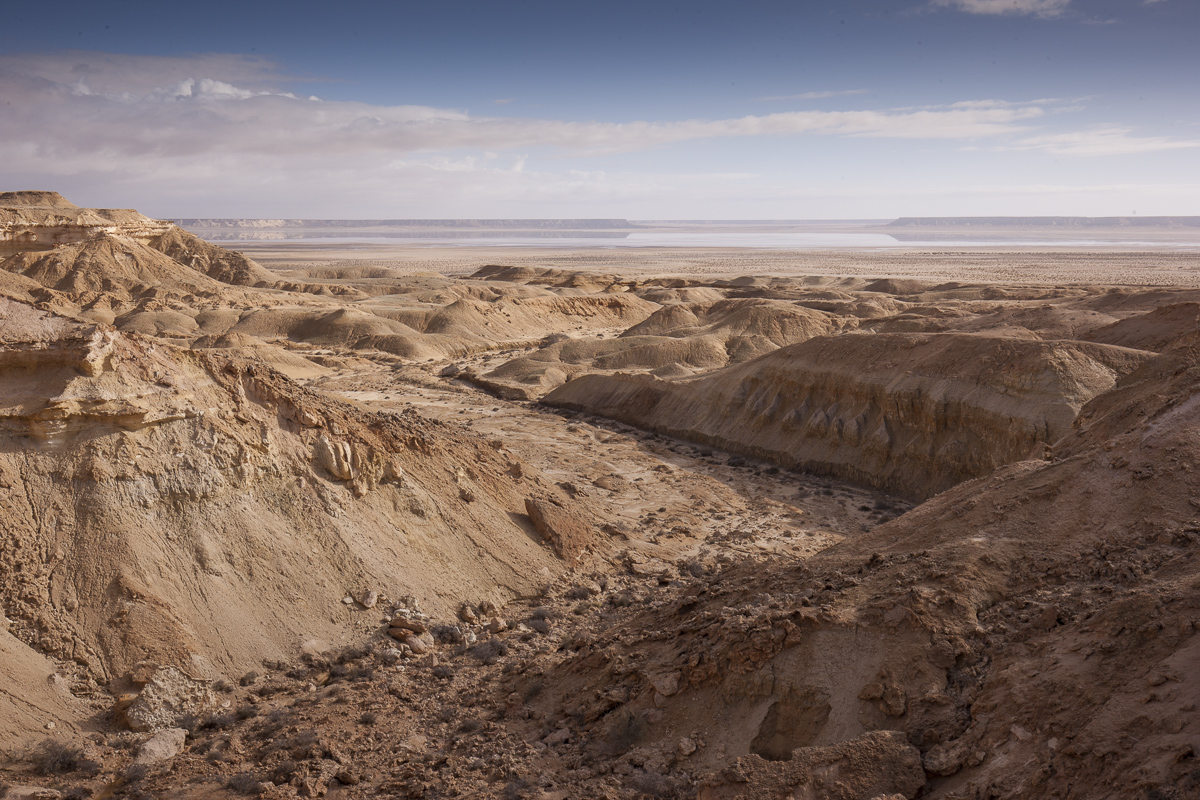
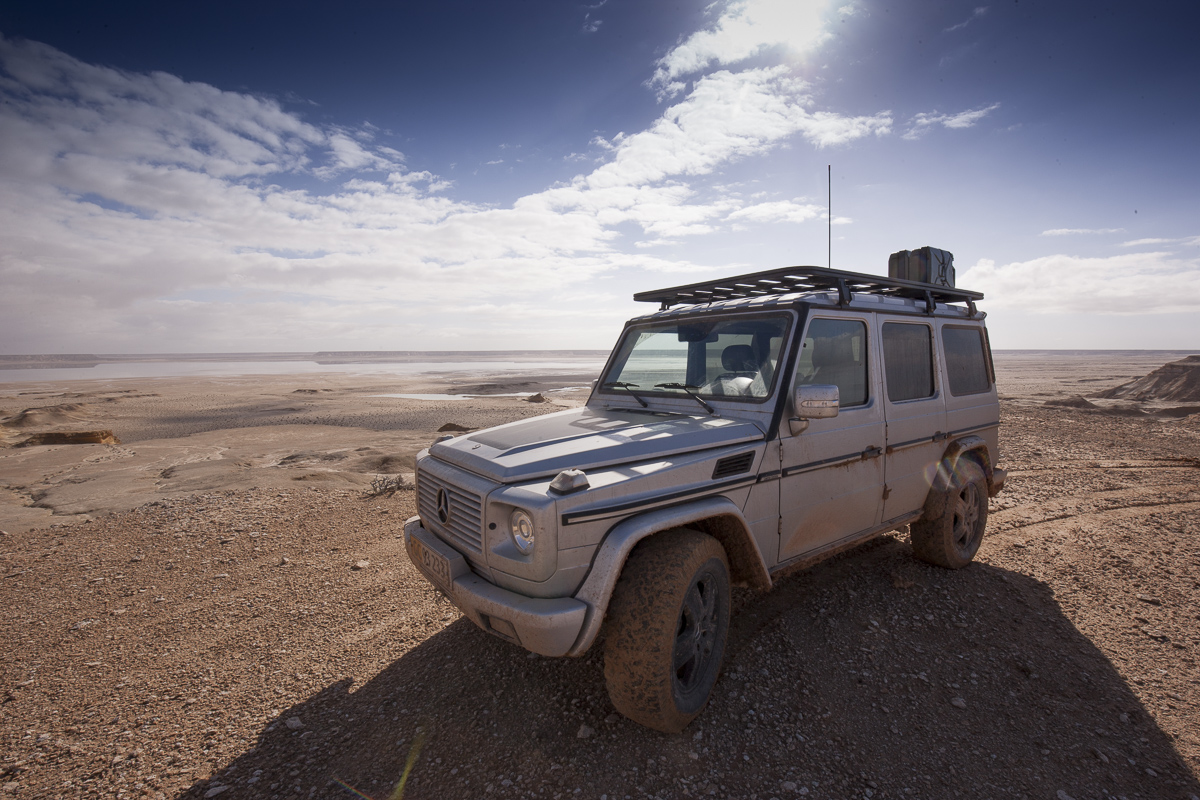
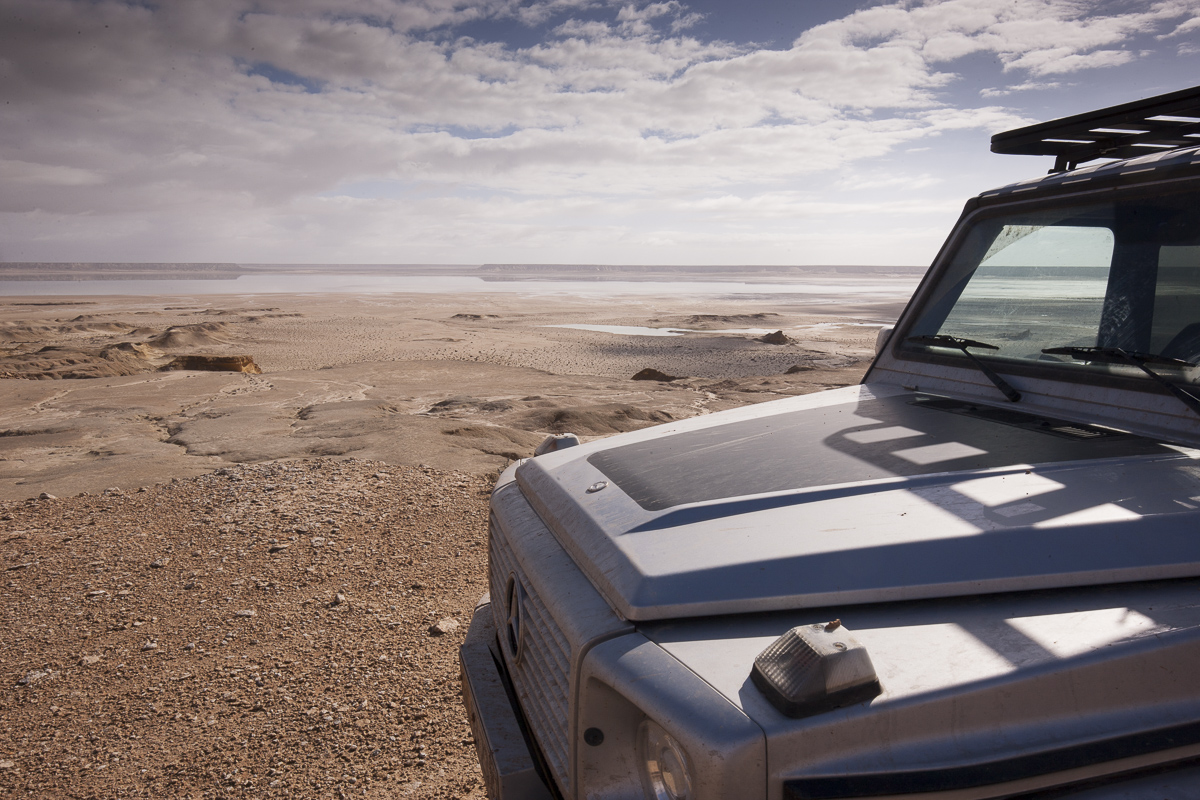
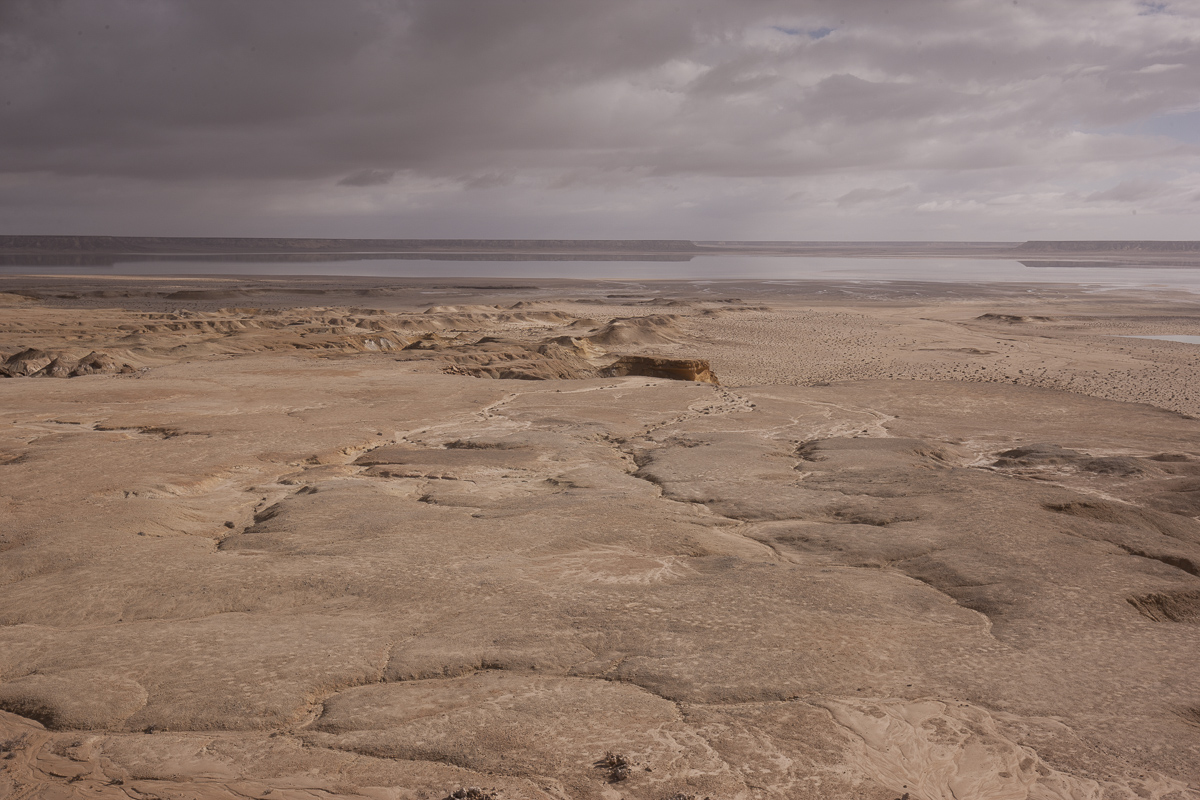
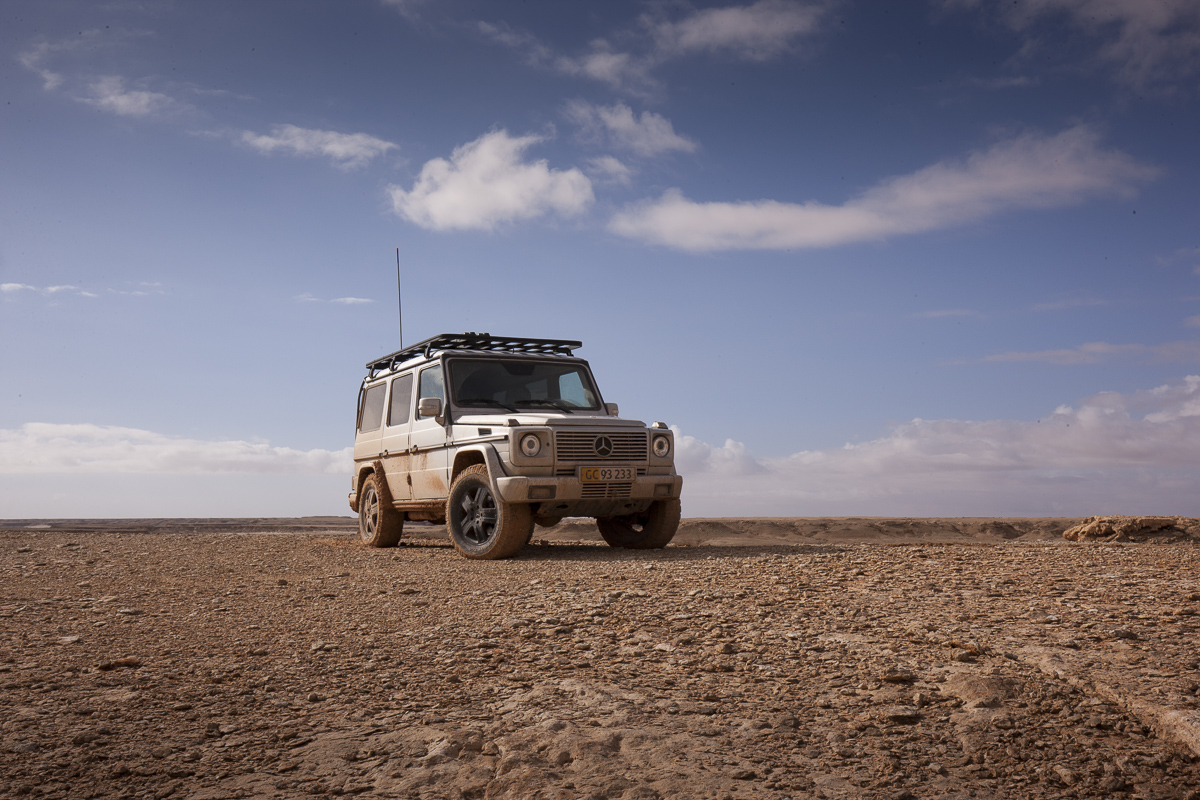
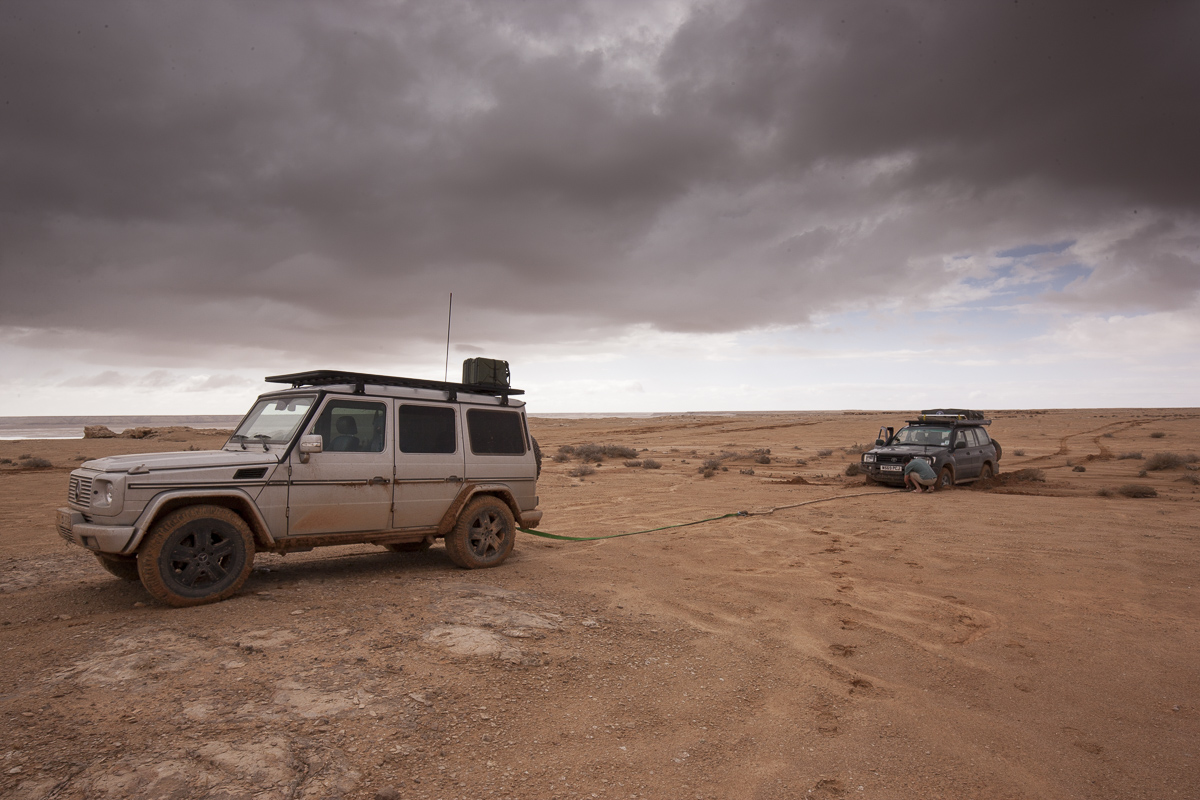
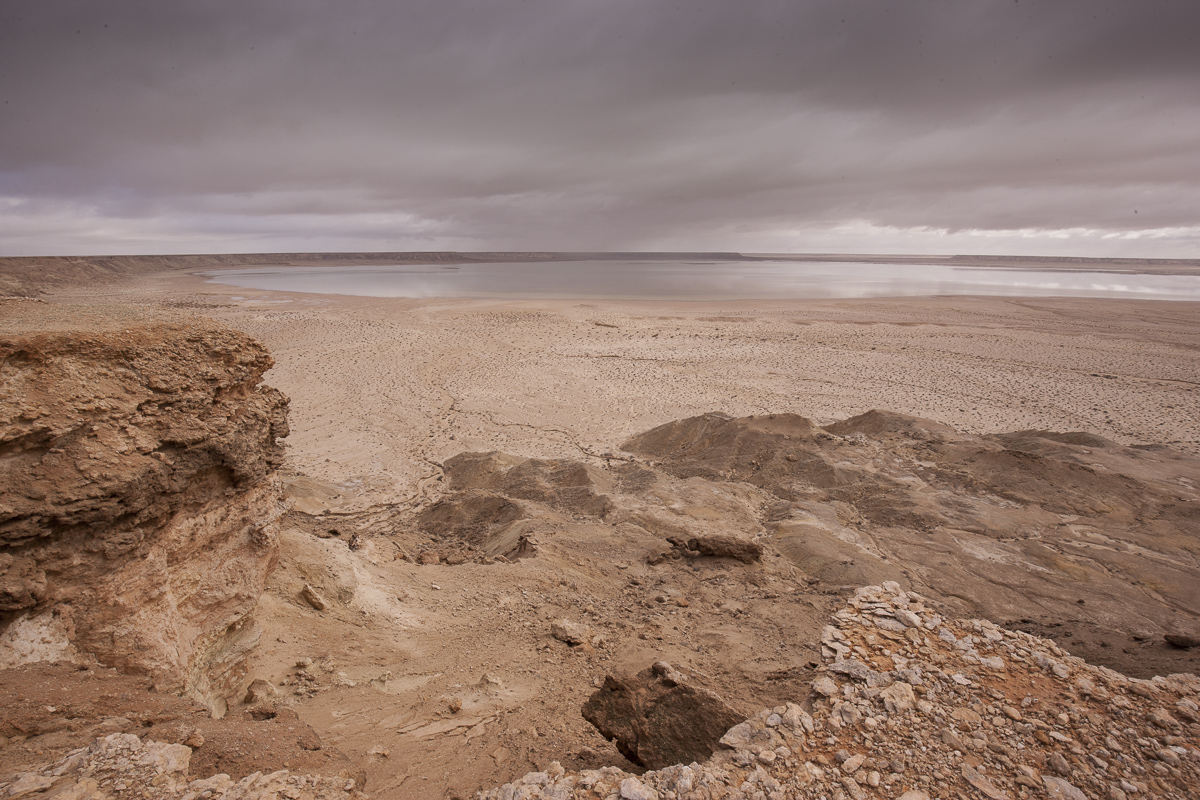

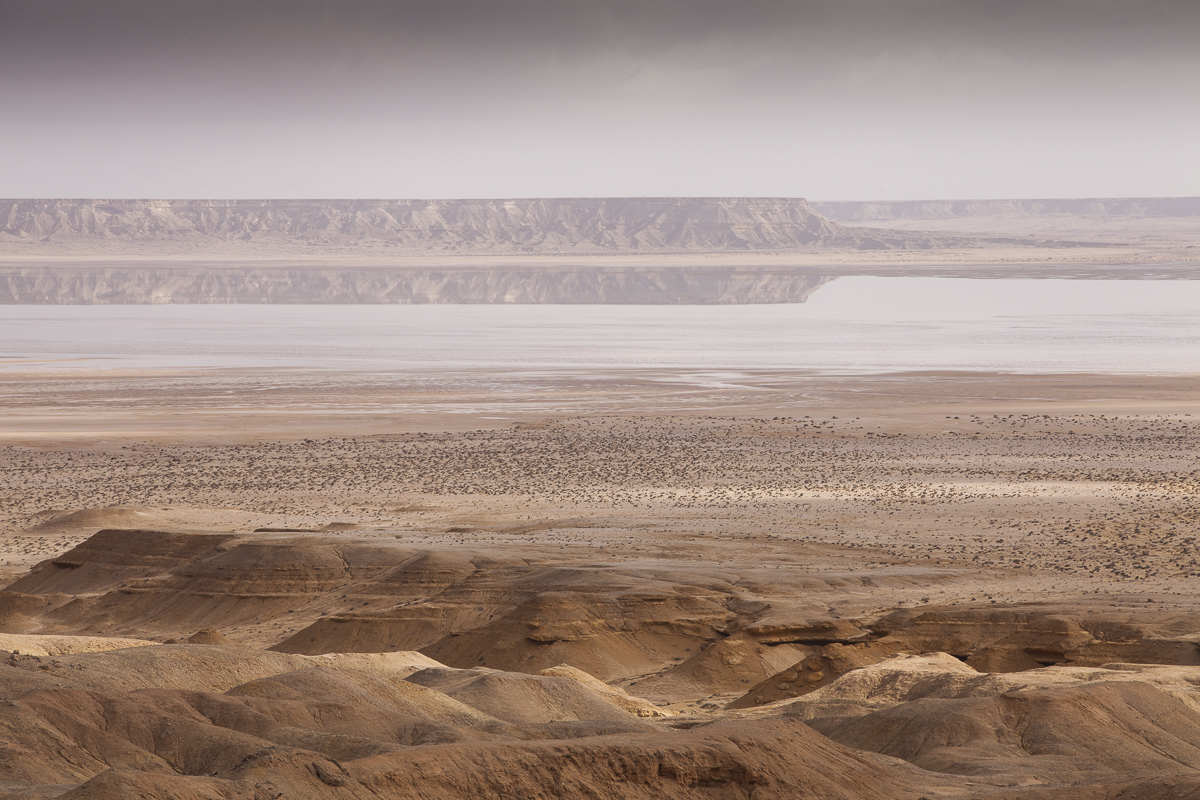
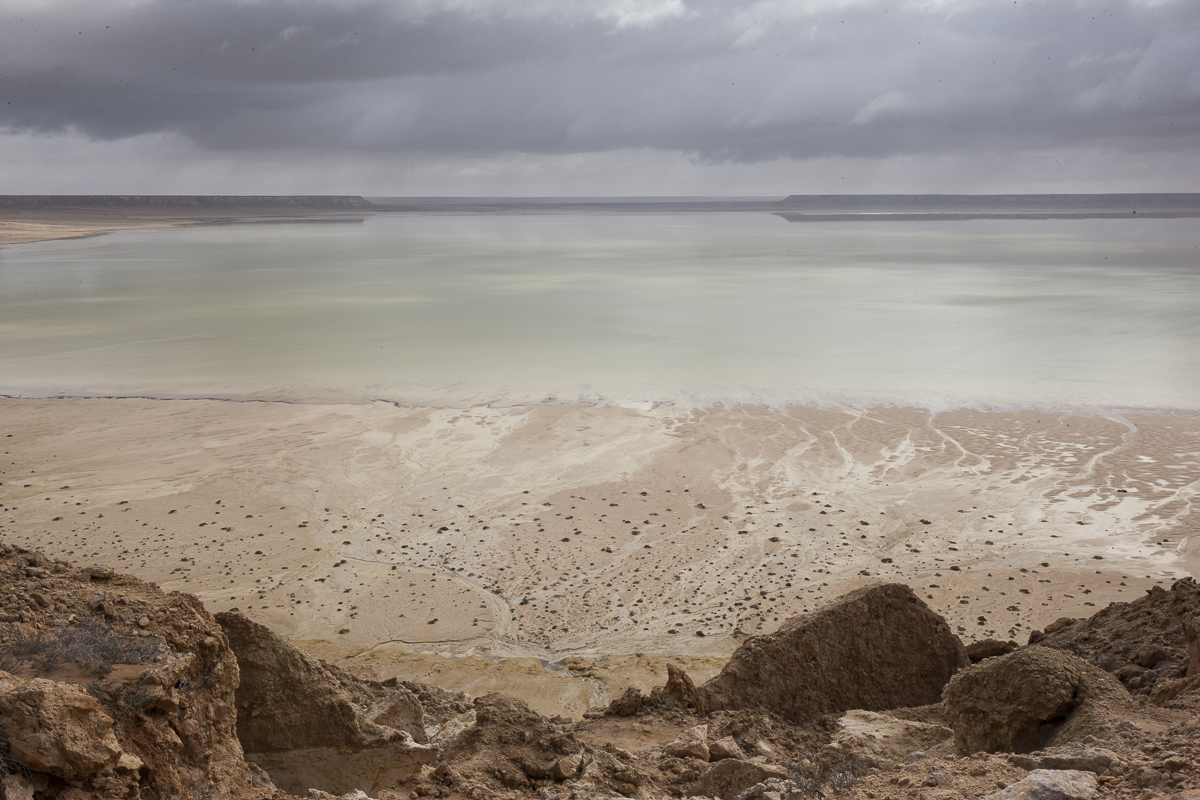
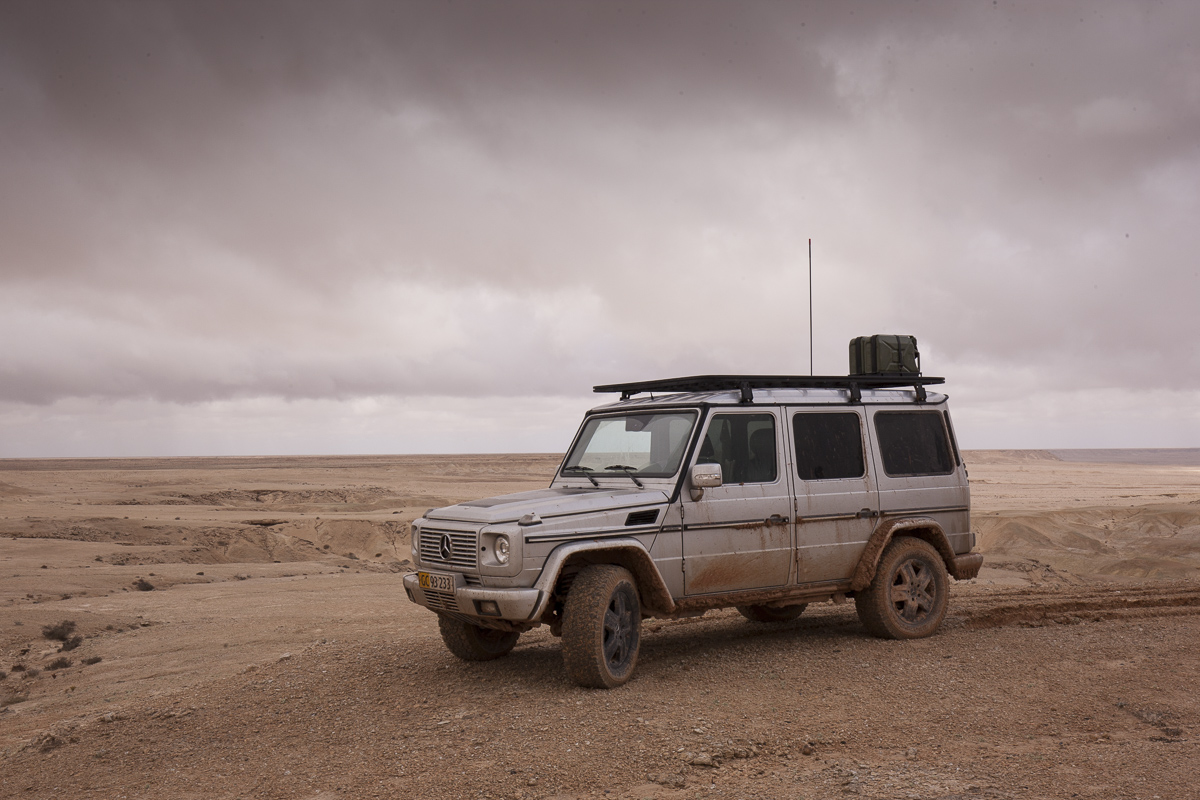
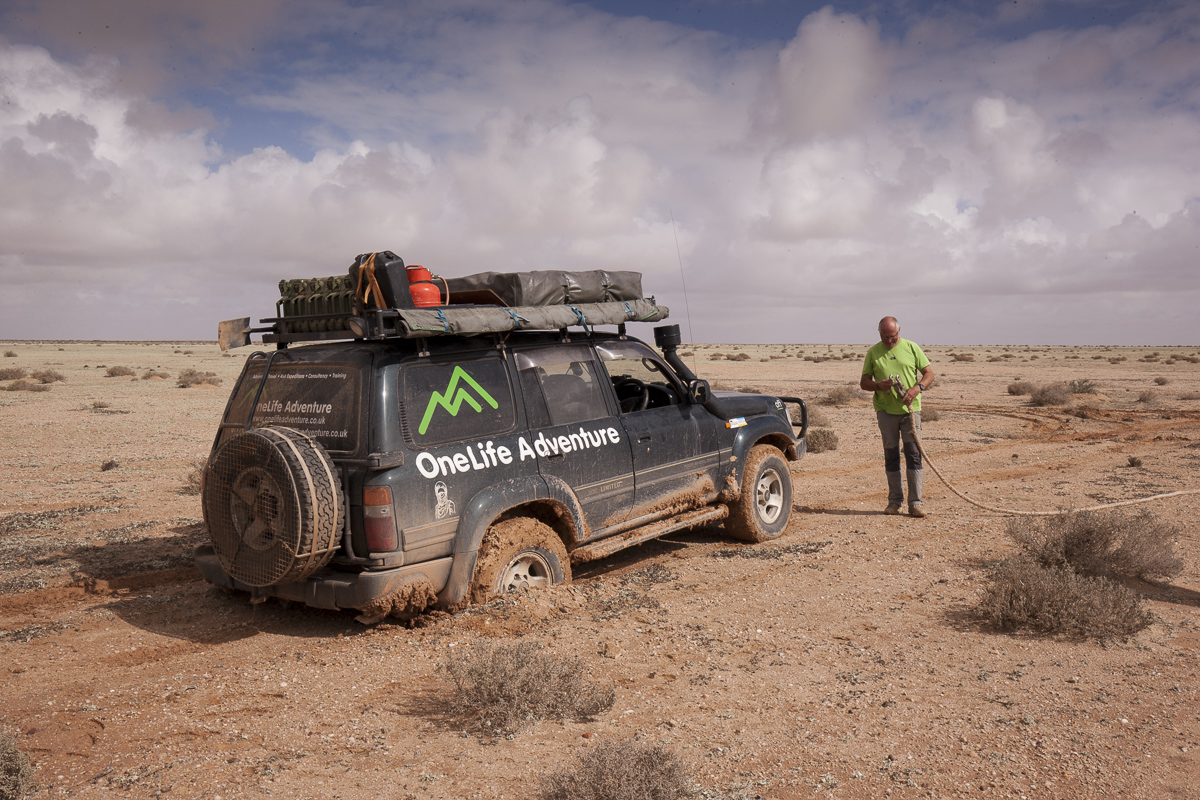
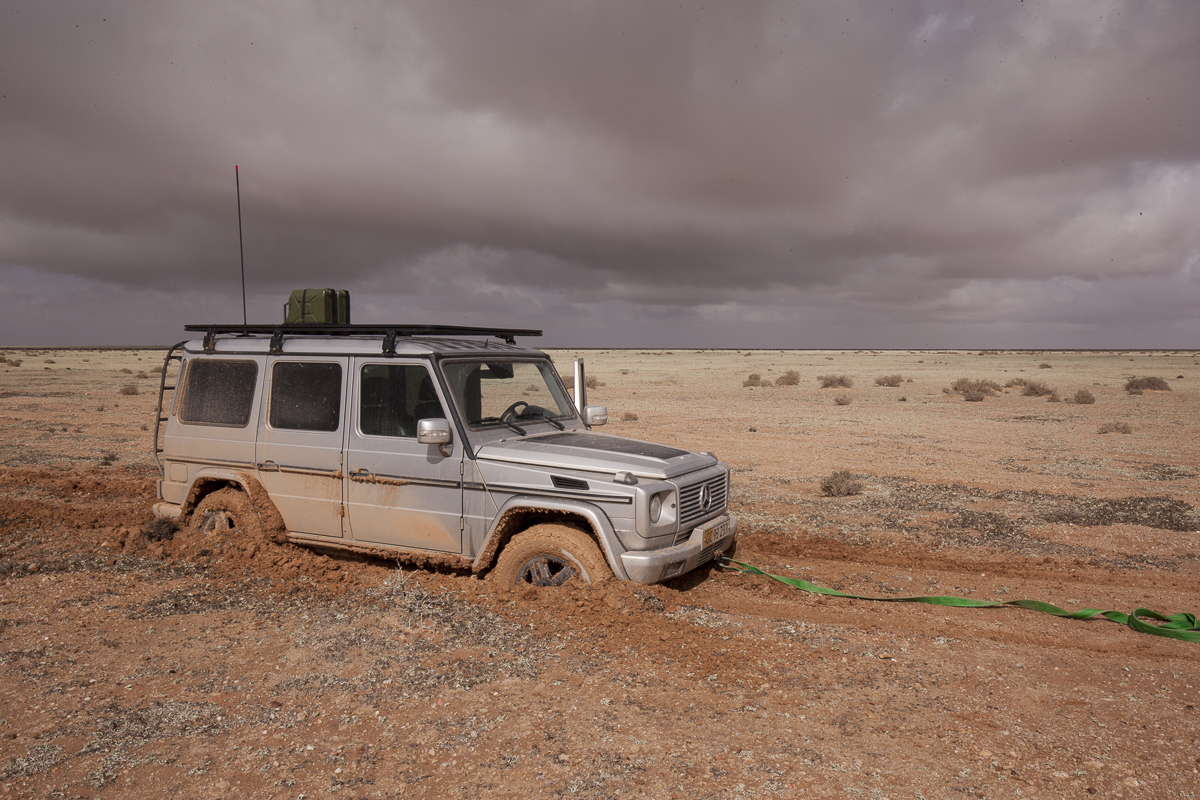
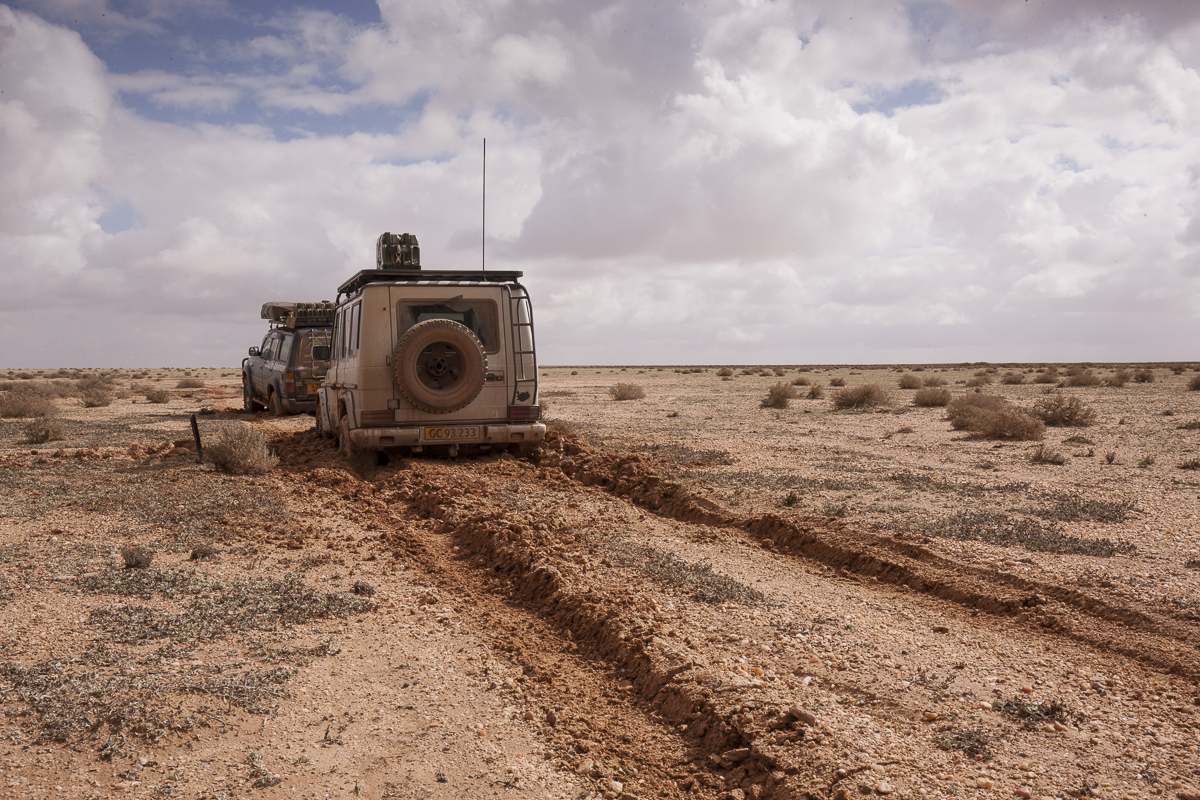
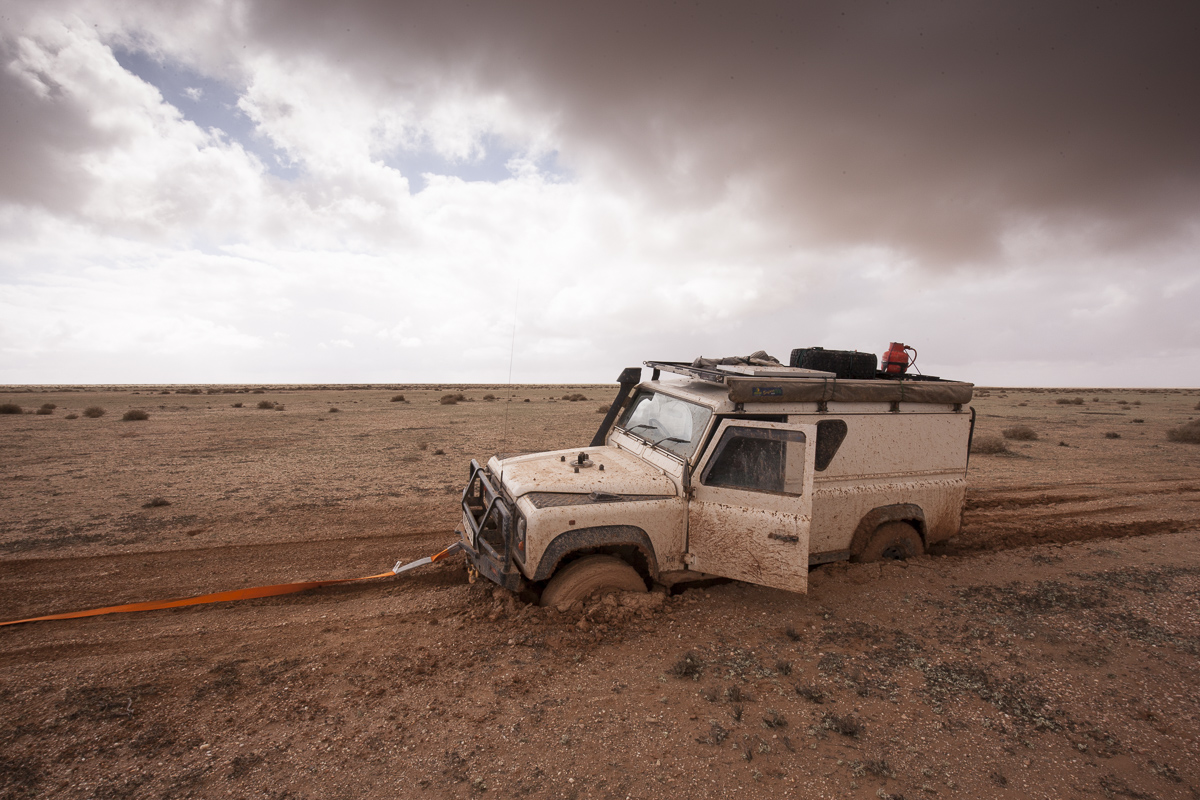

http://gwagendays.com/explore/western-sahara-18-2014.asp?id=47
During this years Western Sahara adventure we all had plenty of new experiences, one being the tiring and difficult driving in the wet desert, another would be to watch the normally very dry Sebkat Arida flooded with water from the resent heavy rainfall. This will probably be a once in a lifetime experience for all of us. We also tried to visit the Sebkat Arryd, but it was undoable the surface was not drivable, so we had to head back to the Arida. We had lunch here overlooking the interior from high ground, a disturbing rainfall passed us during this lunch-break. The desert floor and the standing water in the Sebkat had already grown a green color-cast; the organic life which had been in hibernate waiting for this moment, apparently wanted to make the most from this rare opportunity.
Again today it was a pain driving in the wet interior of the desert, - on our way towards the Sebkat a few trucks got so stuck that use of a kinetic-rope tow was needed. When heading onwards after lunch it all got a bit silly, the piste was a death-trap; you could at one moment be cruising relaxed on it on some solid foundation, the next minute you would bee sucked deep into the wet stuff. At one point it got a bit scarey because nearly all our vehicles got stuck at the same time, leaving us with very few options to get unstuck again.
We all took a minute to evaluate the situation and estimate what our best options would be. After some effort with a kinetic-rope we had succeeded in rescuing all the vehicles but mine. I had the misfortune to be on the trail when the dry crust simply collapsed and diapered beneath my Geländewagen within seconds, it was so thorough stuck that it had to be winched out from it´s misery.
We were headed north towards the line of sand-dunes witch we intended to follow further north in the direction of Laayounne. Our best option were to stay on high ground avoiding the deathly tracks. The going were pretty tough and we had to pause a few times to wait for Ken to catch up in his overheating Defender, being fairly low-powered the small engine simply struggled too hard on the soft ground. During our battle to cover some distance and elope the soaked desert, the sky did not look to promising, we were concerned by the passing of dark clouds with potential rainfall; fortunately the rain did not get to serious and we only saw a few scattered raindrops.
After a while we finally made it to some more drier regions and the driving got a bit more relaxed. We even had the opportunity to collect some wood for a bonfire. During the last few days it had been difficult to get wood in the normally very dry parts of the Western Sahara.
That evening we made camp under blue skies on the solid desert-bed in between the dunes; we had finally reached the dune-belt that stretches up along the North Pacific from Boujdour to Laayounne.

























http://gwagendays.com/explore/western-sahara-18-2014.asp?id=47
thebigblue
Adventurer
Spectacular photographs! Thanks for sharing them, as well as your trip report also. I backapcked through Maroc in the early 1990s, visitting the Anti Atlas area around Jebel Siroua, which looks vaguely familiar from your pics. Fantastic country.
Your welcome, my pleasure.
Yes Morocco and Western Sahara is indeed a spectacular spot... Report from my first trip here: http://gwagendays.com/explore/western-sahara-2012.asp?id=3 and also others can be found on http://gwagendays.com
thebigblue
Adventurer
Day 14
It was really really great to have a completely relaxed day without any big adventures for a change. I loved the orportunity to wind down a bit, and also took some time to enjoy the view of the endless sand-dunes. Today the weather apparently would like to befriend us a little, maybe wanting to make a menace after the last few days with furious temper, no matter, we were gifted with some spectacular nice hot and sunny hours, from dawn to dusk. What a relief, we really have had enough adventures the last few days in the desert to last for a while.
Today would be the big day in the dunes. Steve´s 100-series was completely new-build just in time for this trip, and the truck had been put to some rough tests the last two weeks. Filling his auxiliary fuel-tank for the first time were a bad experience, the breather-lines did not do a proper job, and fuel leaked from underneath the Land Cruiser. Yesterday when he had got stuck close to the Sebkat Arida I pulled him out from the mud and in the proces the front-bumper got torn upwards a fair bit. So while the rest of us had some fun in the dunes Paul and Steve would work on re-aligning the bumper correctly.
Normally driving in dunes will be impossible without airing down the tires a lot. You will also need some momentum to get up to the top of the dune, approaching it from the upwind side with the smallest angel. From time to time you will need more than one attempt to get the correct amount of speed and momentum to reach the crest with precisely the proper speed. Going to fast up the dune you will end up jumping the crest with too high a velocity; resulting in a much too fast descent on the steep down-wind side of the dune. If you´re in luck, all that will happen is that you will damage the front of you car very badly hitting the solid desert-base at the foot of the dune, - if you are really really unlucky you air-bags will go off. Neither being a want-able scenario.
But today dune-driving were as easy as doing the dishes, but so much more fun. As a side-effect caused by the rainfall the dunes had a fairly hard crust on top; so nearly no airing down were needed for the job at hand, we had no trouble applying the correct amount of throttle and no need to get the line approaching the dune-top spot-on. Childsplay. The big problem were that the crest was so firm that you would get stuck on top of it, normally the crest will quickly surrender and give in from the weight of the truck, but oh-no-no not today. Of cause I had to climb the highest dune in sight, now the going was so easy, and naturally I got solid stuck on top, - all four wheels spinning along in the air, - the magic of having three differential-lockers.
We spend all the afternoon in the most lovely manner, - driving over sand-dune after sand-dune on the dune-belt that stretches up along the North Pacific coastline.
Camp was made early today in between a nice collection of dunes, surrounding us and completely sheltering us from whatever wind that were present. The desert-base had a very big collection of petrified wood on display for us, and I also managed to find two pieces of petrified corral.
After setting up camp the tiring work on removing all the, now rock-solid, mud from yesterdays adventure would begin. We where all more or less preoccupied for several hours with this very boring task. So after that tedious job I were happy to climb a large sand dune and watch the sun-set from the summit, having a 360 degrees overview to nothing but dunes.
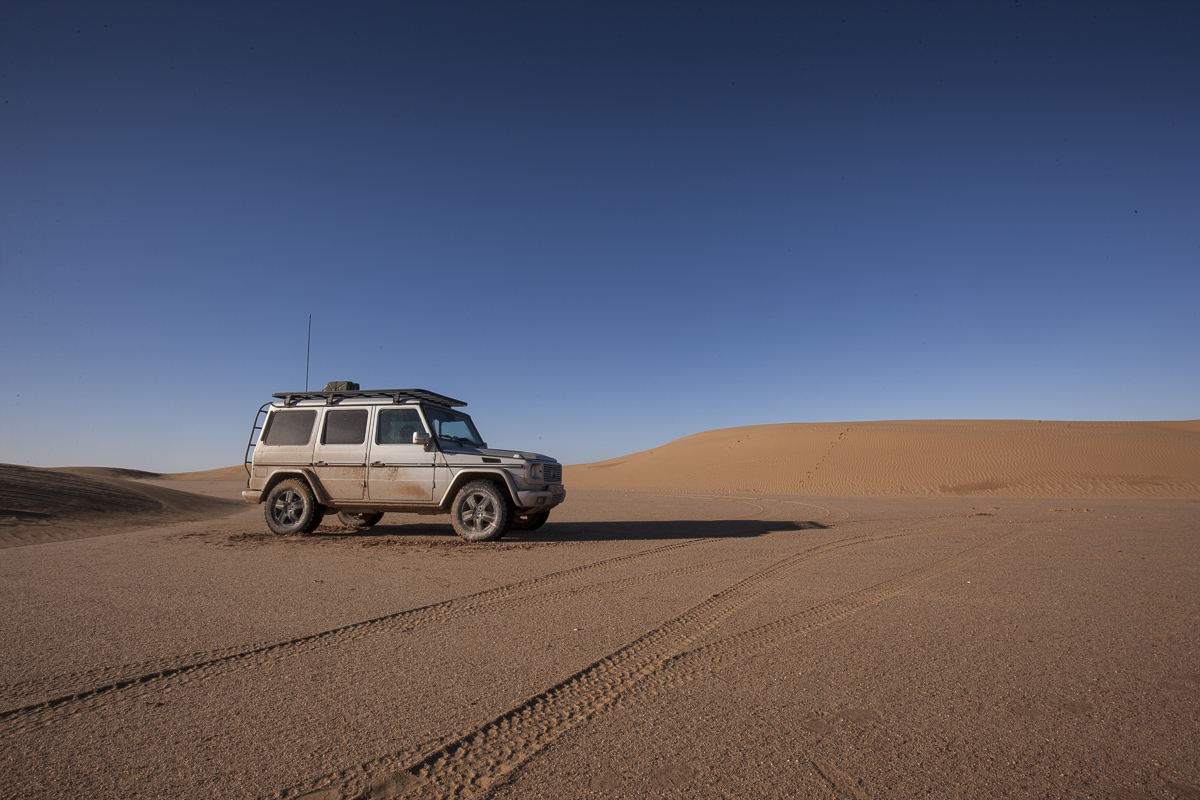


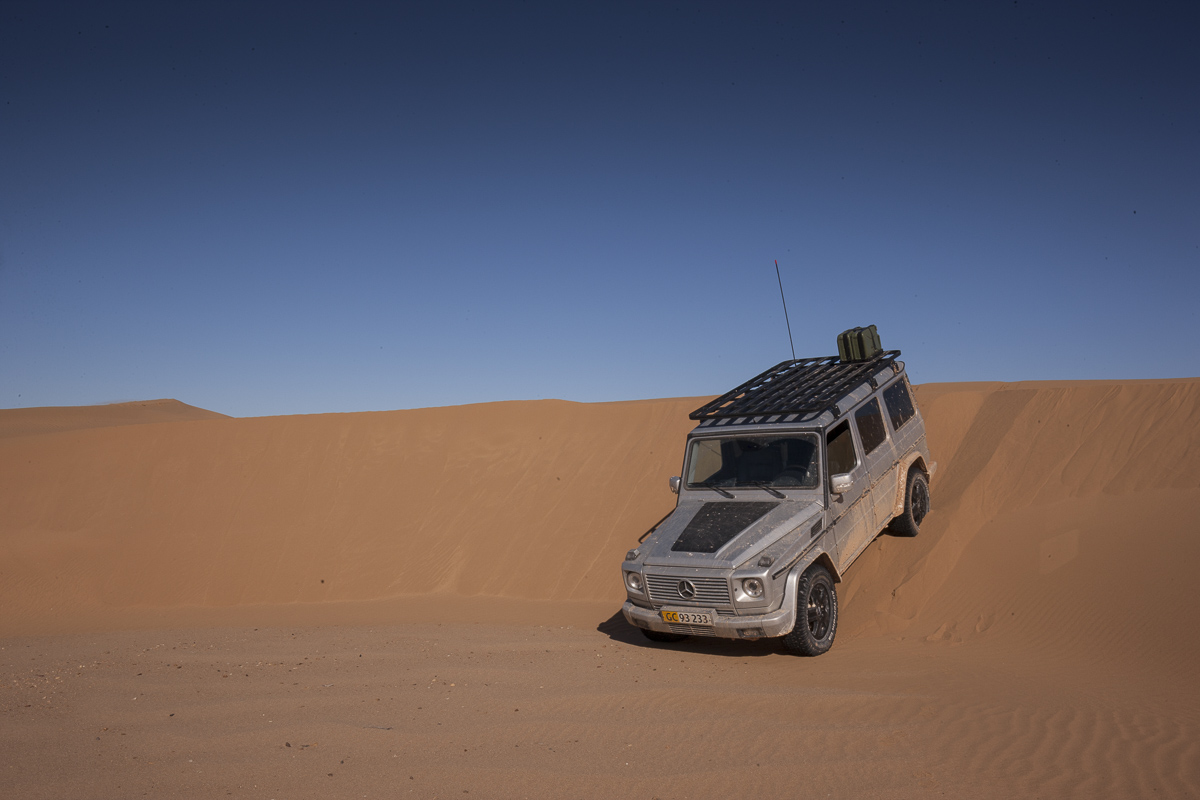
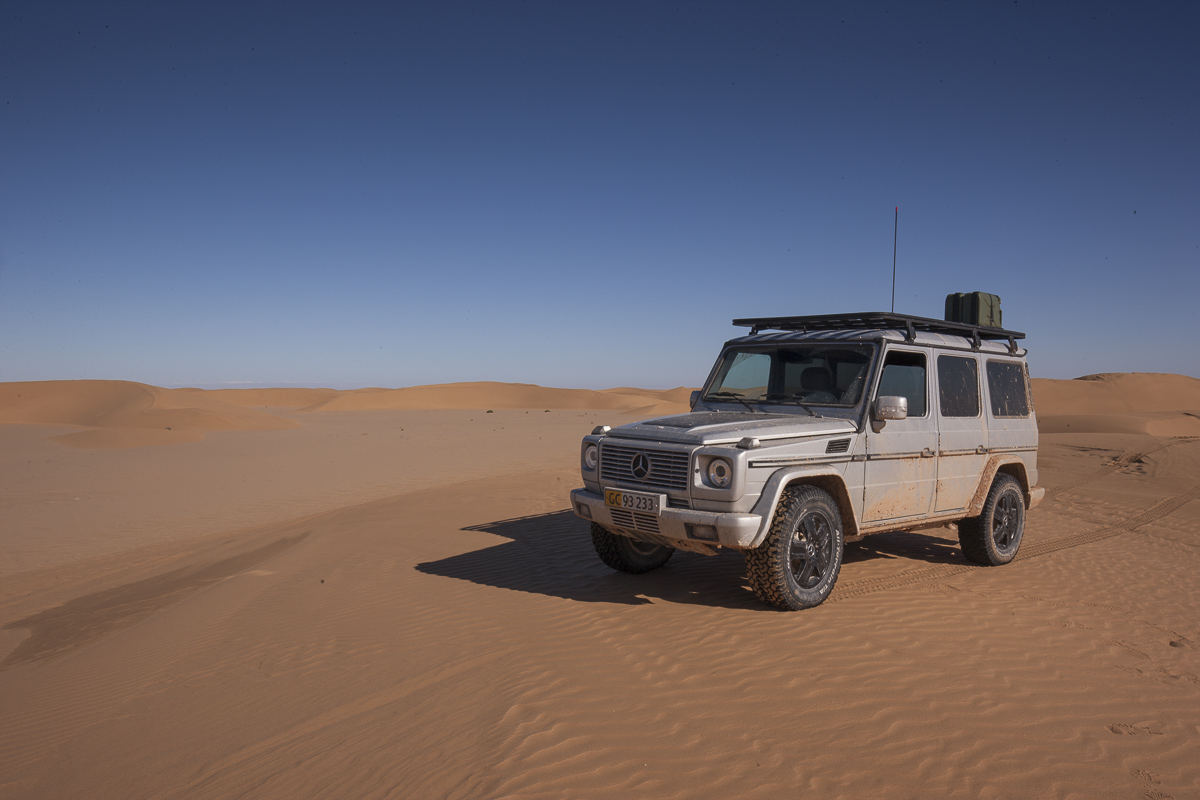
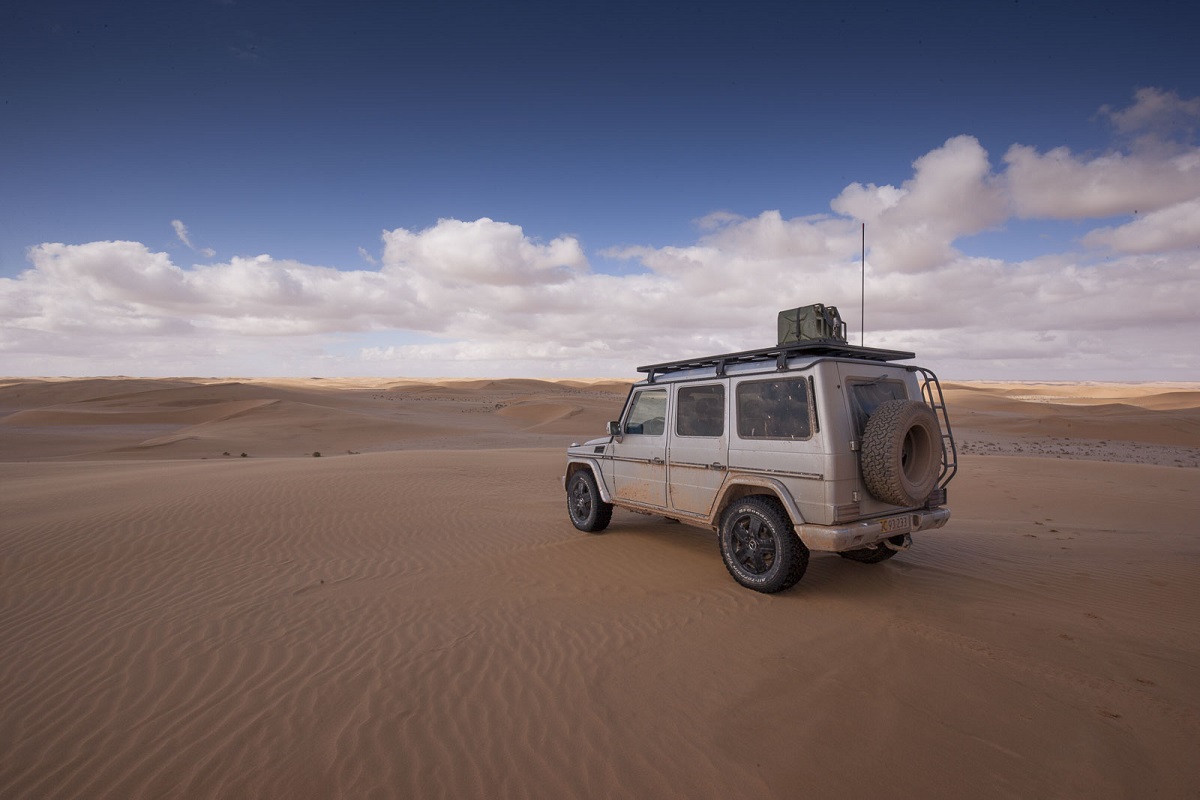

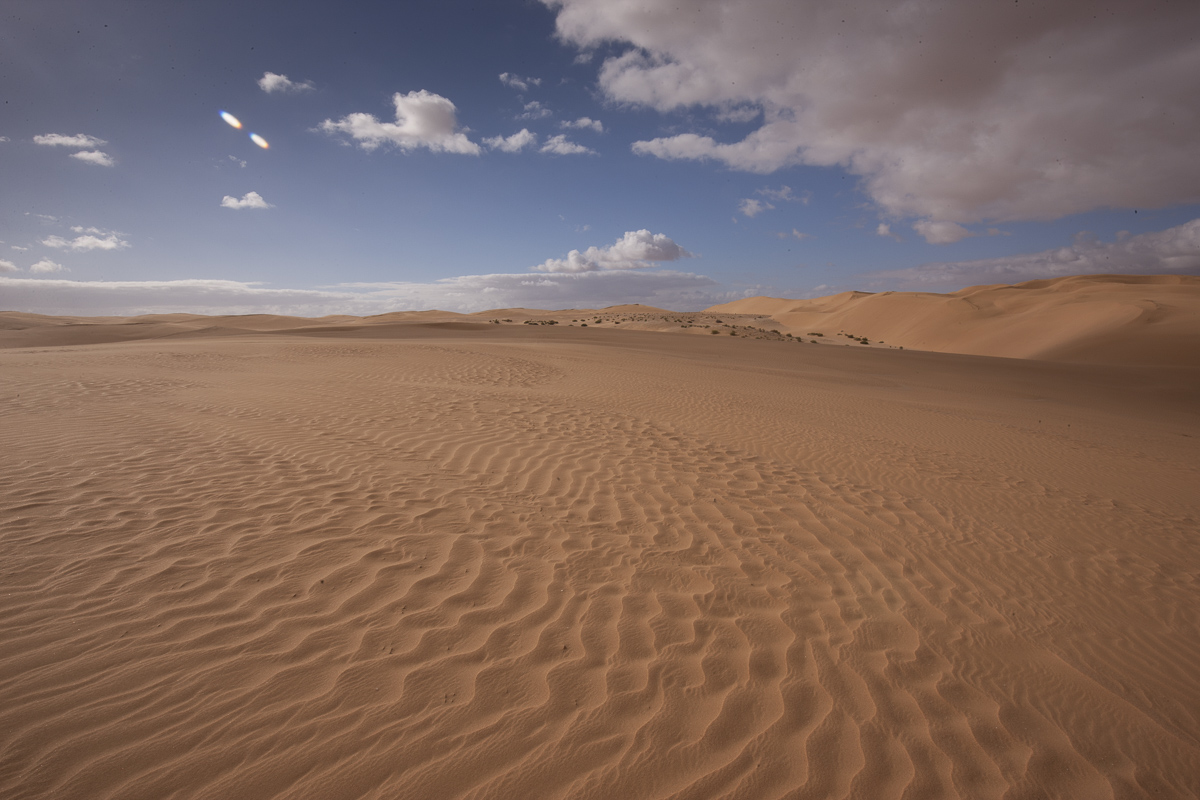
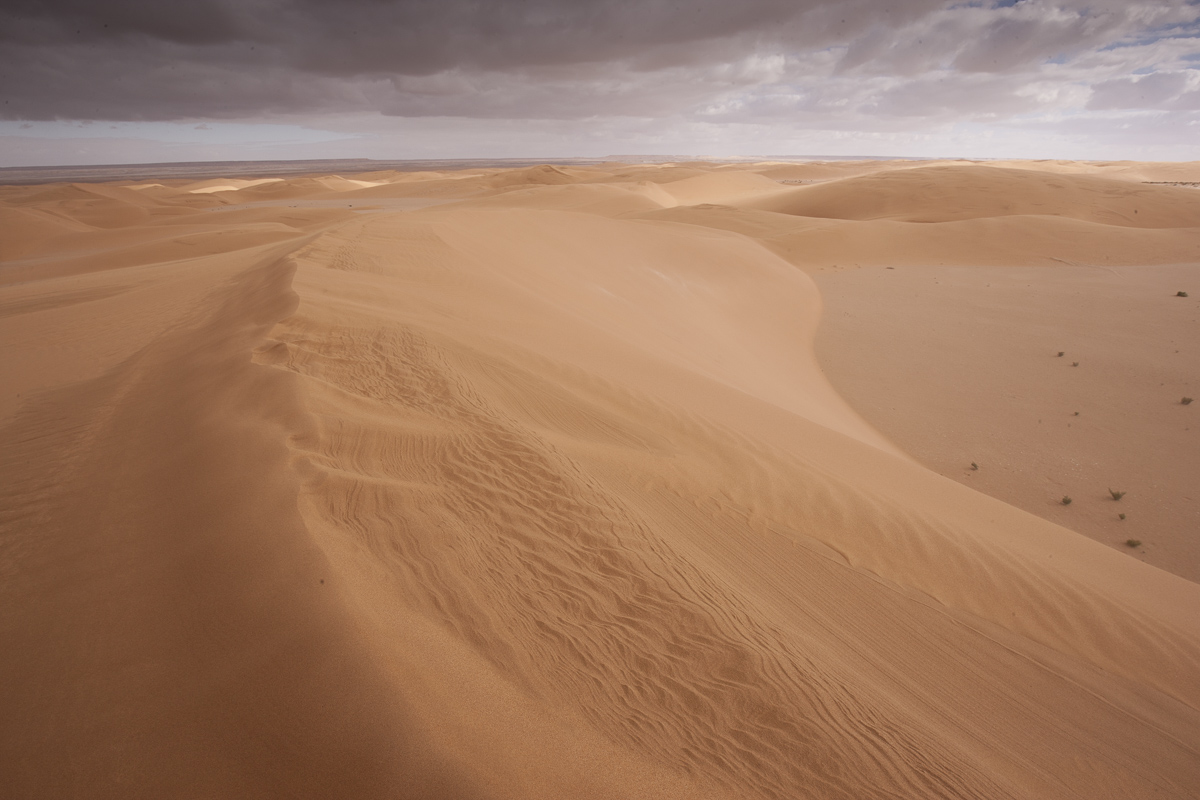
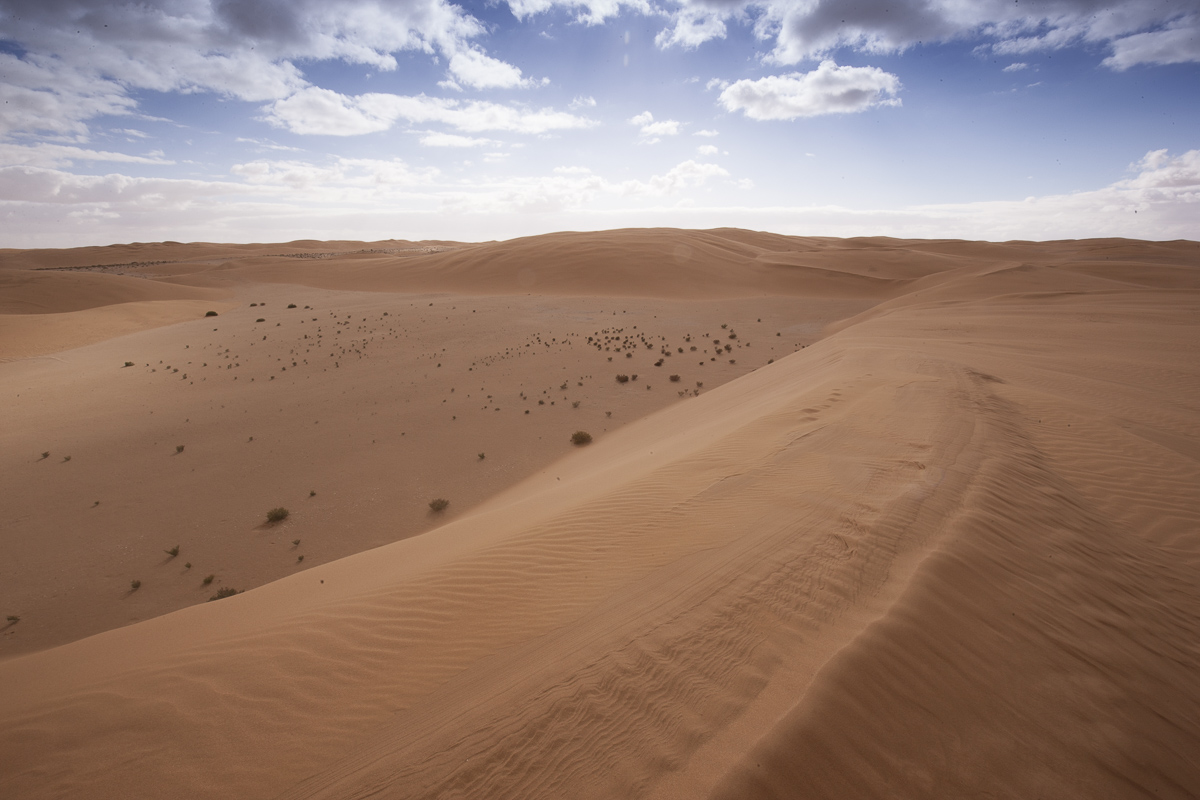

http://gwagendays.com/explore/western-sahara-19-2014.asp?id=48
It was really really great to have a completely relaxed day without any big adventures for a change. I loved the orportunity to wind down a bit, and also took some time to enjoy the view of the endless sand-dunes. Today the weather apparently would like to befriend us a little, maybe wanting to make a menace after the last few days with furious temper, no matter, we were gifted with some spectacular nice hot and sunny hours, from dawn to dusk. What a relief, we really have had enough adventures the last few days in the desert to last for a while.
Today would be the big day in the dunes. Steve´s 100-series was completely new-build just in time for this trip, and the truck had been put to some rough tests the last two weeks. Filling his auxiliary fuel-tank for the first time were a bad experience, the breather-lines did not do a proper job, and fuel leaked from underneath the Land Cruiser. Yesterday when he had got stuck close to the Sebkat Arida I pulled him out from the mud and in the proces the front-bumper got torn upwards a fair bit. So while the rest of us had some fun in the dunes Paul and Steve would work on re-aligning the bumper correctly.
Normally driving in dunes will be impossible without airing down the tires a lot. You will also need some momentum to get up to the top of the dune, approaching it from the upwind side with the smallest angel. From time to time you will need more than one attempt to get the correct amount of speed and momentum to reach the crest with precisely the proper speed. Going to fast up the dune you will end up jumping the crest with too high a velocity; resulting in a much too fast descent on the steep down-wind side of the dune. If you´re in luck, all that will happen is that you will damage the front of you car very badly hitting the solid desert-base at the foot of the dune, - if you are really really unlucky you air-bags will go off. Neither being a want-able scenario.
But today dune-driving were as easy as doing the dishes, but so much more fun. As a side-effect caused by the rainfall the dunes had a fairly hard crust on top; so nearly no airing down were needed for the job at hand, we had no trouble applying the correct amount of throttle and no need to get the line approaching the dune-top spot-on. Childsplay. The big problem were that the crest was so firm that you would get stuck on top of it, normally the crest will quickly surrender and give in from the weight of the truck, but oh-no-no not today. Of cause I had to climb the highest dune in sight, now the going was so easy, and naturally I got solid stuck on top, - all four wheels spinning along in the air, - the magic of having three differential-lockers.
We spend all the afternoon in the most lovely manner, - driving over sand-dune after sand-dune on the dune-belt that stretches up along the North Pacific coastline.
Camp was made early today in between a nice collection of dunes, surrounding us and completely sheltering us from whatever wind that were present. The desert-base had a very big collection of petrified wood on display for us, and I also managed to find two pieces of petrified corral.
After setting up camp the tiring work on removing all the, now rock-solid, mud from yesterdays adventure would begin. We where all more or less preoccupied for several hours with this very boring task. So after that tedious job I were happy to climb a large sand dune and watch the sun-set from the summit, having a 360 degrees overview to nothing but dunes.











http://gwagendays.com/explore/western-sahara-19-2014.asp?id=48
YukonMontanaTannerTrapper
Explorer
The entire time I read your trip report and check out your pictures it makes me think how much I would have liked, or maybe more appropriately said, loved, to have been along with you guys. I can't even imagine how much fun this must be. Thanks for taking the time to post up. :clapsmile
Jerry
Jerry
thebigblue
Adventurer
Day 15 #1
The conception and definition of what art is will forever be debatable. We all probably will have a different view on the art-industry, although artist will argue that it is not an industry, but individuals creating unique pieces of work, - their creations. I myself come from a family of artist on my mothers side, her father being an artist as well as her youngest brother, and also his daughter, my cuisine. They all have made art their way of living being professional artist, whether it has been producing drawings, paintings or sculptures.
With this in mind, I can comfortably tell you that not all what they produce in the name of art would be something I would want to have in my home. But some of the stuff is really really awesome, meaning it is a beautiful creation or a well-thought-out piece. I like pretty well crafted art, not the ugly disturbing kind, although this might very well fall in between the lines drawing the definition of art. The, to me, pretty art-stuff often has a small twist to it that makes me smile, - like a small bronze sculpture my uncle made some years ago portraying a pie-balded cow. The dark spots were simply hollow parts in the cows body, not a surface with different structure or color, very clever I think, and it makes me smile for some reason.
This morning I had another early rise to watch the sun-rise in this truly spectacular place in the Western Sahara. Here I where surrounded by endless rows of sand-dunes as far as my eyes would reach. Sand-dunes are what we normally think Sahara to be, myself included, still a significant part of the Saharan surface actually has gravel and rock on it, but this was the exact conception of a desert, sand-dunes and sunshine.
I truly felt like I was looking at one of natures biggest pieces of art, a collection of beautiful sculptures, - all laid out in front of me to behold and enjoy. Each dune had it´s very own expression, a unique shape and surface-structure. I also take pleasure in the thought that these dunes, these pieces of art, is forever changing. They will only exist in the same shape and form for a tiny fraction of time, literally chancing from second to second, and no one will ever experience the same dune again. The weather will change them endlessly, wind and humidity having the strongest impact here.
Today the dunes had a special visual impact, the surfaces and the structure being different and uncommon as a result of the resent rainfall, compacting the sand in a another manner than normal due to the humidity.
Even though we all might have our own opinion on the definition of art, - I like to believe that we can all agree that this is amongst one of natures greatest creations of art. Bellow you will find the first part of a collection of portraits I did of the dunes that unique peaceful morning in the Western Sahara.
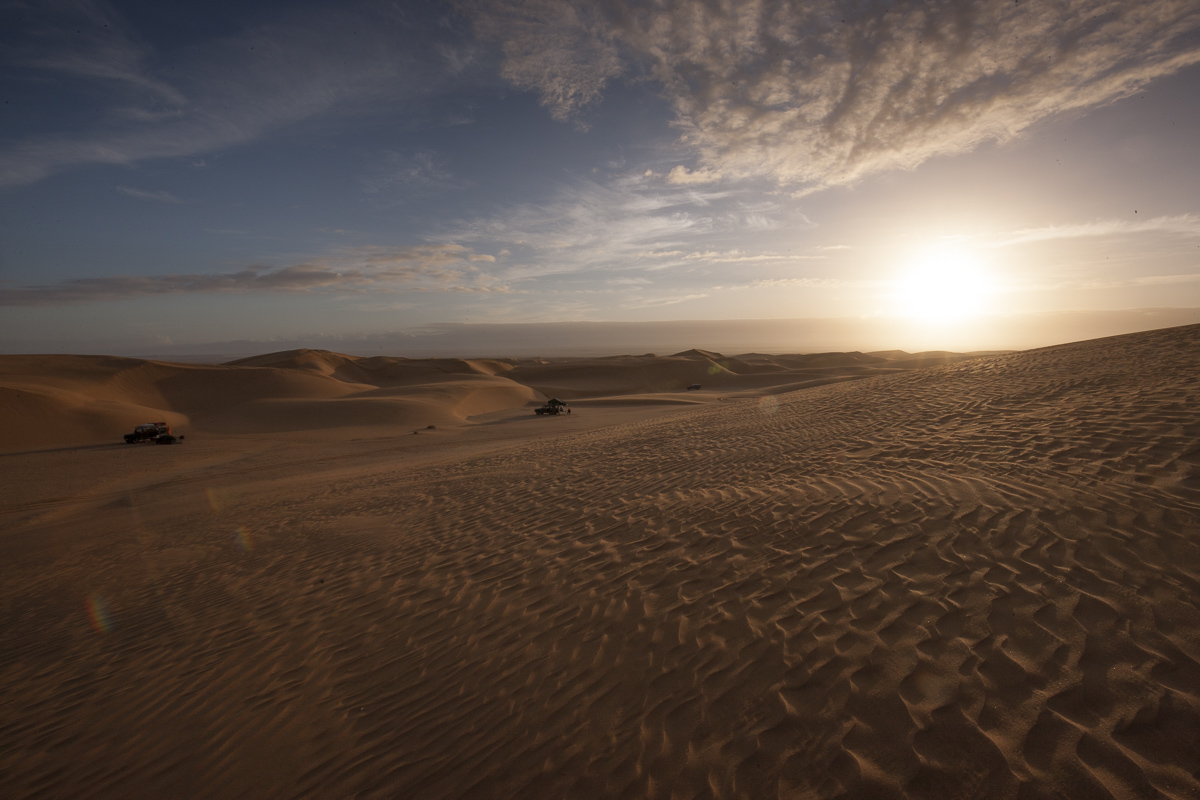

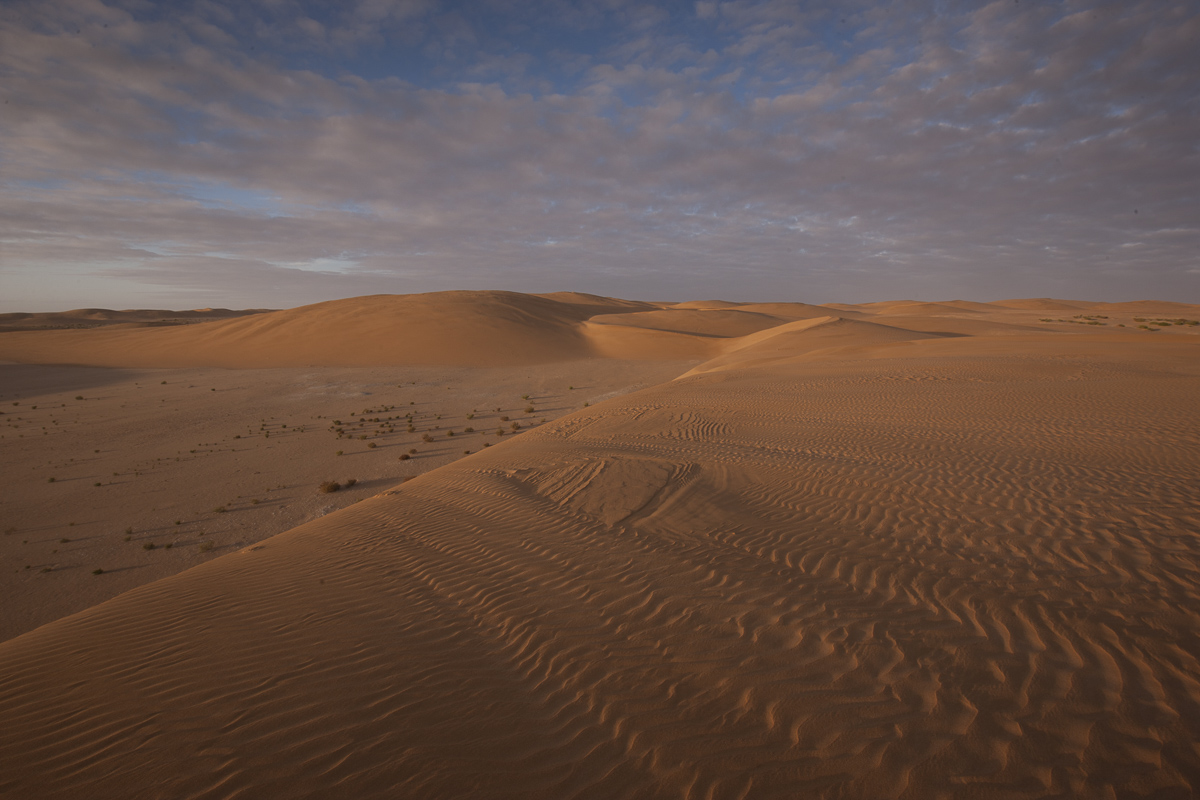
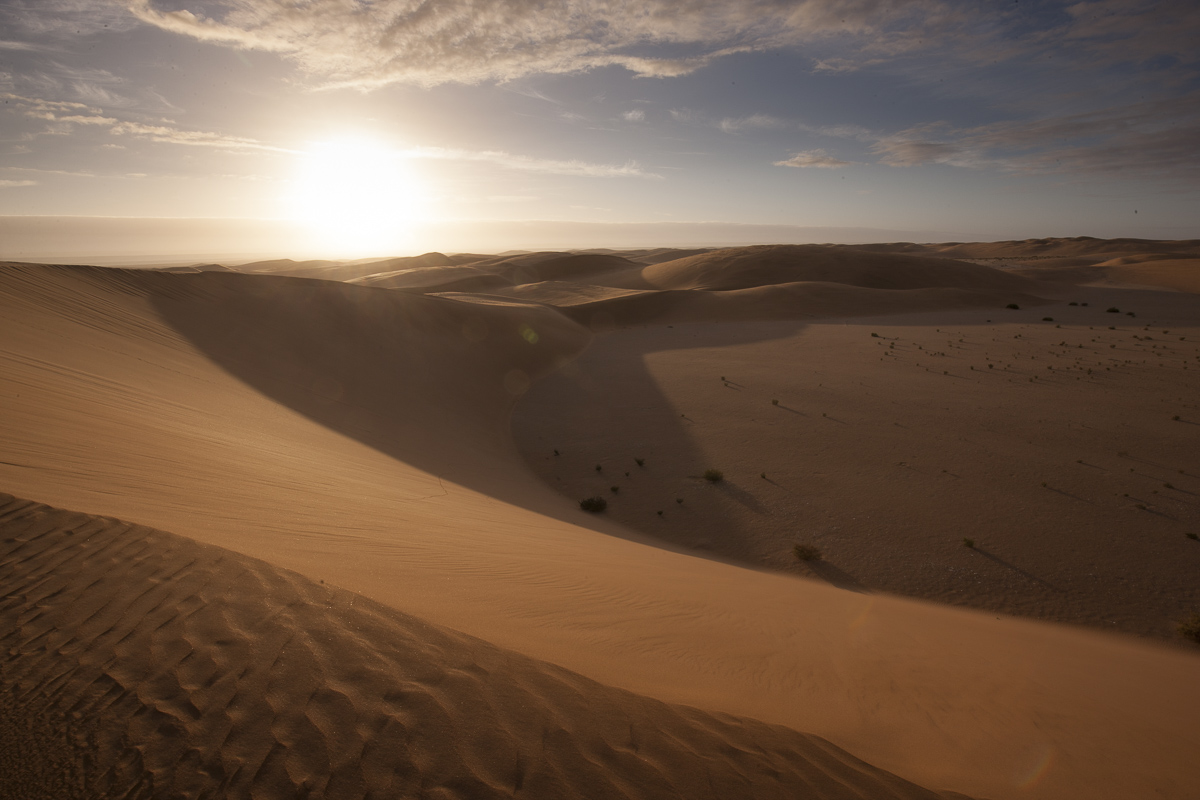

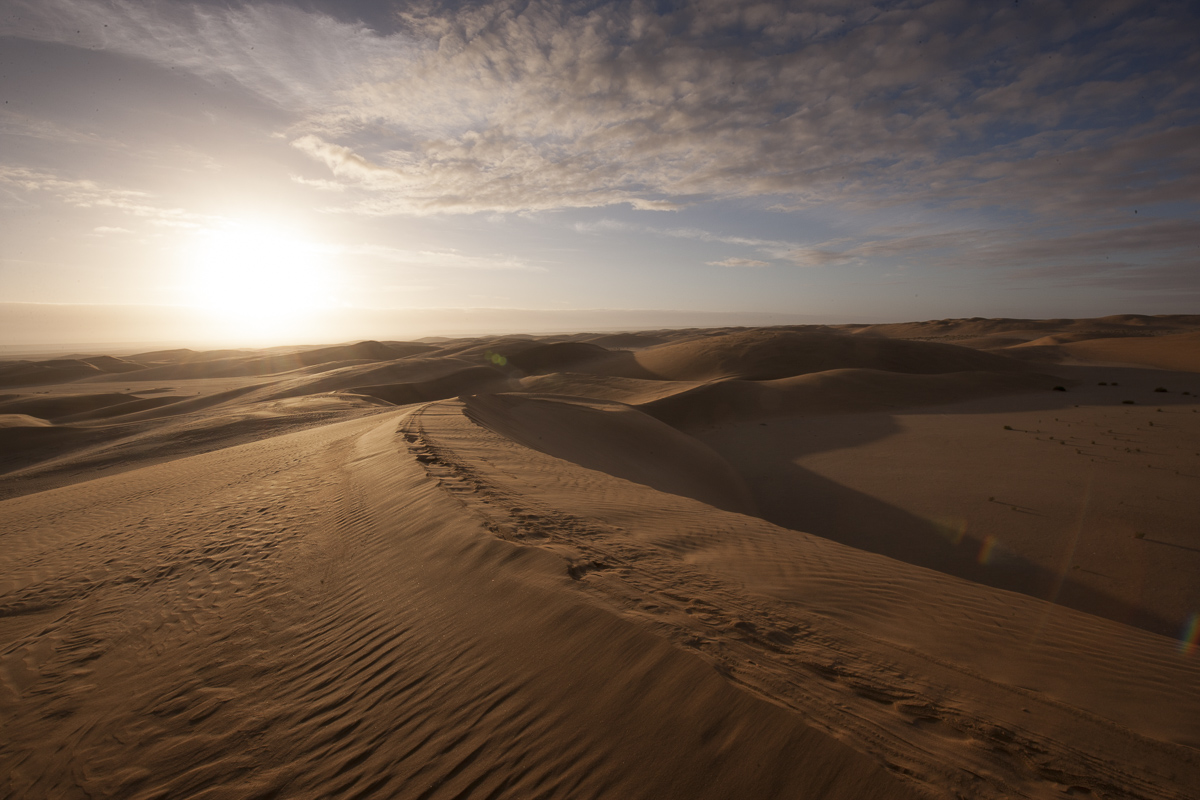
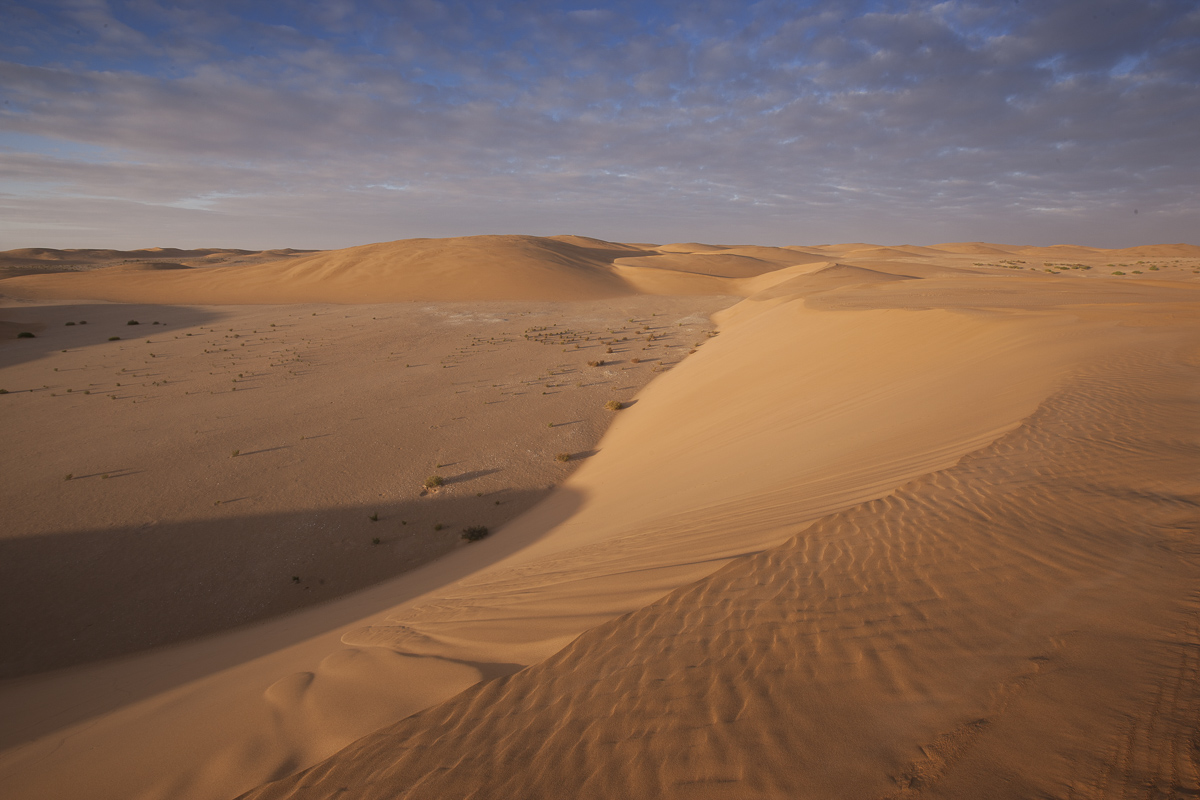

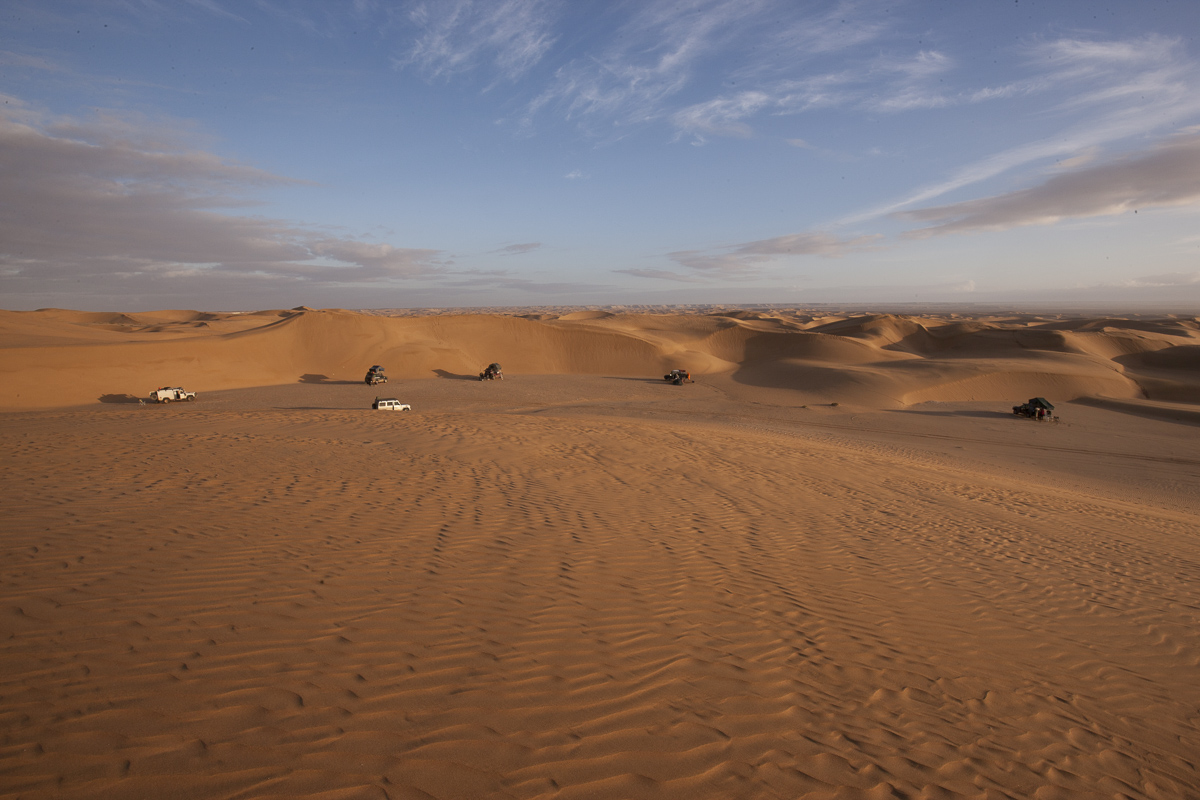
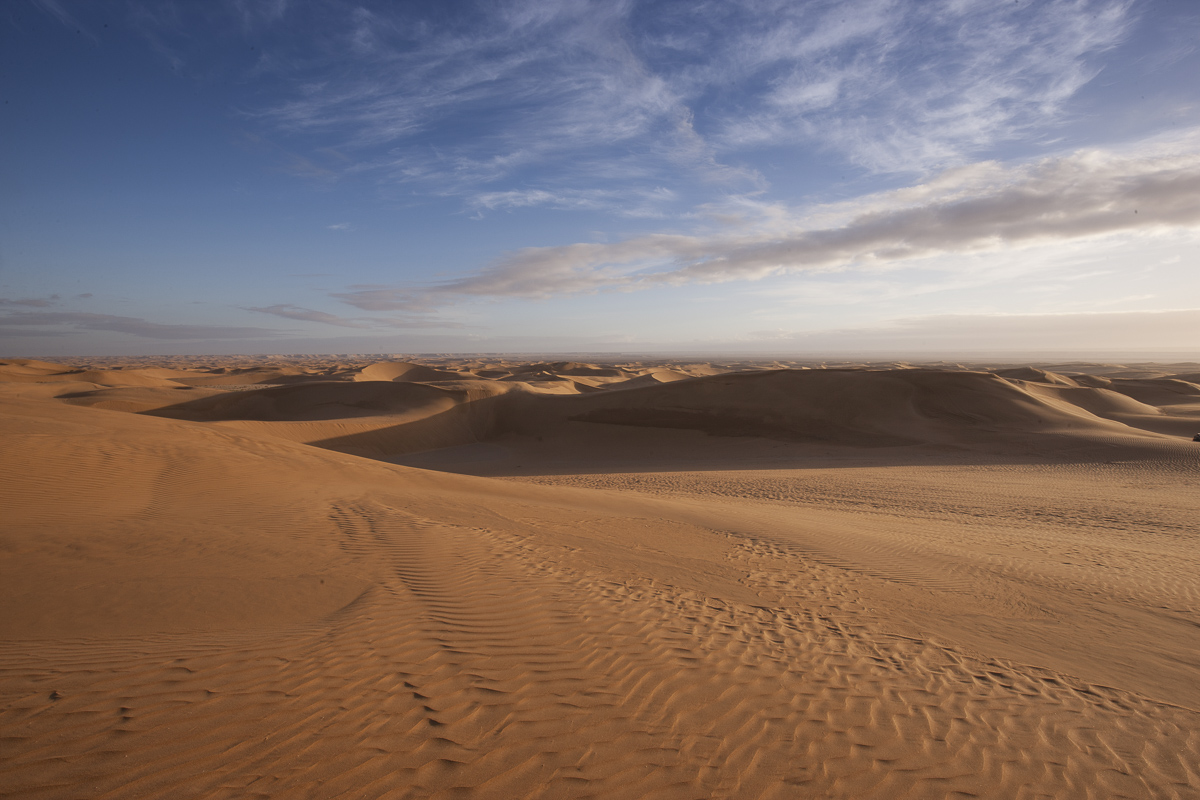
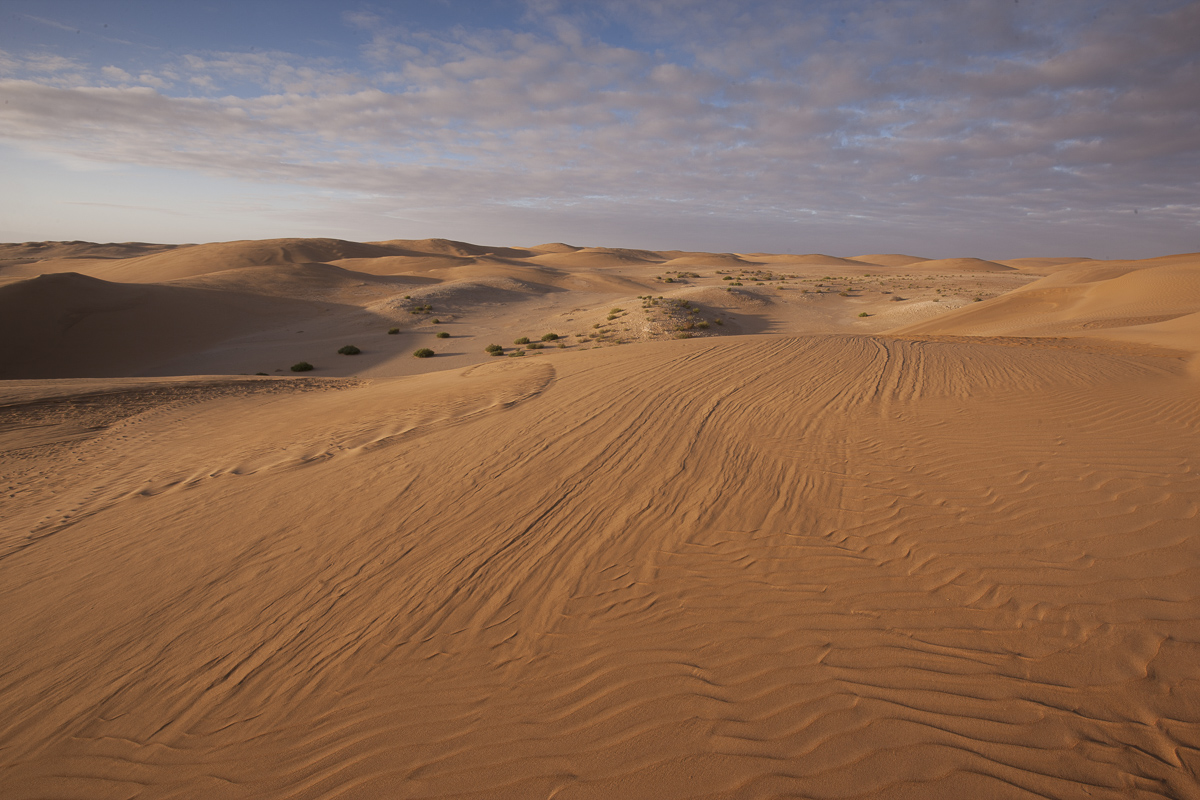

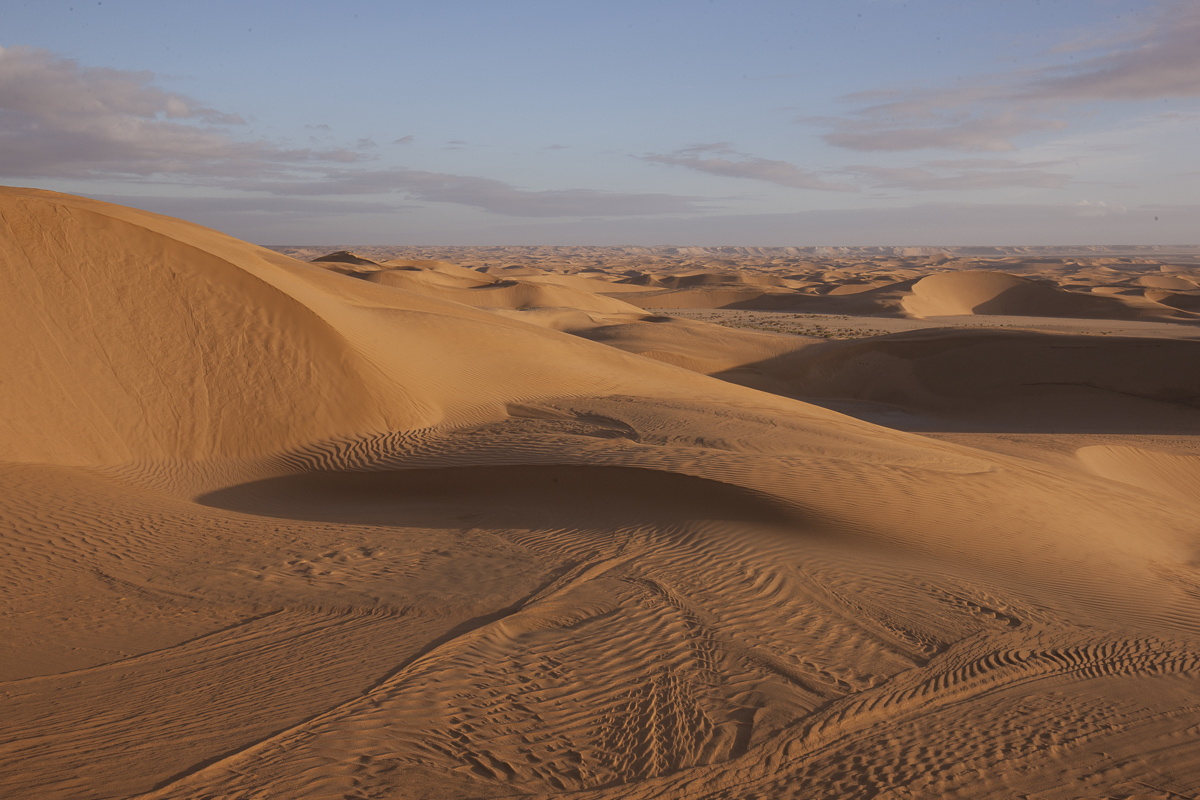
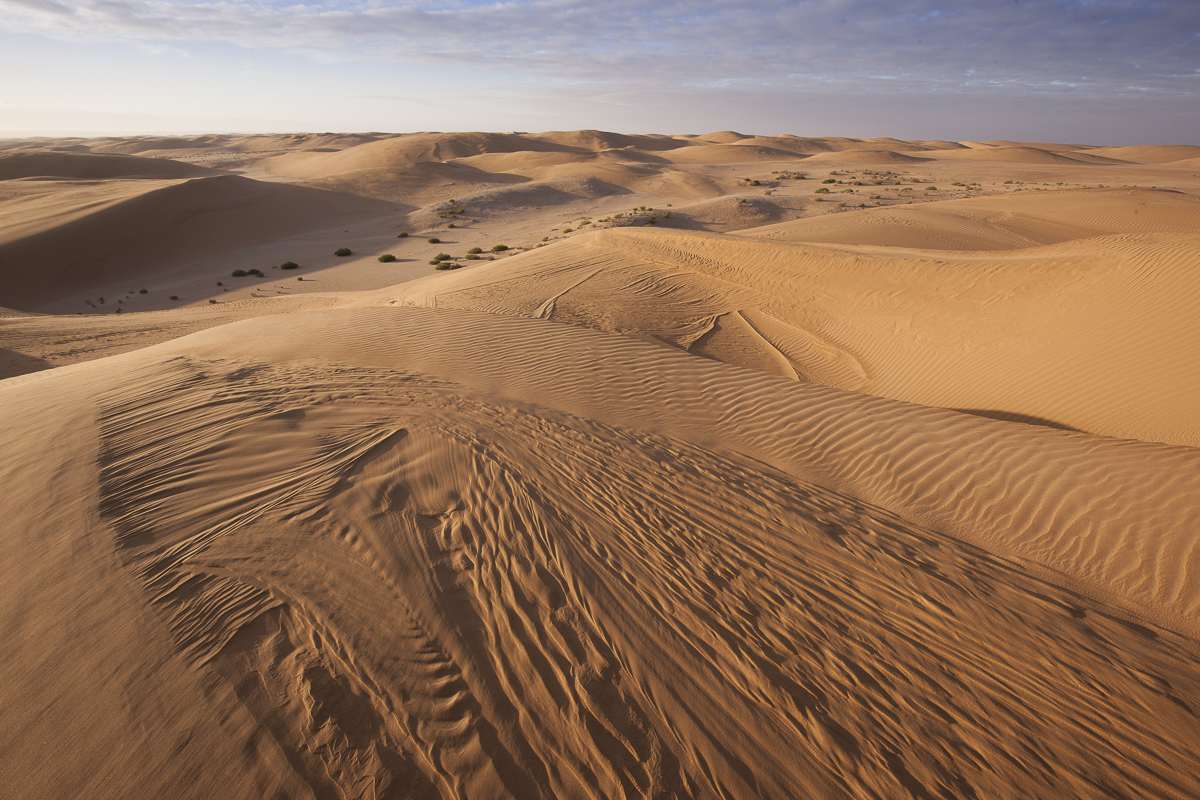
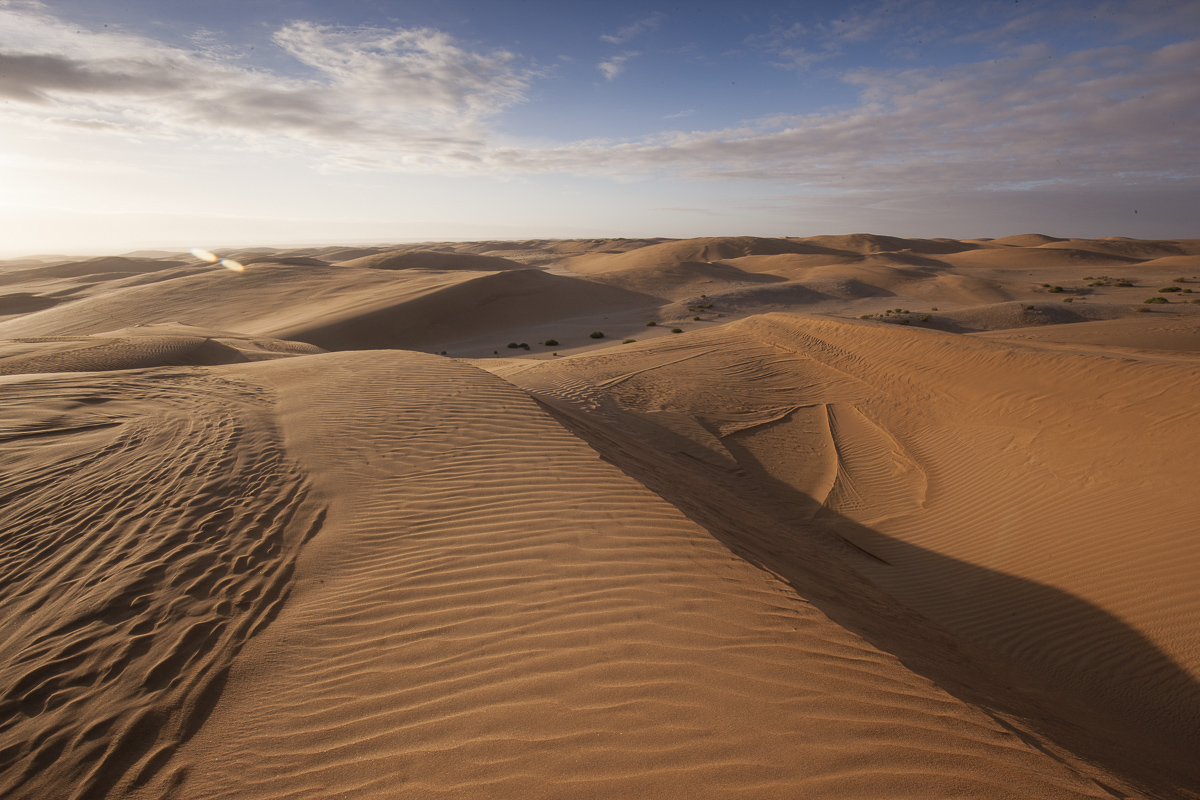

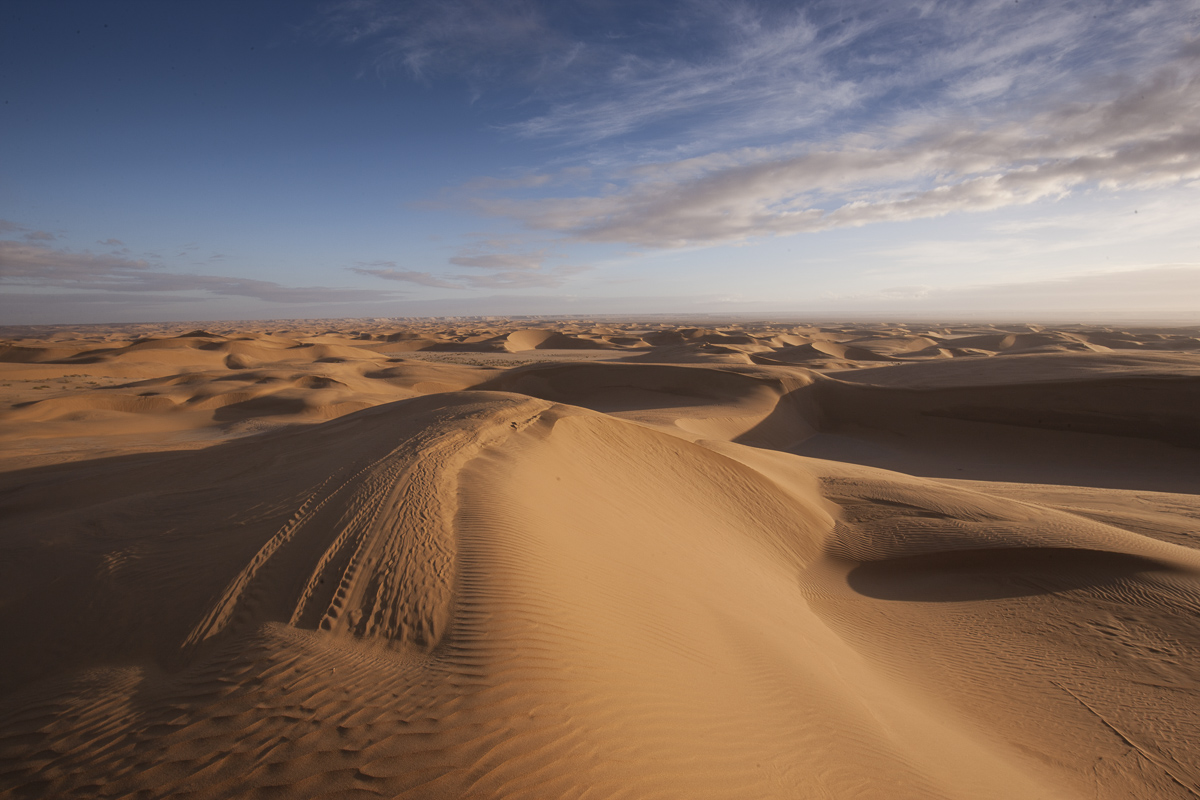
http://gwagendays.com/explore/western-sahara-20-2014.asp?id=49
The conception and definition of what art is will forever be debatable. We all probably will have a different view on the art-industry, although artist will argue that it is not an industry, but individuals creating unique pieces of work, - their creations. I myself come from a family of artist on my mothers side, her father being an artist as well as her youngest brother, and also his daughter, my cuisine. They all have made art their way of living being professional artist, whether it has been producing drawings, paintings or sculptures.
With this in mind, I can comfortably tell you that not all what they produce in the name of art would be something I would want to have in my home. But some of the stuff is really really awesome, meaning it is a beautiful creation or a well-thought-out piece. I like pretty well crafted art, not the ugly disturbing kind, although this might very well fall in between the lines drawing the definition of art. The, to me, pretty art-stuff often has a small twist to it that makes me smile, - like a small bronze sculpture my uncle made some years ago portraying a pie-balded cow. The dark spots were simply hollow parts in the cows body, not a surface with different structure or color, very clever I think, and it makes me smile for some reason.
This morning I had another early rise to watch the sun-rise in this truly spectacular place in the Western Sahara. Here I where surrounded by endless rows of sand-dunes as far as my eyes would reach. Sand-dunes are what we normally think Sahara to be, myself included, still a significant part of the Saharan surface actually has gravel and rock on it, but this was the exact conception of a desert, sand-dunes and sunshine.
I truly felt like I was looking at one of natures biggest pieces of art, a collection of beautiful sculptures, - all laid out in front of me to behold and enjoy. Each dune had it´s very own expression, a unique shape and surface-structure. I also take pleasure in the thought that these dunes, these pieces of art, is forever changing. They will only exist in the same shape and form for a tiny fraction of time, literally chancing from second to second, and no one will ever experience the same dune again. The weather will change them endlessly, wind and humidity having the strongest impact here.
Today the dunes had a special visual impact, the surfaces and the structure being different and uncommon as a result of the resent rainfall, compacting the sand in a another manner than normal due to the humidity.
Even though we all might have our own opinion on the definition of art, - I like to believe that we can all agree that this is amongst one of natures greatest creations of art. Bellow you will find the first part of a collection of portraits I did of the dunes that unique peaceful morning in the Western Sahara.

















http://gwagendays.com/explore/western-sahara-20-2014.asp?id=49
Last edited:
thebigblue
Adventurer
Day 15 #2
It´s strange how we over time adapt or adjust to a certain level of reference. By this I´m referring to the fact that I remember today as being a very easy and rather non-eventful day in the desert. And that´s actually not true.
The weather showed us her very best, blue skies, sunshine and warmth. And the Western Sahara presented us with some amazing scenery, dunes bigger that I have ever seen, and a great view over the desert from an elevated plateau. The dunes had dried out a bit more today, and when we had to climb a very steep and long inclement we finally had to air down a bit more. Steve were struggling a bit in his huge 100-series with its big overhang and hence poor approach- and departure angles, and gut stuck between a hard face filled with small stones and some soft sand. We had to winch him out.
After a pleasant drive north along the dune belt, which we had to follow quite closely because the desert west of the dunes were quite wet, with sanding surface water in many places. We made camp for the night down-wind from a dune, somewhere south from the conveyer-belt feeding the Jorf Lasfar port with phosphate rock.
Phosphate rock mining and processing is one of Morocco's leading industries. All the Moroccan phosphate is produced by the state-owned Office Chérifien des Phosphates, founded in 1920, whic is responsible for managing and controlling all aspects of the phosphate mining. The combined capacity of the main facilities—at Youssoufia, Benguerir, Bou Craa, Sidi Chenan, and Khouribga—was 27 million tons per year.
The Office Chérifien des Phosphates (OCP), is the world's largest exporter of phosphates and derivatives. OCP already controls around 45 percent of the market for lime phosphate, and more than 30 percent of global phosphate exports – and they're looking to expand. As part of this expansion strategy, the company has implemented a significant investment program that includes a EUR 90 million contract with Danish owned FLSmidth to supply equipment for a phosphate terminal at Jorf Lasfar port.
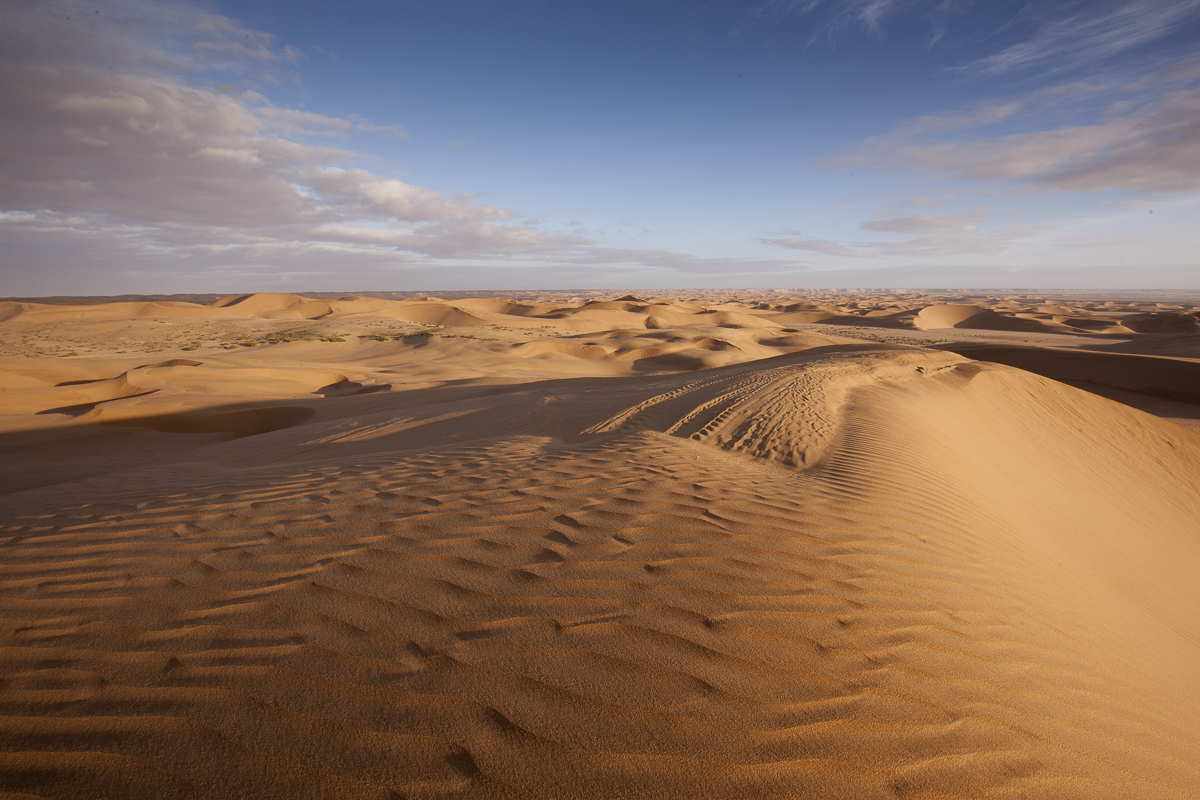
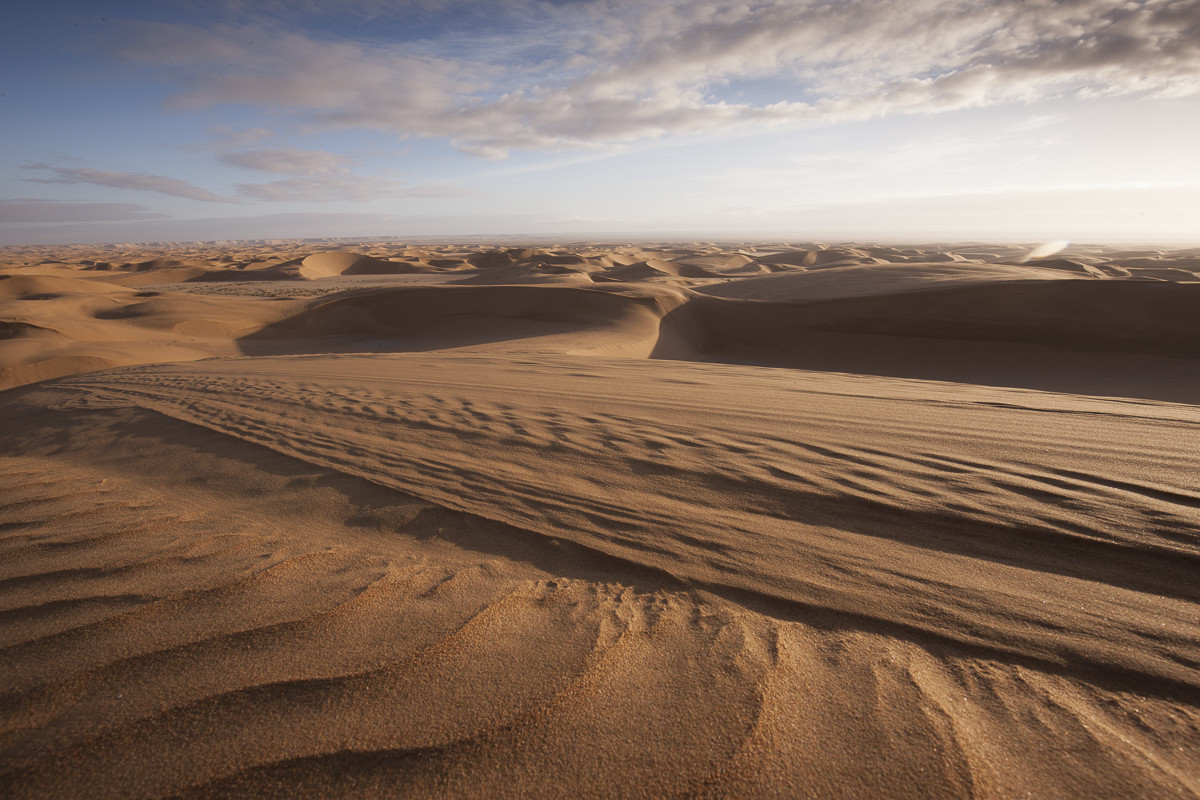
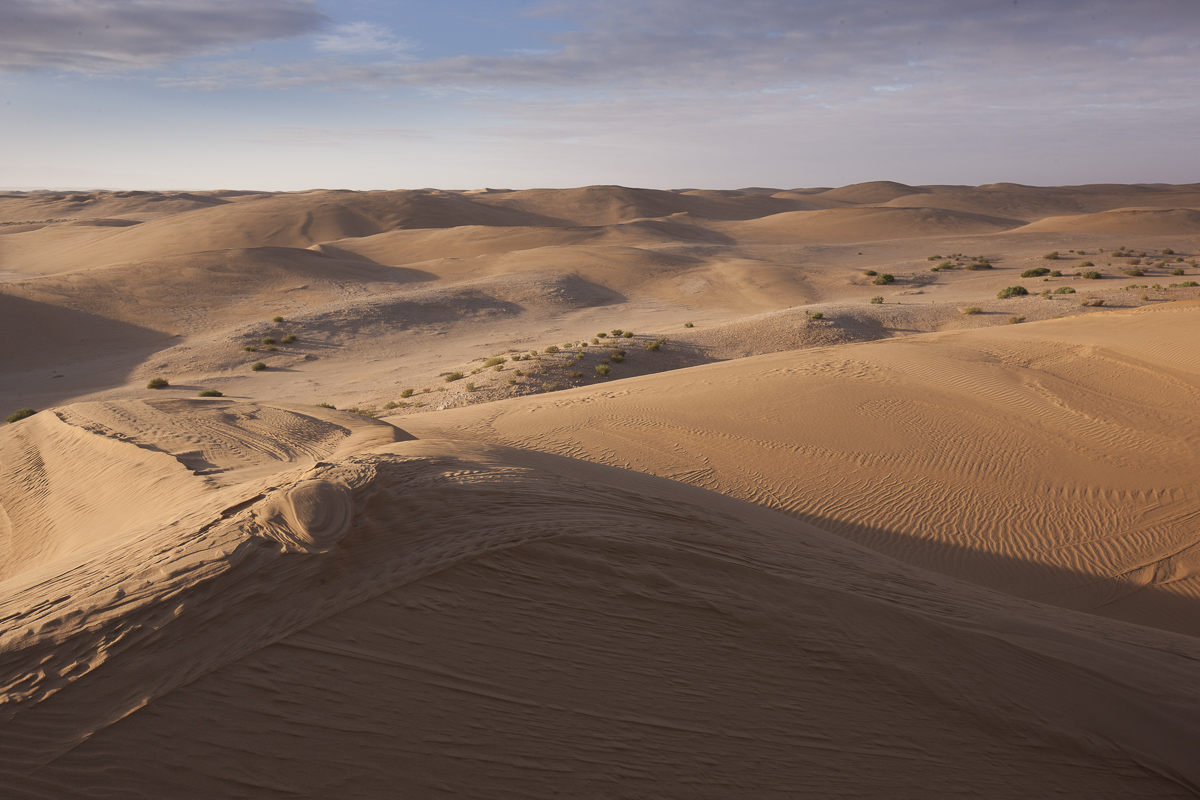

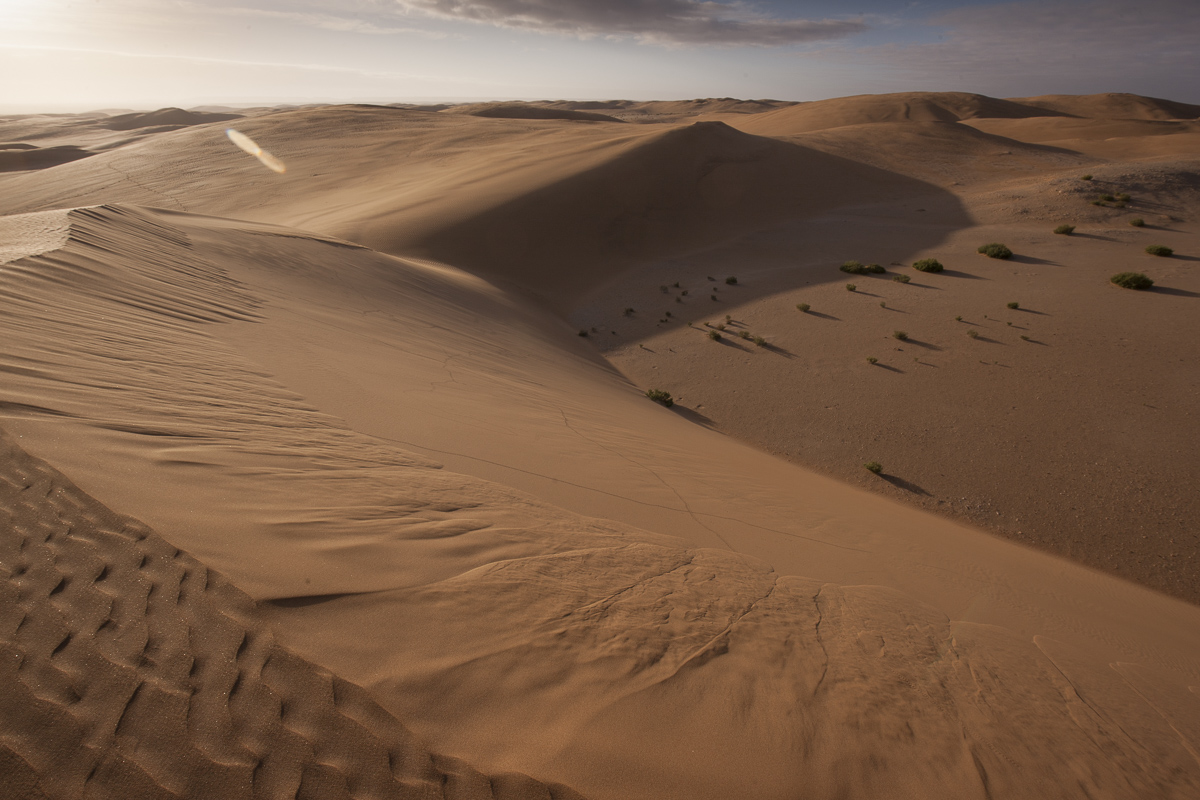

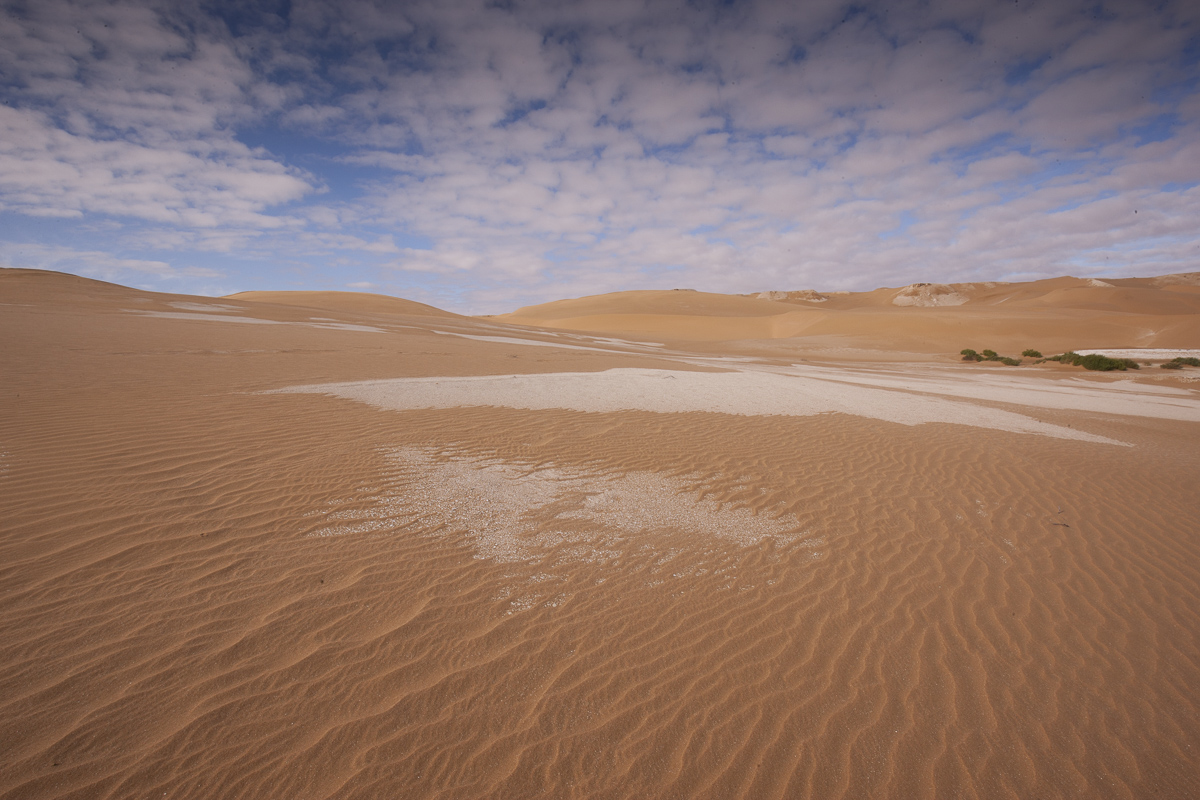
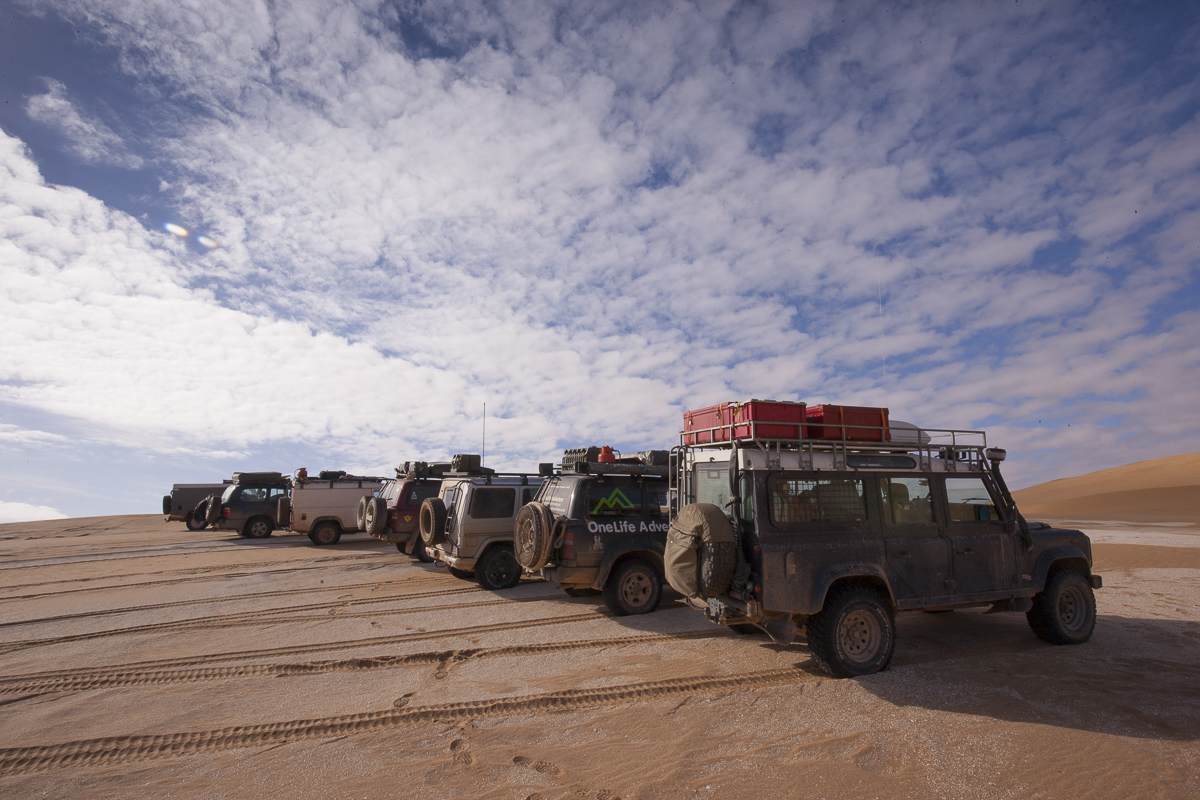
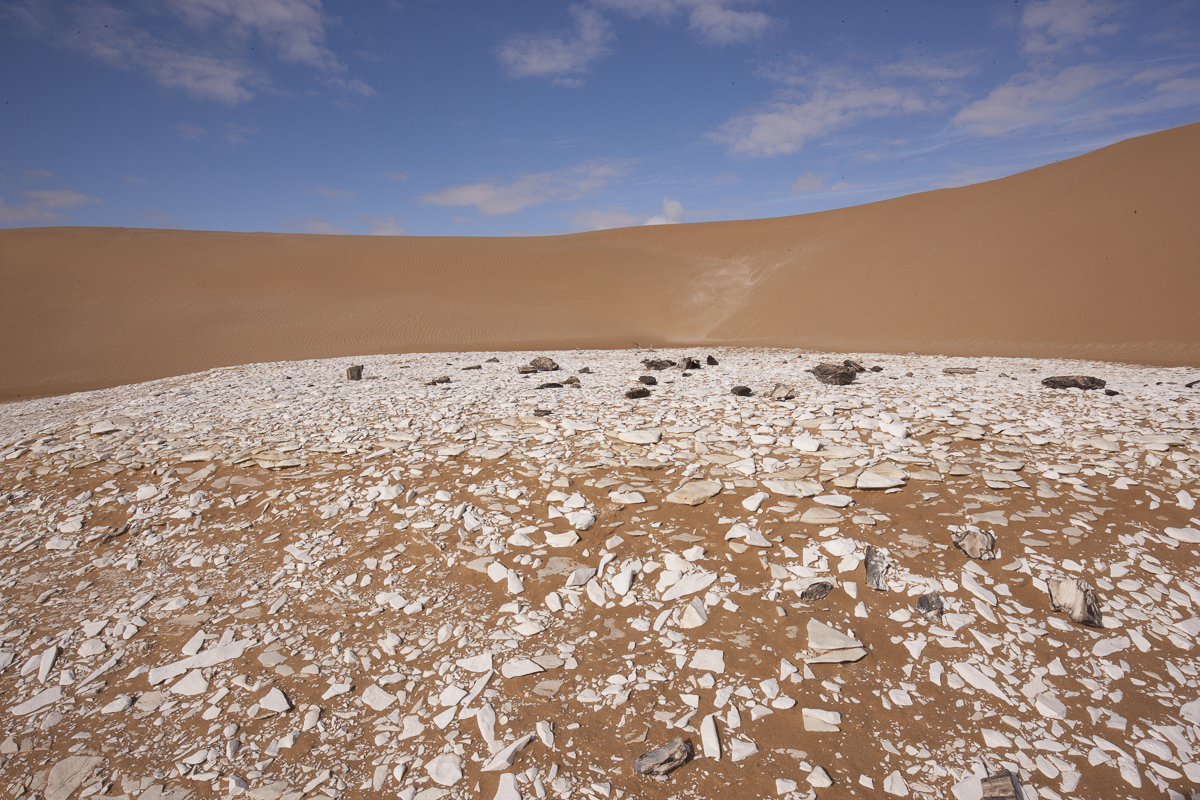
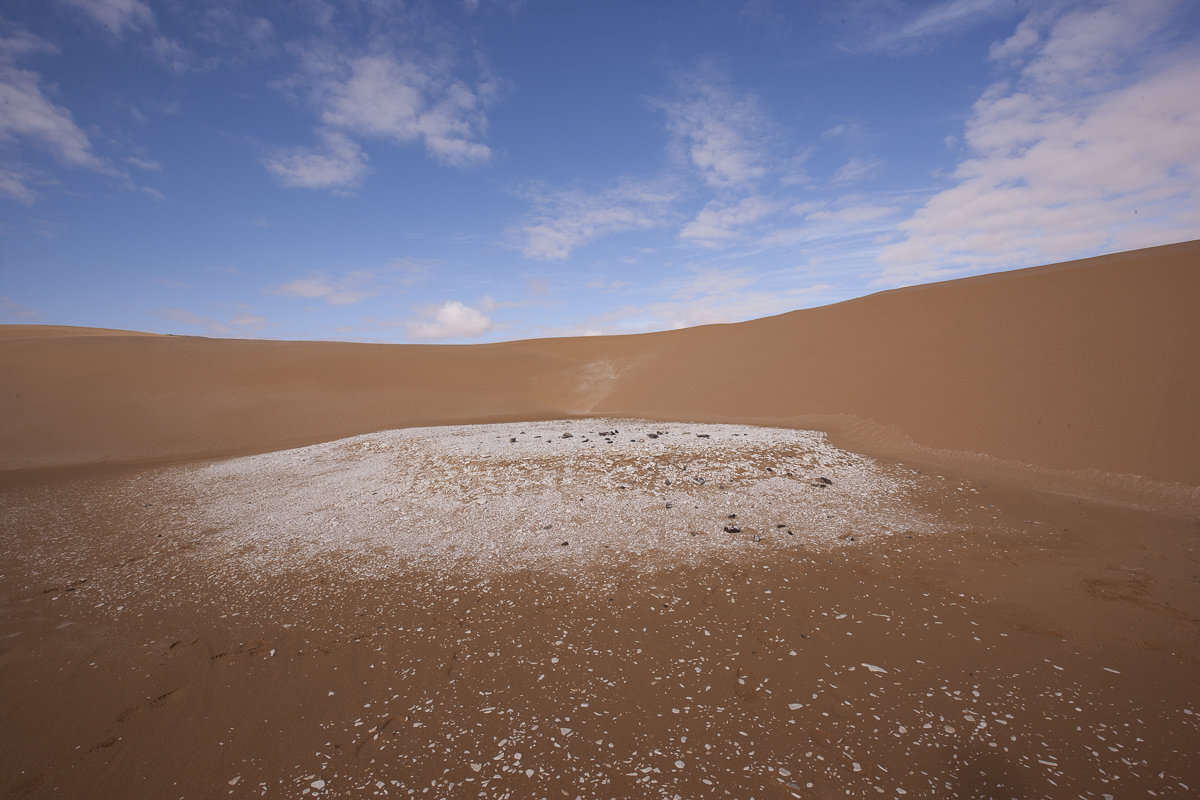
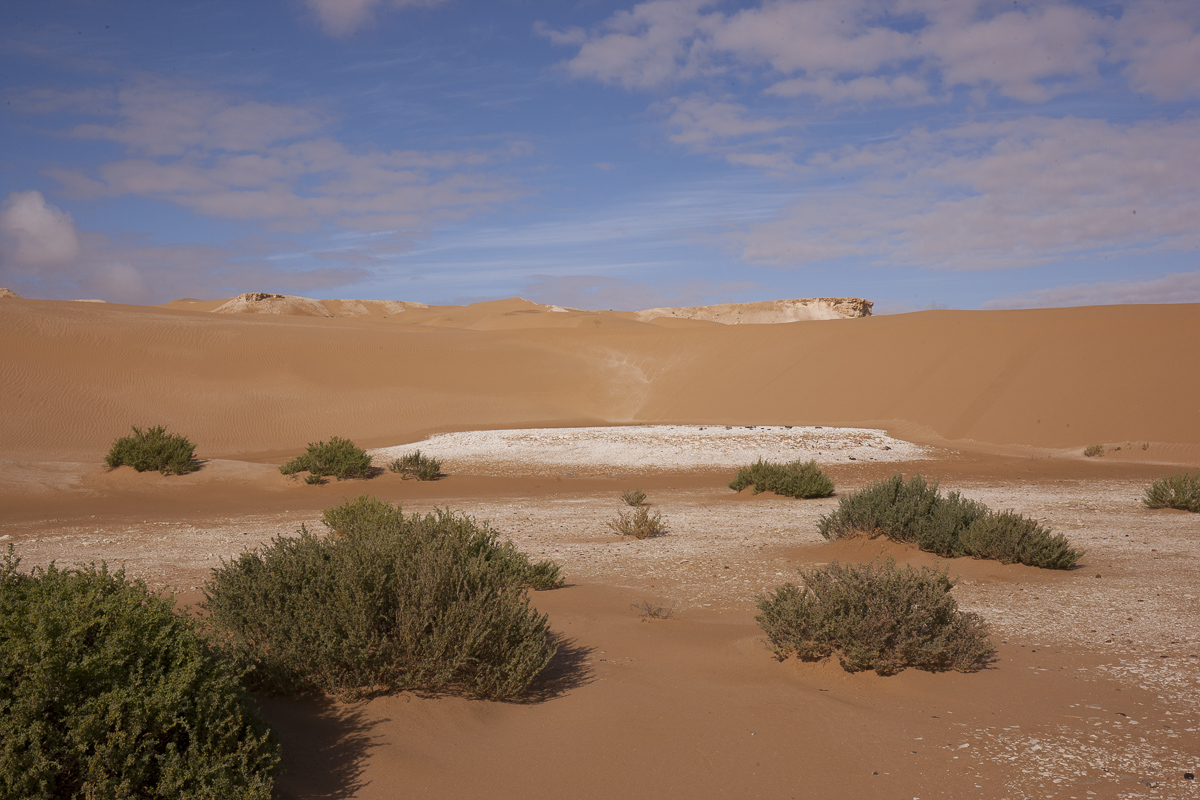

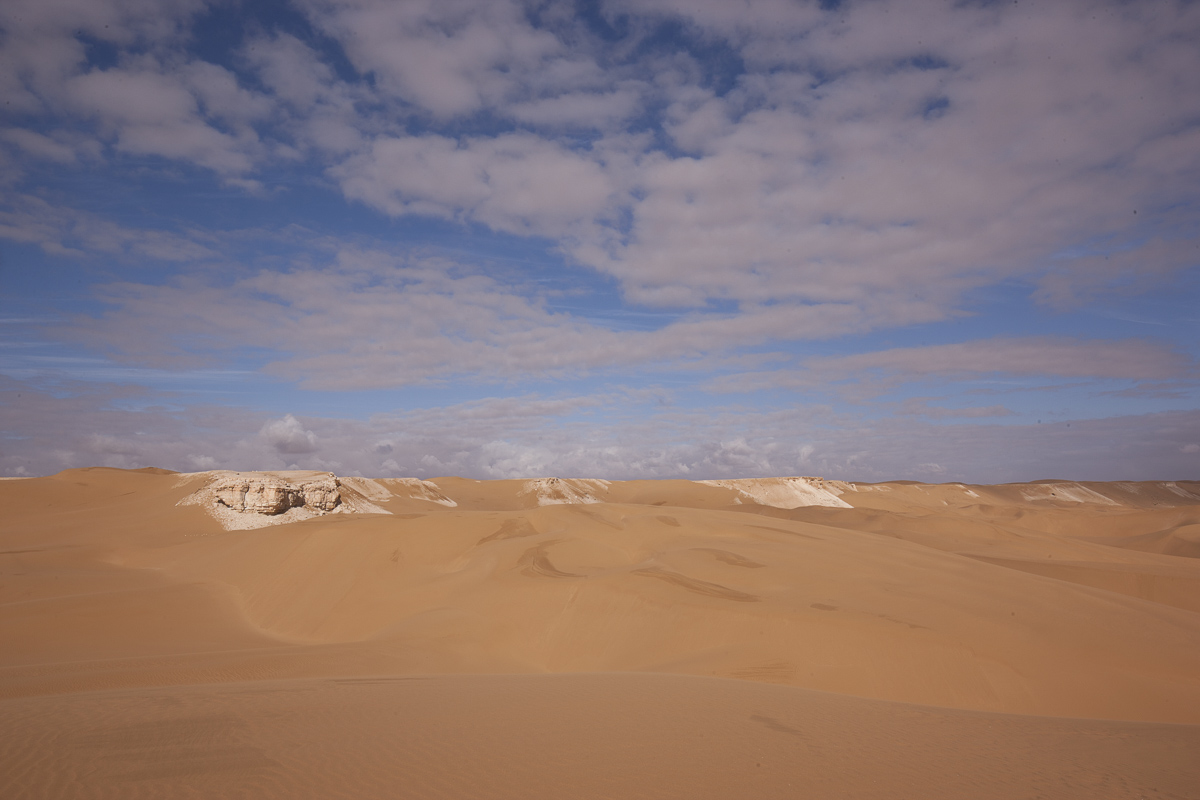
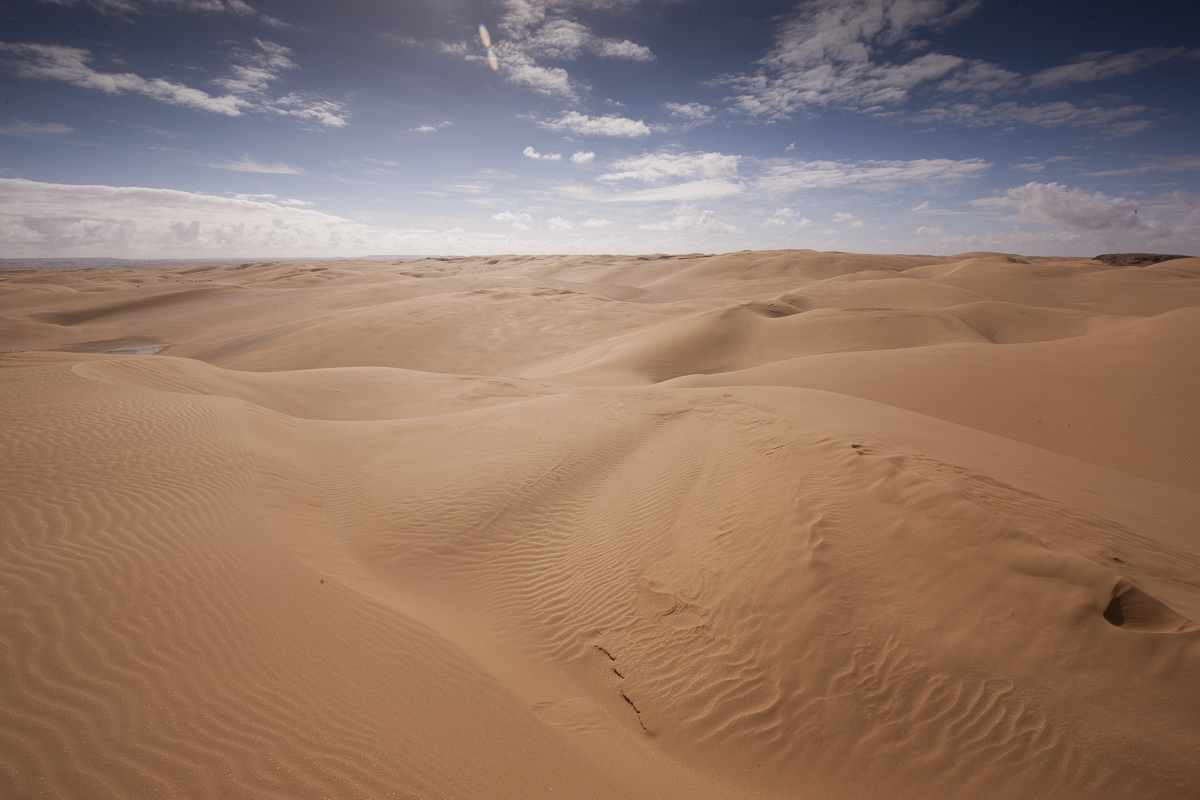
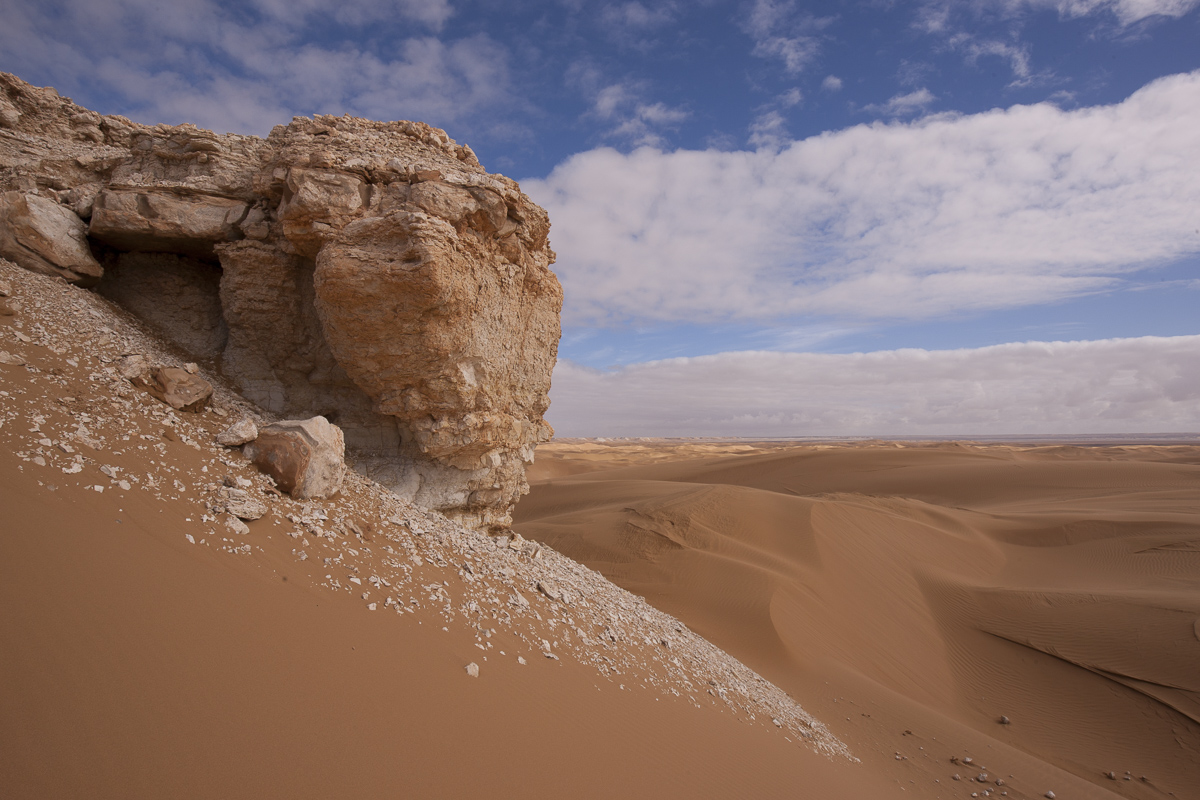
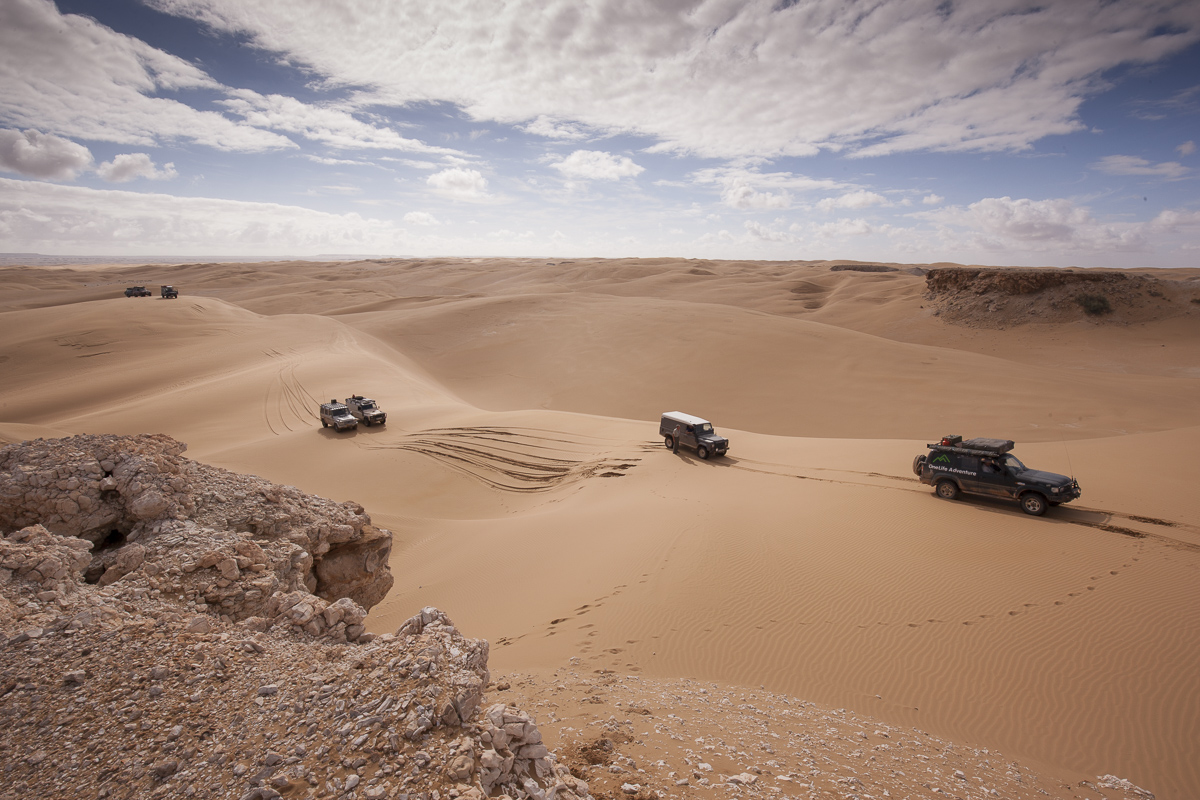


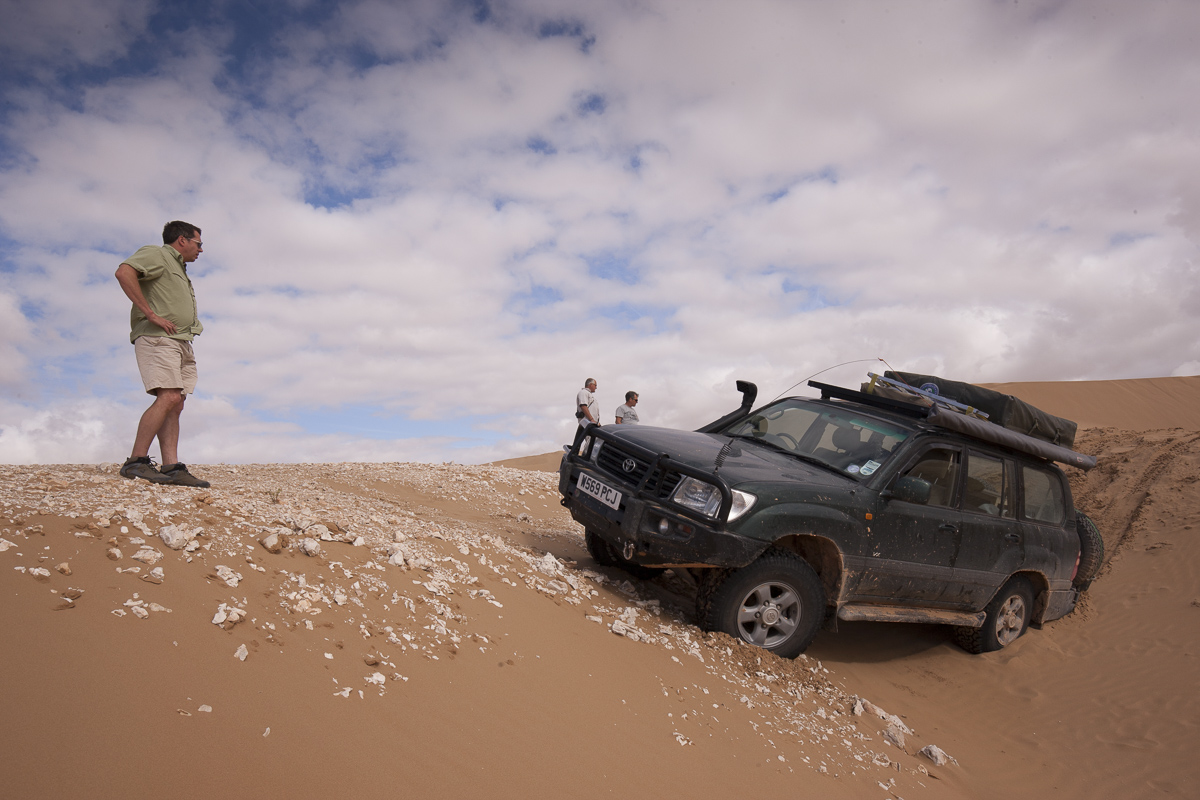
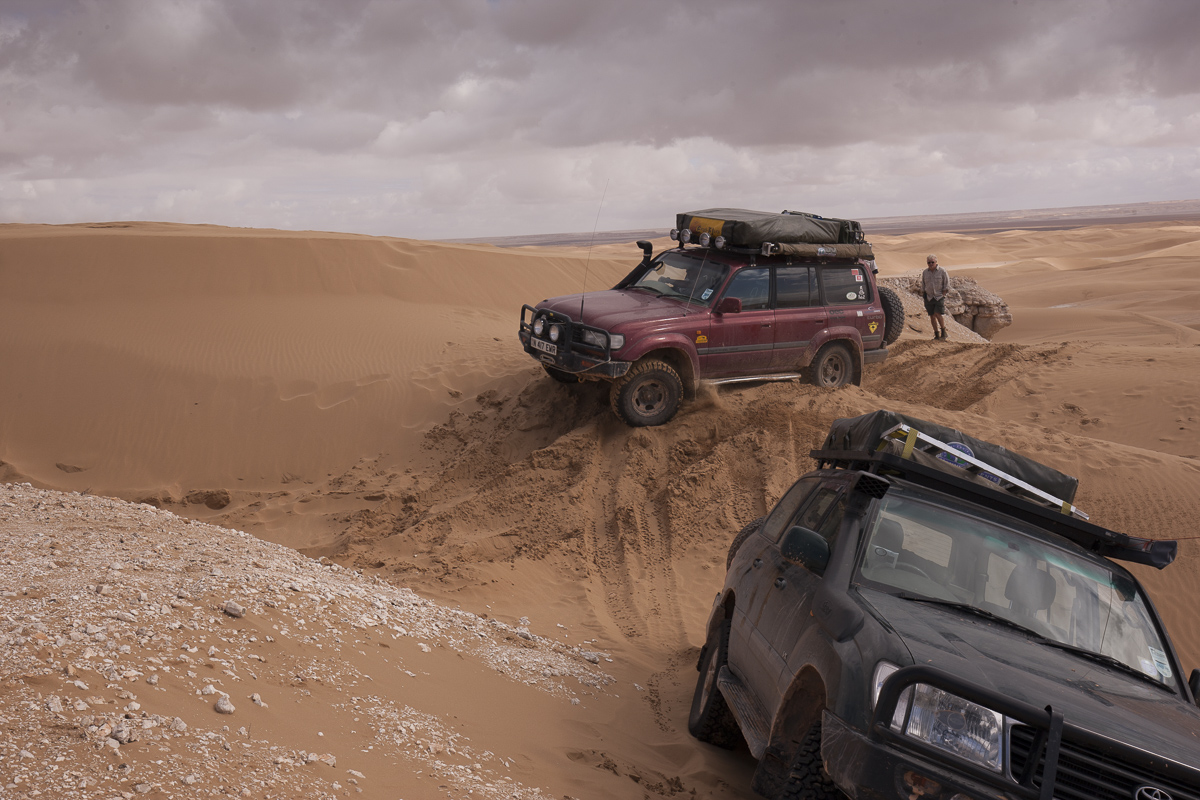
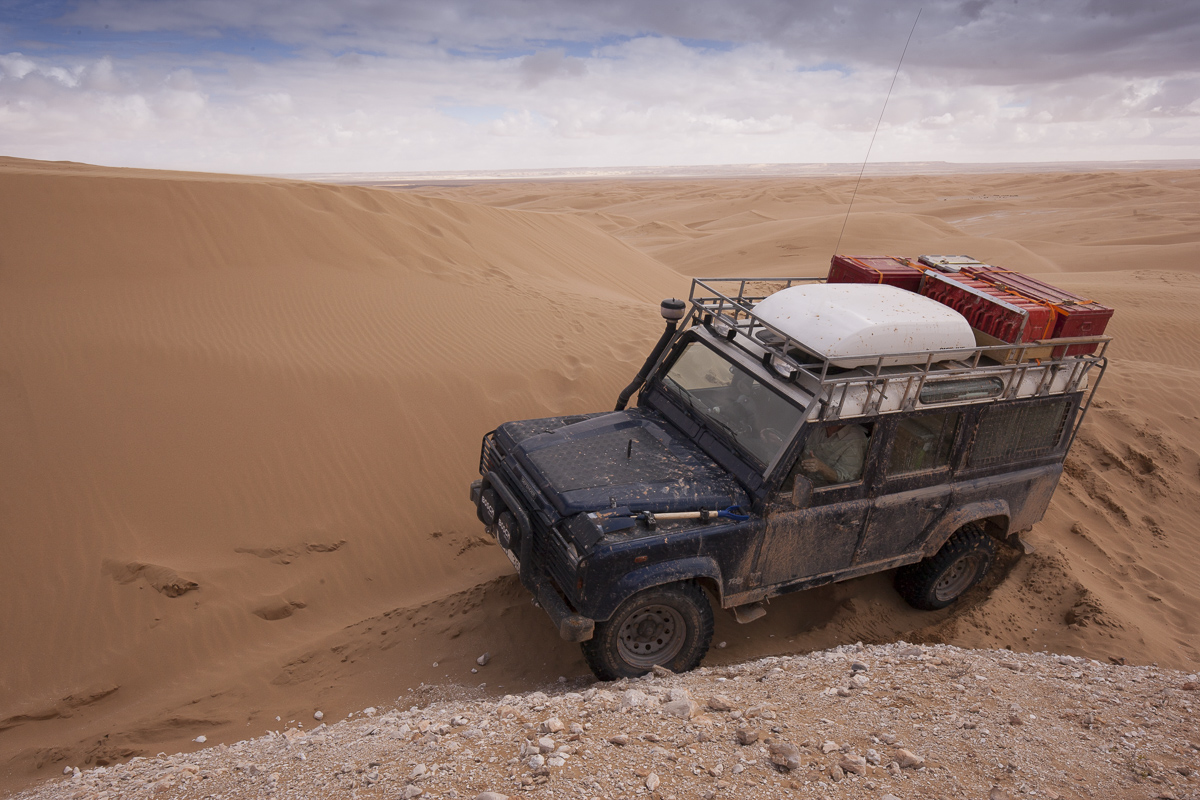
http://gwagendays.com/explore/western-sahara-21-2014.asp?id=51
It´s strange how we over time adapt or adjust to a certain level of reference. By this I´m referring to the fact that I remember today as being a very easy and rather non-eventful day in the desert. And that´s actually not true.
The weather showed us her very best, blue skies, sunshine and warmth. And the Western Sahara presented us with some amazing scenery, dunes bigger that I have ever seen, and a great view over the desert from an elevated plateau. The dunes had dried out a bit more today, and when we had to climb a very steep and long inclement we finally had to air down a bit more. Steve were struggling a bit in his huge 100-series with its big overhang and hence poor approach- and departure angles, and gut stuck between a hard face filled with small stones and some soft sand. We had to winch him out.
After a pleasant drive north along the dune belt, which we had to follow quite closely because the desert west of the dunes were quite wet, with sanding surface water in many places. We made camp for the night down-wind from a dune, somewhere south from the conveyer-belt feeding the Jorf Lasfar port with phosphate rock.
Phosphate rock mining and processing is one of Morocco's leading industries. All the Moroccan phosphate is produced by the state-owned Office Chérifien des Phosphates, founded in 1920, whic is responsible for managing and controlling all aspects of the phosphate mining. The combined capacity of the main facilities—at Youssoufia, Benguerir, Bou Craa, Sidi Chenan, and Khouribga—was 27 million tons per year.
The Office Chérifien des Phosphates (OCP), is the world's largest exporter of phosphates and derivatives. OCP already controls around 45 percent of the market for lime phosphate, and more than 30 percent of global phosphate exports – and they're looking to expand. As part of this expansion strategy, the company has implemented a significant investment program that includes a EUR 90 million contract with Danish owned FLSmidth to supply equipment for a phosphate terminal at Jorf Lasfar port.





















http://gwagendays.com/explore/western-sahara-21-2014.asp?id=51
thebigblue
Adventurer
Day 16-19
Upon approaching the bridge across the wadi I could easily tell that many things were out of the ordinary today. The bridge that normally runs above and across it connecting the two banks of the wadi was submerged under a constant flow of water, mud and debris. Old cars and beat-up lorries were parked allover the place on each side of the wadi in a chaotic mess. Local Moroccans stood speechless and stared in awe in the now very heavy downpour, a state of mind that seemed so distant from their usual loud and gesticulating behavior. Everything were certainly far from being normal today. Traffic had come to a hold, only a single lorry passed the flooded bridge, giving us the opportunity to establish that it seemed that the tarmac on the submerged bridge was still there. So we those to cross it.
These last three days getting out of the Western Sahara and back north into Morocco has certainly been a bit different, not much has really passed as planed.
The other day, on the first of the last three, we begun the day by driving on the Atlantic coastal road, in sunshine and fine weather, and made a lunch-break in a nice spot only a stone-throw from the ocean, under a blue sky with a few scattered clouds. After that memory it all is a bit blurred to me, I did not bring a GPS or other logging device with me, and I apparently have lost track of in which order we did overnight camp. My best guess on the order of event will be that after the lunch at the sea, in nice conditions, it all got very wet with another passover from some heavy rainclouds. We had a long day on tarmac going north, and the weather were really awful for the rest of the day. And so we all agreed to spend the first night on this entire trip in a camping-ground and not wild-camp. The camping-ground in the northern outskirts of Marrakesh where naturally pretty much flooded with water from the rain.
But for the first time, in almost three weeks, we all sat indoors sheltered from the outside at a table and had a nice dinner served for us. We all enjoyed this precious moment, and the luxurious shelter from the rain. The next morning gifted us with a few hours without rain, and it mainly stayed dry for as long as after midday. In the late afternoon we reached the piste leading to the classic Plage Blanche drive. Again we would learn that rainfall on theses grounds in Morocco will leave them wet and slippery for a very long period of time. We struggled on the muddy piste in order to make good progress towards Plage Blanche, but then suddenly the piste disappeared, the heavy rainfall had simply washed it away, leaving just a deep wound in the terrain. Our only option were to head up the valley from where the water had rushed, to try to find a passage towards the beach, not an easy task in the dull grey weather with such poor contrast.
After some time we had to quit, darkness crept in on us and we had to make camp for the night. We would not have enough time to get onto the beach and make camp there. I had spotted a potential crossing when we drove into the valley, and I suggested to Paul that we could head that way to scout while the others set up camp for the night. We would try to establish if it would be possible to get onto the beach the following day, or if we simply had to backtrack to the tarmac we had left earlier.
After a windy night we woke to a cloudy morning with scattered rainfall. We made it out of camp early and followed our own tracks back to tarmac. Reaching Plage Blanche would be a risky adventure, and most likely an impossible mission. When driving on tarmac we later crossed the wadi that runs all the way down to the beach where you would have to cross it to get onto Plage Blanche, we could see that we had made the right call, the wadi had risen way above its banks. For the rest of the day we drove in heavy rainfall, through flooded villages, on flooded roads and over flooded bridges. The only luck we really had was to get onto some stretches of road just in time before they were closed by the police and military because of the substantial flooding.
Our last wild-camp in Morocco was supposed to be at the beach-break from the Atlantic Ocean, some two hours driving from Tanger Med. Again we did not make it to the beach, the gravel-road leading down to it was to soaked and muddy that we had to turn around and make camp in a small quarry. The night-sky were again filled with clouds and we had some scattered rainfall before calling it an early night. On the last day in Morocco most of the travel-party were eager to get out of camp, so we left camp early and headed towards Spain and Ceuta. When we reached the border-crossing the sky had again regained its blue color, and temperatures had risen to a more normal level. We were blessed with a taste of summer while waiting for the ferry that would bring us back to Algeciras and Europe.
Its strange how a few hours with sunshine and blue skies quickly will make you forget three days of rain, that´s one of the nicer gifts that modern homo sapiens has.

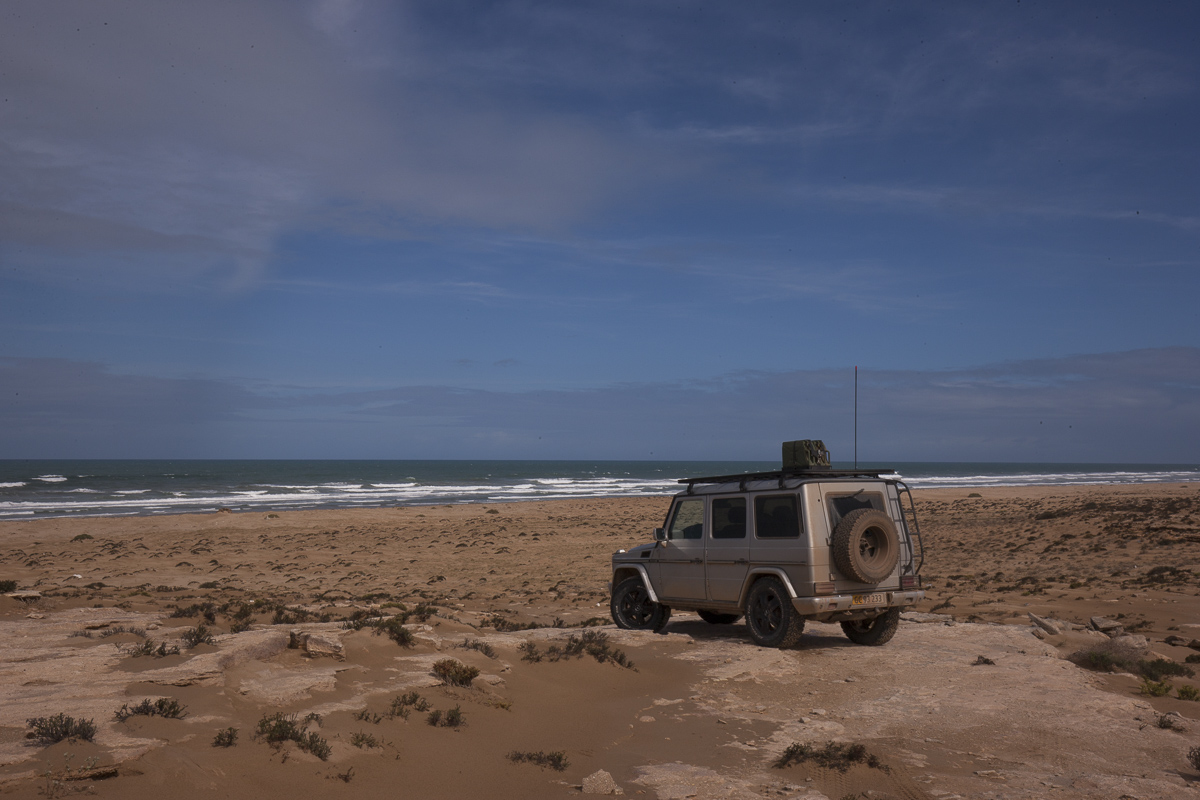
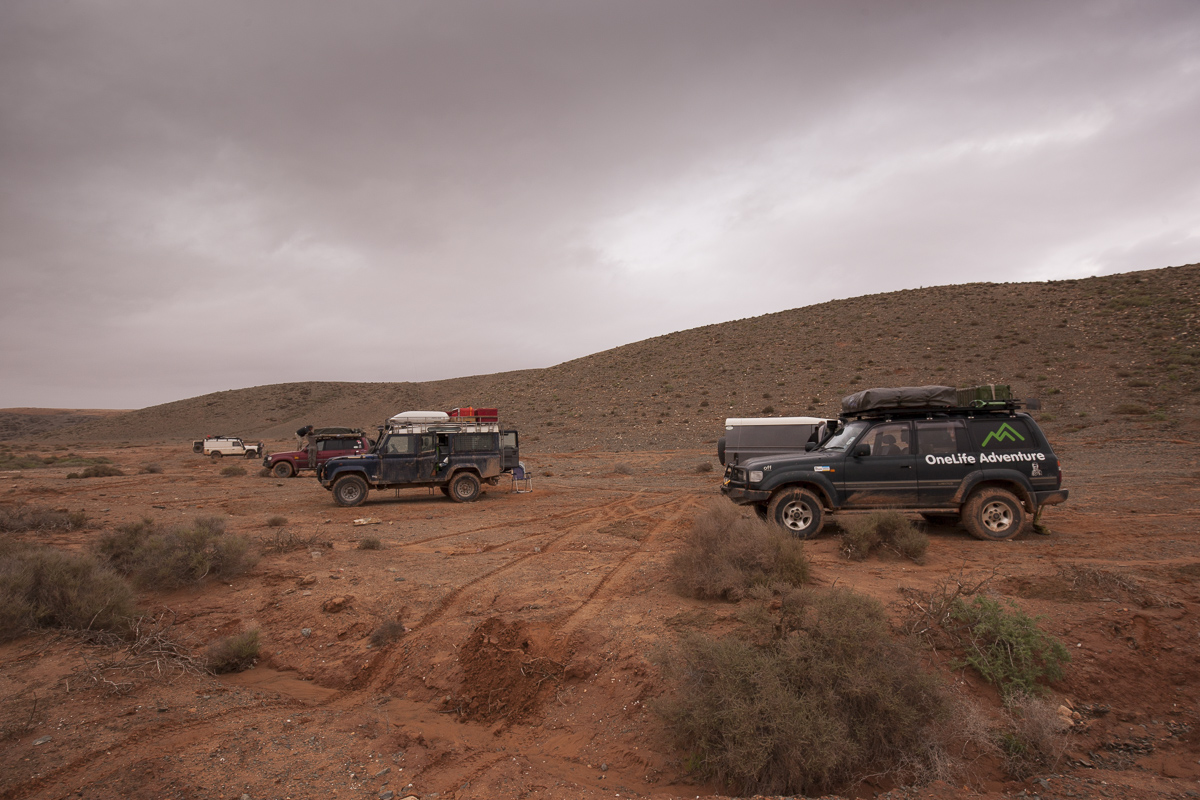
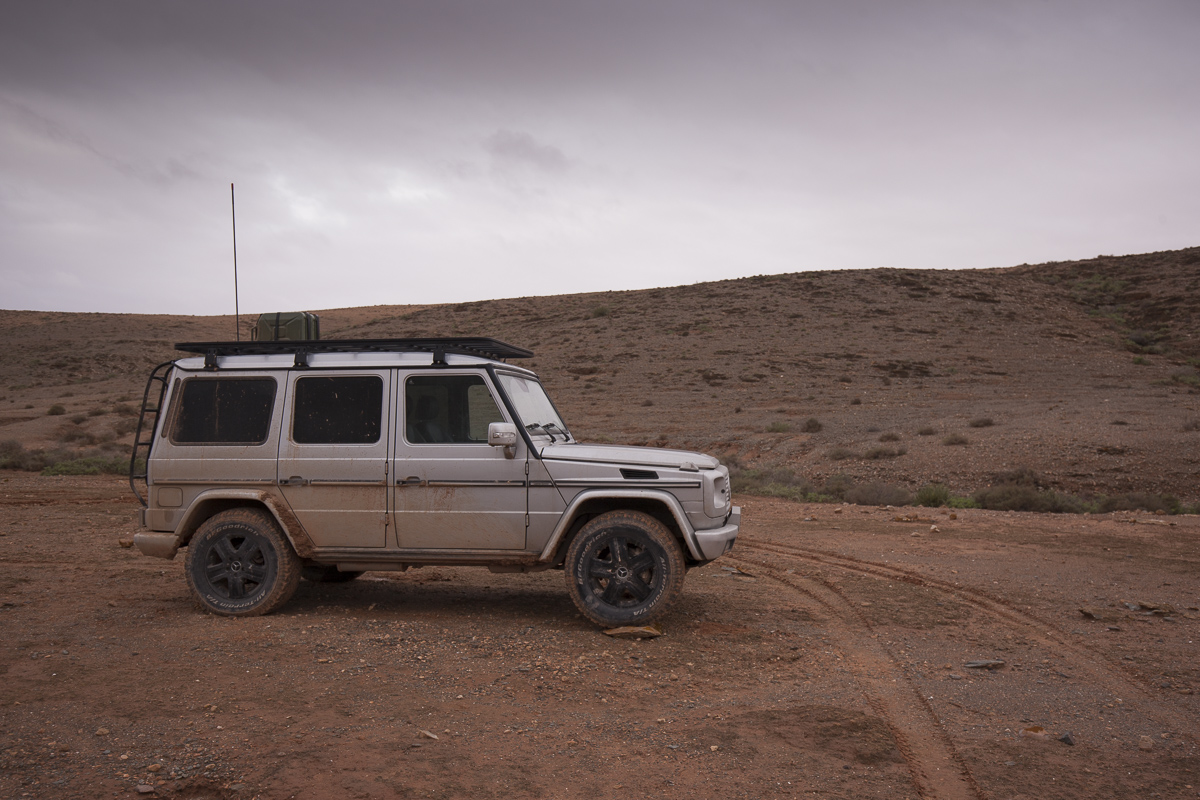

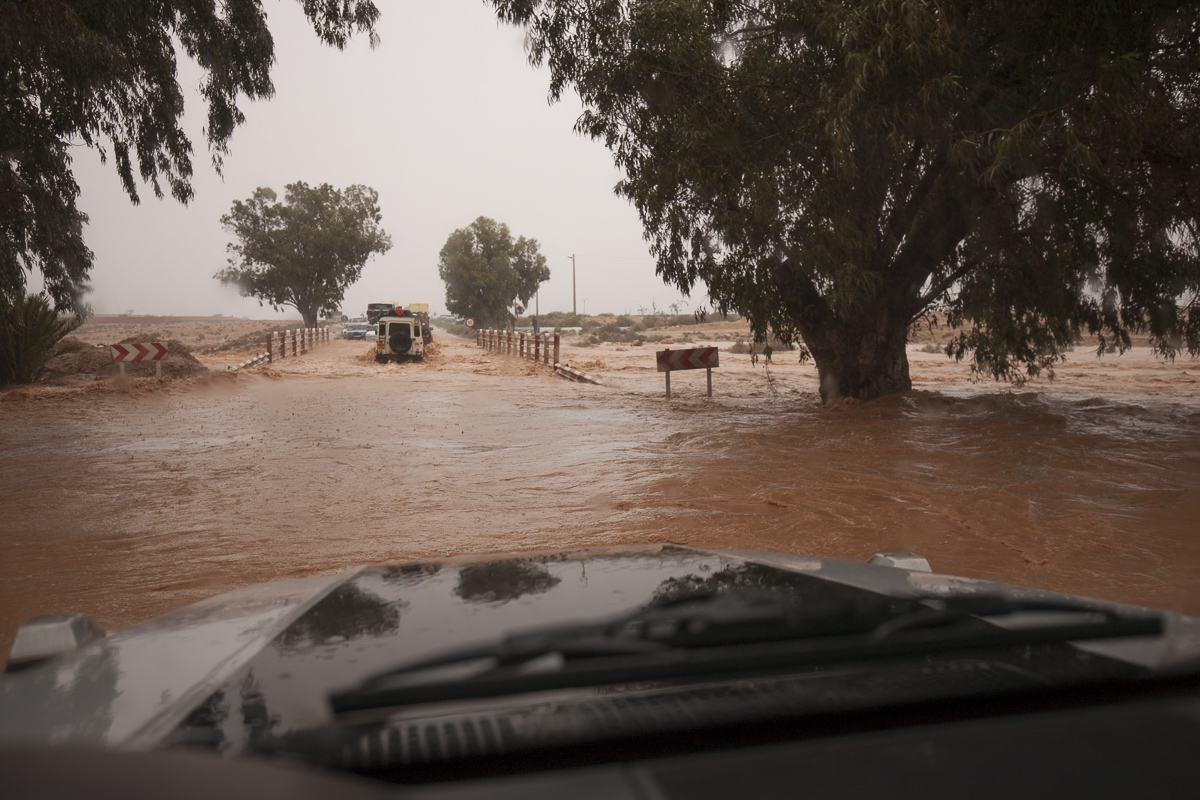
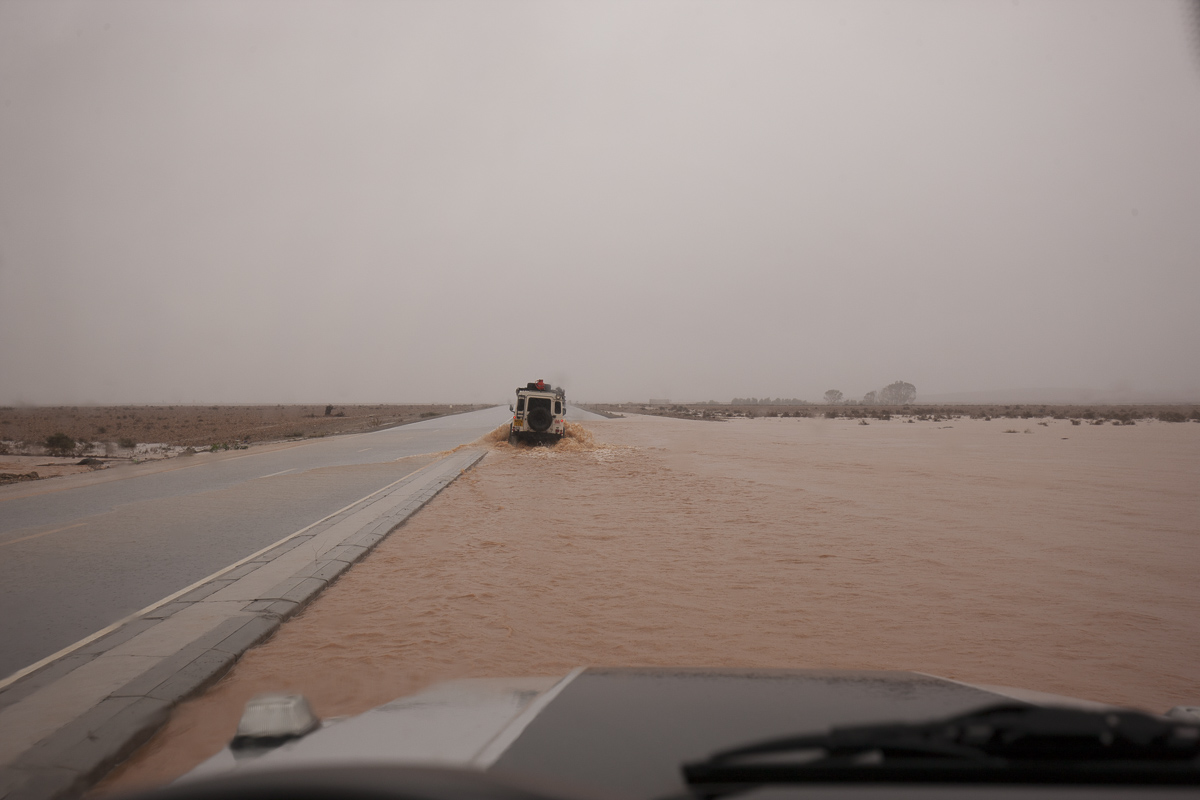
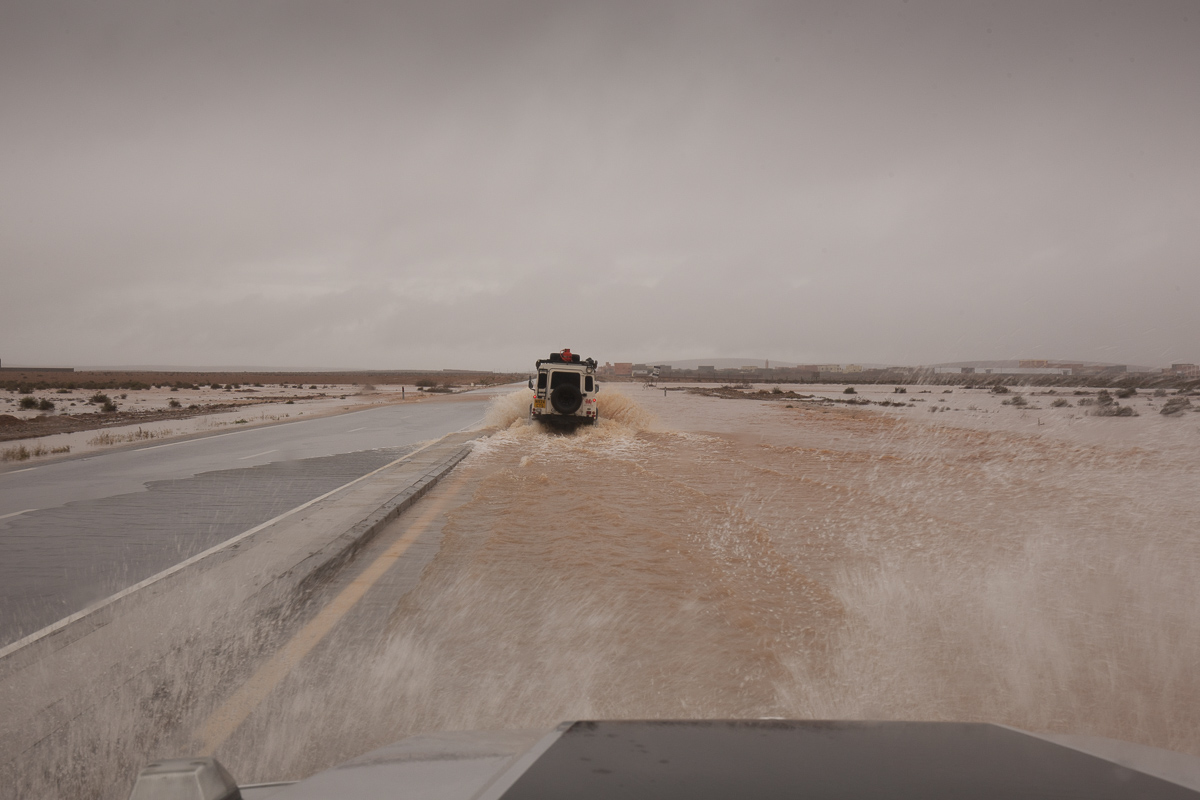
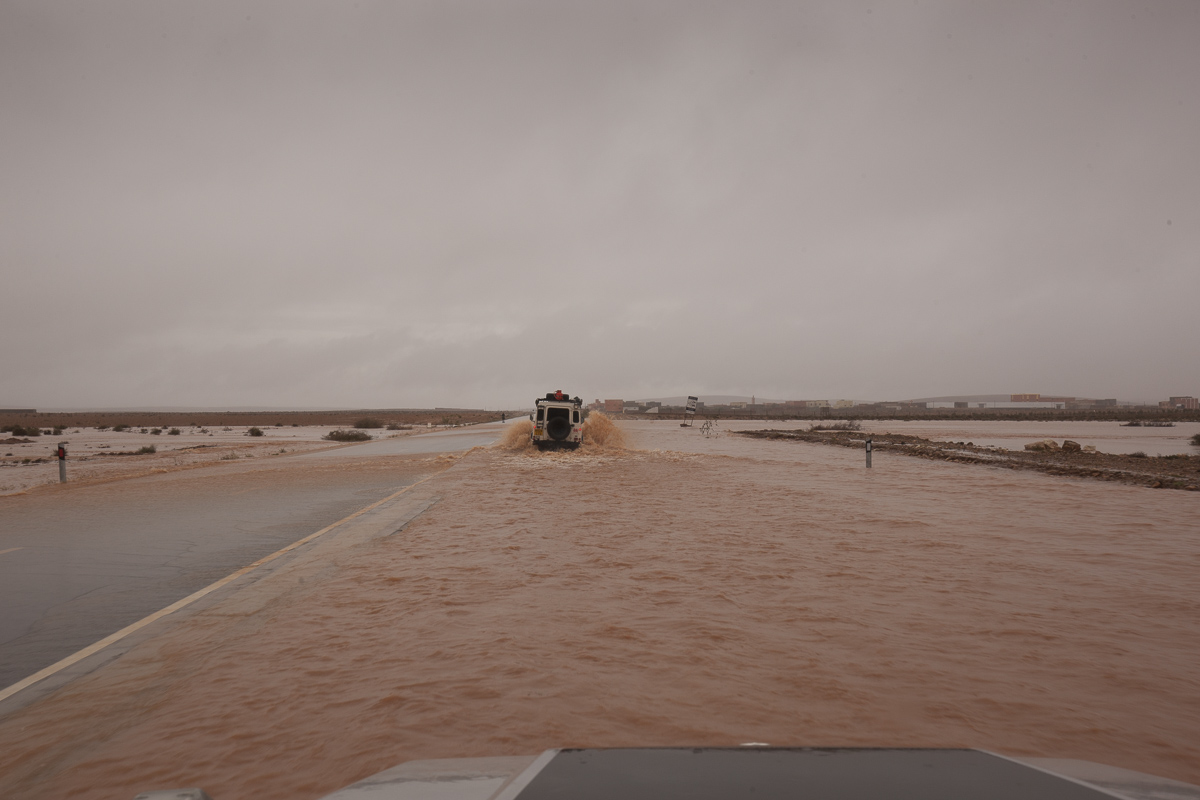

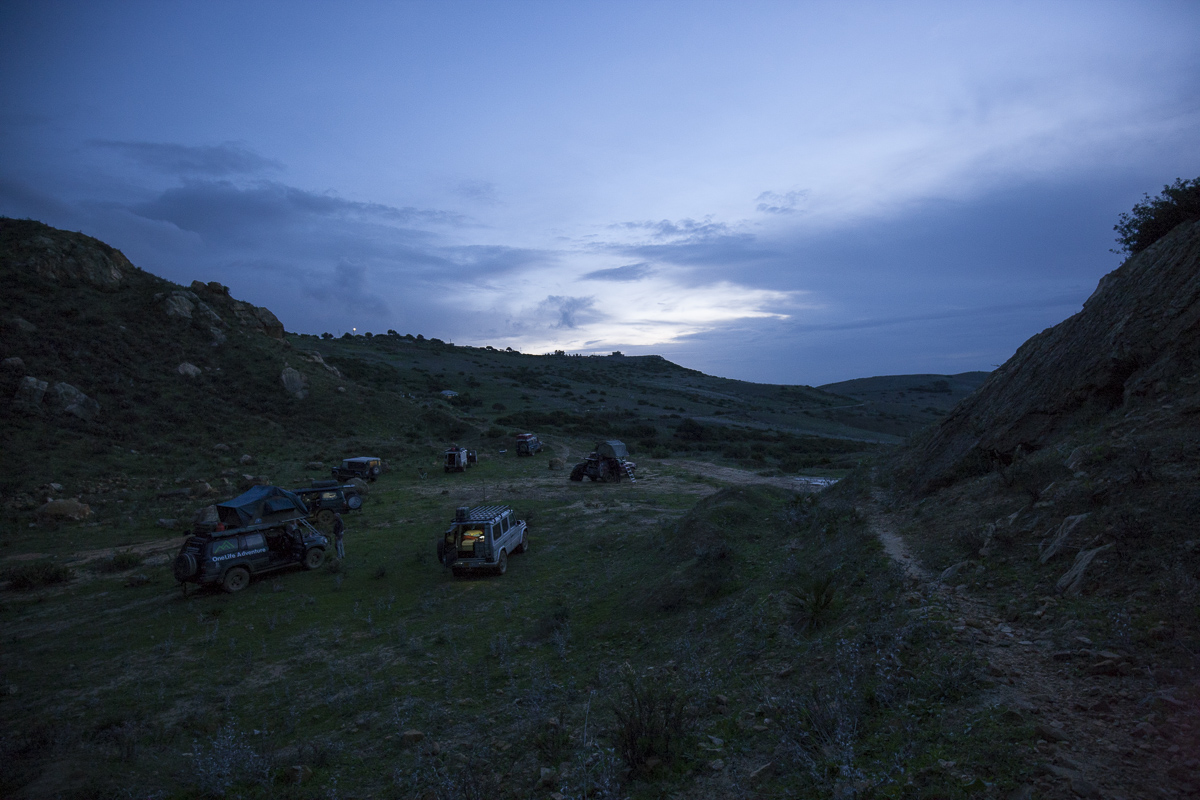
http://gwagendays.com/explore/western-sahara-22-2014.asp?id=52
--- FIN ---
Upon approaching the bridge across the wadi I could easily tell that many things were out of the ordinary today. The bridge that normally runs above and across it connecting the two banks of the wadi was submerged under a constant flow of water, mud and debris. Old cars and beat-up lorries were parked allover the place on each side of the wadi in a chaotic mess. Local Moroccans stood speechless and stared in awe in the now very heavy downpour, a state of mind that seemed so distant from their usual loud and gesticulating behavior. Everything were certainly far from being normal today. Traffic had come to a hold, only a single lorry passed the flooded bridge, giving us the opportunity to establish that it seemed that the tarmac on the submerged bridge was still there. So we those to cross it.
These last three days getting out of the Western Sahara and back north into Morocco has certainly been a bit different, not much has really passed as planed.
The other day, on the first of the last three, we begun the day by driving on the Atlantic coastal road, in sunshine and fine weather, and made a lunch-break in a nice spot only a stone-throw from the ocean, under a blue sky with a few scattered clouds. After that memory it all is a bit blurred to me, I did not bring a GPS or other logging device with me, and I apparently have lost track of in which order we did overnight camp. My best guess on the order of event will be that after the lunch at the sea, in nice conditions, it all got very wet with another passover from some heavy rainclouds. We had a long day on tarmac going north, and the weather were really awful for the rest of the day. And so we all agreed to spend the first night on this entire trip in a camping-ground and not wild-camp. The camping-ground in the northern outskirts of Marrakesh where naturally pretty much flooded with water from the rain.
But for the first time, in almost three weeks, we all sat indoors sheltered from the outside at a table and had a nice dinner served for us. We all enjoyed this precious moment, and the luxurious shelter from the rain. The next morning gifted us with a few hours without rain, and it mainly stayed dry for as long as after midday. In the late afternoon we reached the piste leading to the classic Plage Blanche drive. Again we would learn that rainfall on theses grounds in Morocco will leave them wet and slippery for a very long period of time. We struggled on the muddy piste in order to make good progress towards Plage Blanche, but then suddenly the piste disappeared, the heavy rainfall had simply washed it away, leaving just a deep wound in the terrain. Our only option were to head up the valley from where the water had rushed, to try to find a passage towards the beach, not an easy task in the dull grey weather with such poor contrast.
After some time we had to quit, darkness crept in on us and we had to make camp for the night. We would not have enough time to get onto the beach and make camp there. I had spotted a potential crossing when we drove into the valley, and I suggested to Paul that we could head that way to scout while the others set up camp for the night. We would try to establish if it would be possible to get onto the beach the following day, or if we simply had to backtrack to the tarmac we had left earlier.
After a windy night we woke to a cloudy morning with scattered rainfall. We made it out of camp early and followed our own tracks back to tarmac. Reaching Plage Blanche would be a risky adventure, and most likely an impossible mission. When driving on tarmac we later crossed the wadi that runs all the way down to the beach where you would have to cross it to get onto Plage Blanche, we could see that we had made the right call, the wadi had risen way above its banks. For the rest of the day we drove in heavy rainfall, through flooded villages, on flooded roads and over flooded bridges. The only luck we really had was to get onto some stretches of road just in time before they were closed by the police and military because of the substantial flooding.
Our last wild-camp in Morocco was supposed to be at the beach-break from the Atlantic Ocean, some two hours driving from Tanger Med. Again we did not make it to the beach, the gravel-road leading down to it was to soaked and muddy that we had to turn around and make camp in a small quarry. The night-sky were again filled with clouds and we had some scattered rainfall before calling it an early night. On the last day in Morocco most of the travel-party were eager to get out of camp, so we left camp early and headed towards Spain and Ceuta. When we reached the border-crossing the sky had again regained its blue color, and temperatures had risen to a more normal level. We were blessed with a taste of summer while waiting for the ferry that would bring us back to Algeciras and Europe.
Its strange how a few hours with sunshine and blue skies quickly will make you forget three days of rain, that´s one of the nicer gifts that modern homo sapiens has.











http://gwagendays.com/explore/western-sahara-22-2014.asp?id=52
--- FIN ---
shortbus4x4
Expedition Leader
Awesome report. Don't think of excess water and roads being flooded when reading about a trip to the Sahara.
Forum statistics
Members online
- tango2011
- freerider
- matttahoe53
- Cds1vortex
- ActaNonVerba
- WU7X
- wrestler034
- JCAnthony
- Andrew110
- jbtradingco
- adobej
- gfmale
- Gravity
- Arod21
- forty5thparallel
- svmaple
- wild1
- xathor
- SubSar
- yukonh20
- Deleted Member 183
- Icannap1
- Muttle
- tblopa
- Scooooooooop
- MrGrodskyi
- mark5280
- BOHICA
- Skinhyfish
- al415
- TundraBro
- RamFam1718
- Westy
- The Norseman
- kramer
- Lawyerlarry
- BoToLander19o4
- Kochantrl
- WillySwan
- Banas
- peculierboy
- 03rubicon
- 79 HUSTLER
- MotoDave
- ebrabaek
- aka_vladiator
Total: 860 (members: 49, guests: 811)
